Clock ticking on Field Days



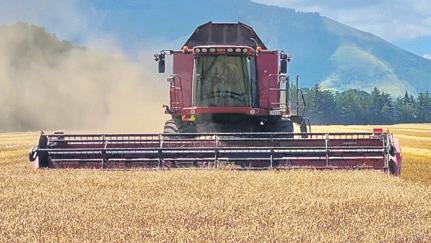
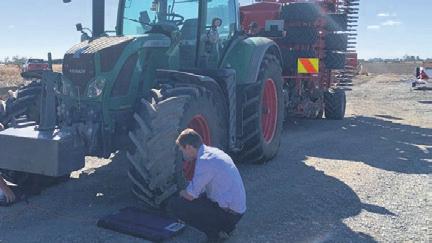


With just on four months until the South Island Agricultural Field Days kicks off, organisers have been feverishly putting the finishing touches to the upgraded Kirwee site and still finding room for exhibitors keen to be part of the South Island’s largest agricultural event.











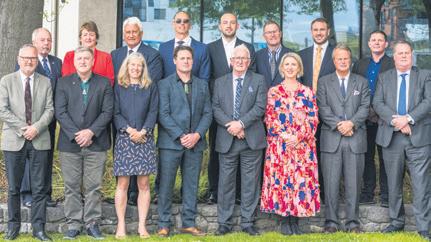

] by Kent caddick

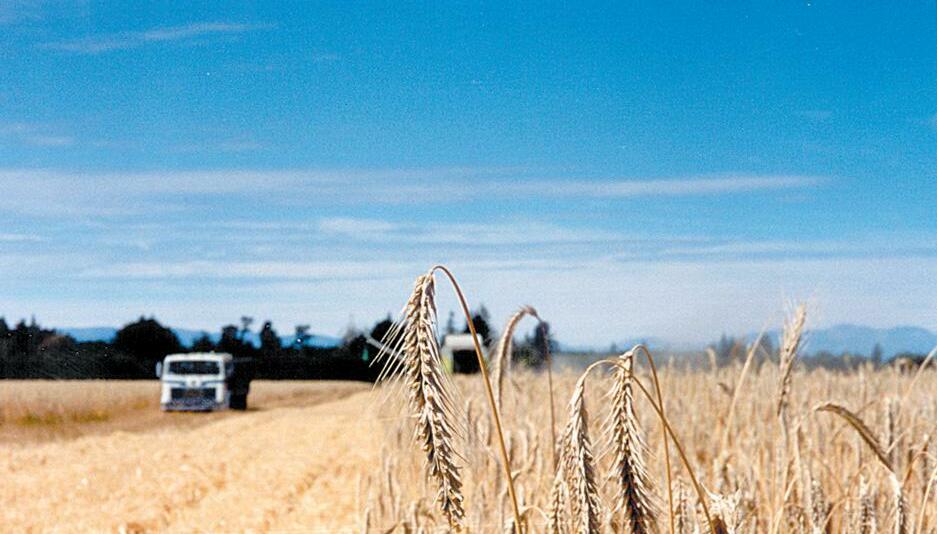
The 2023 biennial SIAFD will be held from March 29 to March 31.
Field days committee chairman Hayden Dorman said the field days just managed to dodge the lockdown bullet in 2021, and 2023 promises to see an even bigger turn out of the latest in agricultural equipment, agritech and products.

“The exhibitors who are either already booked or about to appreciate having the space and facilities to showcase and demonstrate their equipment to visitors who mean business, who are coming because they want to see just how well it performs in the field,” Dorman said.
Since 2021 organisers have doubled down smoothing the site’s network of paved roads, establishing a new water supply, and
expanding the electricity grid throughout providing exhibitors with a reliable, extensive infrastructure to support their stand.
Dorman said interest among farmers and contractors on displays at the 2023 event is heightened because of the difficulty many have had in past years trying to secure gear and equipment due to global shipping issues.

30,287 copies distributed monthly – to every rural mailbox in Canterbury and the West Coast INSIDE THIS EDITION December 2022 Edition TO PAGE 2 Getting the right advice early makes a difference. CALL NOW TO SEE HOW WE CAN HELP: SELWYN 03 348 8480 WEST COAST 03 755 8673 CITY 03 348 8480 PARRYFIELD.COM Judith Bullin, Partner, Parry Field Lawyers Let our team worry for you about the fine print. At Parry Field Lawyers, the trust of our clients is at the heart of our values based practice. Located in what is one of New Zealand's fastest growing communities, at the centre of the country's agricultural heartland, we are proud to offer clients a personal touch and to be based in Selwyn and Hokitika, as well as our city offices. Our partners and team have a strong focus on farming with a particular emphasis on the next generation and succession planning. We can help with private client work including residential property conveyancing, trust formation and administration, wills and Enduring Powers of Attorney. In a commercially thriving community, small business support is a vital part of Parry Field’s expertise. This covers both start ups as well as established small to medium enterprise business who need support with contracts, fundraising and leases. LOCAL LEGAL SPECIALISTS
New ECan faces p7 Milling confidence p22 Growers united p35 New sponsor p40
Plenty of room: There is still time for companies to book an exhibitor’s site at the 2023 South Island Agricultural Field Days (SIAFD).
Demonstration site invaluable addition






















FROM PAGE 1


“With this starting to return to normal, the field days provide an opportunity to really do your homework on what the best purchase decision may be, after some of the challenges in the past couple of years.”
He said the sites easy access, flat contour and central Canterbury location make it equally popular among exhibitors and visitors alike, while the expansive demonstration site is an invaluable addition for contractors and farmers considering investing tens of thousands into new equipment.

“The event is wholly organised and run by volunteers, we all have strong connections to the land either and farmers or contractors, and an appreciation of what is expected when you come along to an event like this, whether to buy or to sell.”
Organisers have worked hard to keep the event focused and relevant for farmers and contractors alike, something Dorman says has been repaid by having a growing core of committed companies that return regularly to the bi-annual event.

“They appreciate the diversity and depth

of farming and contracting across the region, the field days are an opportunity to connect with their loyal customers, roll their sleeves up and really talk about the gear they have, the gear they want and get to see it all working.”

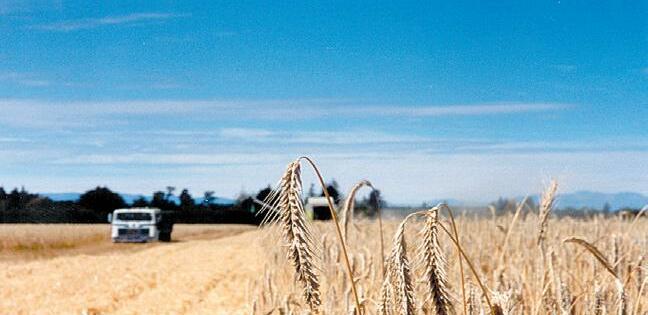
The South Island Agricultural Field Days are also supporting a growing number of agritech exhibitors keen to showcase their latest developments, taking advantage of the wide range of crop and pastoral operators throughout the region looking for technology to optimise fertiliser, water, and land use.

Smart farming tech interest has grown with the lift in connectivity many more rural areas are enjoying, as the need to follow the multiple data flows a farm generates also grows.
“We are keen to talk to exhibitors who may still be considering whether to put a stake in the ground at this year’s event,” Dorman said.
“Given the growth we have enjoyed in the past, and the strong level of optimism that is in the farming sector despite its many challenges, the field days are a very cost-effective, enjoyable mans to tap into that.”

There is still time for exhibitors to book their site at the event. For more information go to: www.siafd.co.nz
Moving on
Kia ora Kent,
Thank you for your article, “Better for climate does not mean sacrificing quality”, in the November 2022 edition of Canterbury Farming.
I read it with much interest laced with a great amount of desperation at why New Zealand persists in this game of trying to reduce the harmful impacts of animal agriculture, when in fact time is against them and they really should be asking for research or lobbying Government to help farmers move away from this false economy.
While I do not eat meat or dairy, I am not coming at this from an animal welfare perspective this time, I am coming at this from a perspective that looks at the long term affects this persistent ‘head banging against a brick wall syndrome’ will have on future generations when the game is finally up, and farmers will be required to farm more sustainably (plant based) and there has been no research done to help in transitioning these families and the economy across.
If nearly half of New Zealand’s greenhouse gas emissions come from agriculture does no one think that eventually society will demand that these industries are stopped?
And where does that leave the farmer who knows only one way to support his or her family?
Why is no one taking strong leadership and calling it out and saying: “hey, this train wreck is coming, and we could have helped
these families survive the inevitable, but we had no political will no media courage to call it out”.
How is it ok to leave a generation of families to fend for themselves when this false economy comes calling?
I am writing to you about this because I am in social services, and I can see the social impact the tsunami will have on families when it will be climatically impossible to farm the way we currently do. And it is not fair to not call it out now.
We need a ‘just transition’ for these families. A transition that does not impact on a farmers ability for support their family while at the same time moving away from industries that will be made to stop sooner or later.

So yes, while I enjoyed your article it annoyed me that smart people are reporting on, and smart people are researching, the wrong thing while leaving future generations of Kiwi’s to fend for themselves when the inevitable happens.
We (society, New Zealand, farmers etc) need to talk about it in a way that help future generations because it will be the grandchildren who will look at us with utter despair when their world is unliveable.
Regards and take care,
Luis Arevalo North Canterbury
2 December 2022 CANTERBURY FARMING FARMING NEWS Corner Main South Road and Epsom Road, Sockburn, Christchurch Ph: 03 348 4129 or 0800 655 551 Rangiora Service Centre, 78 Ivory St, Ph: 03 313 7059 www.avoncityford.com We are currently looking to o buy good quality NZ new cars If you are thinking of selling your car please get in touch with our Buyer... Forbes Gourlay | PH: 027 222 5000 WE ARE BUYING!
Look first: The expansive demonstration site at SIAFD is an invaluable addition for contractors and farmers considering investing tens of thousands into new equipment.
UK Free Trade Agreement Legislation
Bill a step closer
] by Kent caddick
The United Kingdom Free Trade Agreement Legislation Bill and the Apple Transitional Export Quota Bill passed their third readings last month.
Minister for Trade and Export Growth Damien O’Connor said these two Bills will enable New Zealand to implement its obligations under the FTA and are necessary to bring the historic agreement into force.
“This is an important milestone in our ratification process and in delivering future economic security for all New Zealanders,” O’Connor said.

“The UK FTA is one of the best deals New Zealand has signed, reflecting the close relationship between our two countries. It will provide unprecedented access to the UK market, eliminating all tariffs on New Zealand exports over time. Immediately on entry into force, 99.5 per cent of New Zealand’s current trade will be able to enter the UK duty free.”

O’Connor said at full implementation, the deal is estimated to boost New Zealand’s GDP by up to $1 billion, with New Zealand exports to the UK estimated to grow by over 50 per cent.
“The UK FTA is a significant addition to New Zealand’s FTA network and will contribute to our diversified trade portfolio, assisting our recovery from the economic impacts of Covid-19.
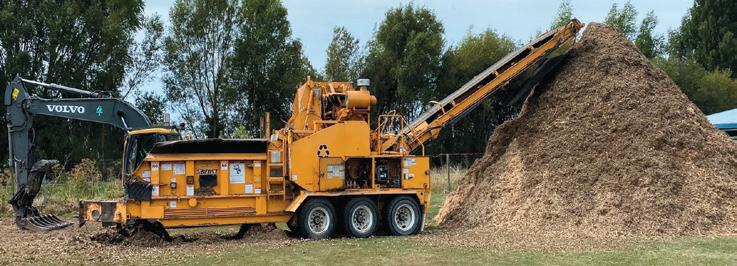


“As the first FTA launched and concluded under New Zealand’s Trade for All agenda,
this agreement sets high ambition commitments in inclusive and sustainable trade. This includes quality outcomes on trade and environment, trade and gender, and small and medium sized enterprises,” O’Connor said.
The Apple Transitional Export Quota Bill, which was split out from the rest of the Bill at committee stage, creates new regime required to administer a transitional apple export quota.

“The Agreement will eliminate all tariffs on apples over three years, with a significant new duty-free quota for off-season exports during this time. This is a fantastic result for our apple growers,” O’Connor said.
“We look forward to the United Kingdom completing its own ratification process, at which point we will work together to set an entry-into-force date for the FTA.
“Our trade agenda has great momentum. We’ve secured four new FTAs in five years and upgraded two existing agreements. In addition, the New Zealand Inc brand was boosted overnight by being ranked number one out of 30 economies in the Trade Sustainability Index, published out of Singapore,” he said.
The United Kingdom Free Trade Agreement Legislation Bill will align New Zealand’s domestic law with obligations in the FTA, including amendments to the Tariff Act 1988, the Tariff, the Customs and Excise Regulations 1996, the Dairy Industry Restructuring Act 2001, the Overseas Investment Act 2005, the Overseas Investment Regulations 2005, and the Copyright Act 1994.
CANTERBURY FARMING December 2022 3 FARMING NEWS Our powerful “tree hugga” grabs and holds the trunk while the blades slice through below. The tree top is then safely lowered to the ground. www.treehugga.co.nz (Ray Monk Contracting Ltd) Perfect for cleaning up shelter belt and tree trimmings. No need to burn. Reduce risk and save hours of work by processing the waste into chip. Overgrown shelter belts or trees shading property? Txt contact details to 027 426 5595 Other Services: Chain saw work Chip / mulch supply Calf bedding supply Land clearing Soil screening Once the mess has been made, DIY or bring on “The Beast”
benefits of
free
are
The
New Zealand’s
trade agreement (FTA) with the United Kingdom
now a step closer with the passing of two Bills.
IDEAL HOME OR INVESTMENT FIXED-PRICE PREFAB HOMES! Would you love a new home or investment property? Now’s the time to buy one a 3 bedroom, 1 bathroom with separate toilet 98m2 home from our popular Value range. Be quick, these stock homes are under construction with fixed-price contracts and won’t last long!
homes are designed to meet 2023 H1 requirements.
Good deal: minister for Trade and export Growth Damien O’connor says at full implementation, the UKFTA deal is estimated to boost New Zealand’s GDP by up to $1 billion, with New Zealand exports to the UK estimated to grow by over 50 per cent.
These
catalog including pricing today,
Download a plan
visit laing.co.nz
Sales
today on
or
Showhome Open weekdays 9am - 5pm or by appointment 15 Hanworth Avenue, Sockburn, Christchurch
Contact our
Consultants
03 3494977
simply email us on info@laing.co.nz
www.laing.co.nz
A comment on emissions pricing













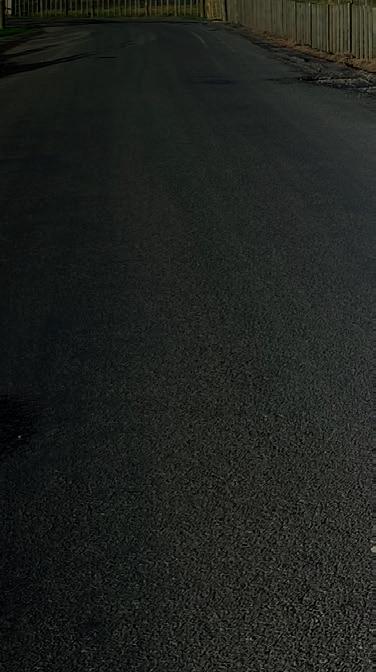








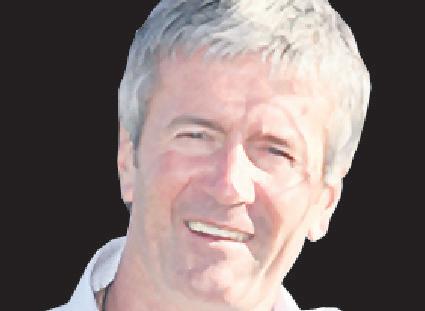










Minister for Agriculture, Biosecurity,




Food Safety and Rural Communities
With consultation completed on the Government’s response to the He Waka Eke Noa partnership’s proposal for pricing emissions, we are now considering the ideas that have come back.
I want to thank everyone who made a submission – especially those who actually read both documents.

I have always been optimistic that in working with the Partnership we will be able to find pragmatic solutions to the areas that we wanted feedback on. Of these, the most significant is sequestration.
Both the partnership and the Government agree that this is complex. So did the Climate Change Commission, for that matter. Complex in terms of accounting, science and management.

For instance, the Canterbury plains are lined with shelter belts. And being tidy farmers and growers, what happens to shelter belts annually? They get trimmed.
How much sequestered carbon is that? I don’t know. I guess you’d have to weigh it and see. What’s the best way to account for that?
You can see the dilemma.
Just as I believe product development through the new Centre for Climate Action on
Agricultural Emissions will provide tools for sheep and beef farmers to reduce the methane they produce, I also believe better measurement technology will come on stream to help us determine sequestration on-farm.
It will come, and when it does we will develop a system that helps farmers claim the work they’re doing.
In the meantime, I want to encourage farmers to keep planting natives, exotics and fencing bush blocks.
Our work will now turn to finding ways to include all sequestration on-farm, where it can be scientifically validated, so it can be rewarded.
I acknowledge that the prospect of change is unsettling, and the questions raised in our response came on top of two years of hard work by the He Waka Eke Noa partnership to put together a good proposal – one which we’ve largely accepted.
Listening to farmers and reading the me-
dia during the consultation period there was one word that was largely absent in the discussion: customer.
Our exports are nothing without a customer.
In November our biggest dairy company indicated it would be expanding its emissions target to ‘Scope 3’ - that is to say including the emissions of its farmers. This has been prompted by the requirements of its customers.

We need to adapt to a changing world before we run out of runway. Our work in this space is about being proactive, finding opportunity to create value, and incentivising and rewarding good practice.
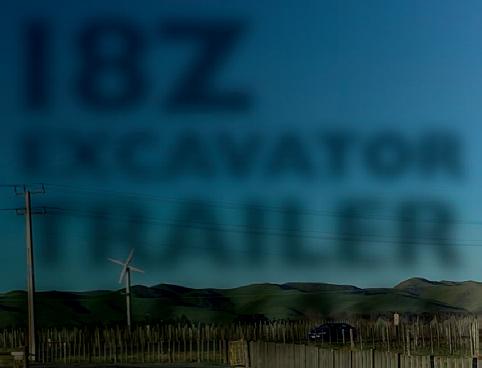
As Christmas quickly approaches, I hope that everyone is looking forward to spending time with family and friends. I know that the work never stops for those in the primary industries, but I do hope that you all get the opportunity to connect with loved ones and enjoy a little R&R.

Thank you all for the hard work you do to deliver prosperity for all New Zealanders. We value your efforts.
I wish you all a very merry Christmas and a prosperous New Year. And may everyone be safe on the roads, and in the rivers and at the beaches.
I hope to use the time to get out and enjoy this wonderful country we all live in. If you see me, stop and say g’day.
4 December 2022 CANTERBURY FARMING FARMING NEWS EXCAVATOR TRAILER PACKAGE 18Z • 1.8t mini excavator • Standard dig bucket • 900mm wide tilt bucket • 4 post ROPS/FOPS frame • 500 hour service and greasing intervals • 3 year, 3000 hour premium warranty • Mounted on tandem trailer ready to go PER MONTH* 1.99% FINANCE$955 Rolleston 1 George Holmes Rd 03 349 5975 Vaughan Wright Sales 027 215 4894 Power Farming Canterbury * Standard lending criteria, fees, terms and conditions apply. For a limited time only. While stocks last. ]
]
]
with Damien O’connor
summer months are here and it’s good to see some warm weather
experienced. I hope tailing has gone well, that pasture covers are
The
finally arriving after the very wet winter and spring that most have
lifting and those with crops are getting a good strike.
Maize growing likely to expand south
Article supplied by


 Foundation for Arable Research
Foundation for Arable Research
Plant & Food Research climate modelling has shown that warming temperatures will allow maize to be grown in areas which have pre viously been marginal for producing an eco nomic maize crop.
Modelling also suggests larger, more fre quent drought events in the North Island. So, depending on future spring and summer rainfall patterns in the north, the South Is land may become a major growing region for maize.
Maize silage demand from the dairy sector is also increasing, as its use can complement pasture-based systems both nutritionally and economically.
However, for maize silage to compete with imported palm kernel expeller (PKE) as a suitable pasture supplement for South Is land dairy farmers, economic yield and con sistent forage quality are required.
For arable farmers, maize can provide an alternative income as well as a number of ag ronomic benefits. These include the oppor tunity to use different herbicide chemistry and utilisation of nutrients that may not have been accessible to shallower rooting crops (reducing the risk of nutrient leaching).
Foundation for Arable Research maize senior researcher David Densley said histor ically, much of New Zealand’s maize agrono my is based on long-established production practices which have been optimised for the major growing regions in the North Island.
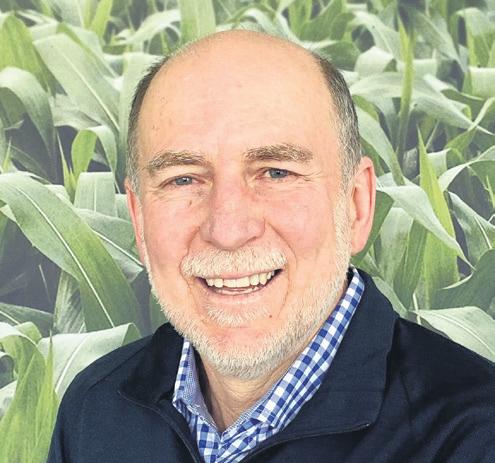
He said in these systems, as in many plac es overseas, maize is planted in row widths based on an industry standard of 75 or 76 cm. Optimal maize plant populations are al so well defined.

“However, using the traditional row width and population density optimised for these growing regions may not maximise maize pro ductivity and forage quality for South Island farmers.”

FAR long-term South Island maize row width by planting population research project

In
on 28 October, and harvested on 8 April, 162 days after planting. Row spacings were either 76 cm (industry standard) or 38 cm, and pop ulations were between 95,000 and 120,000 plants/hectare.
The year one trial produced an average yield of 32 tonnes of dry matter/hectare whole plant crop silage.
In the trial, narrow row spacing showed a trend towards increased forage yield (of on average two tonne DM/ha) when compared with the industry standard, especially when an 86 CRM maize hybrid was planted at a density of 105,000-115,000 seeds/ha.
This season, a small plot trial has been planted at Chertsey to further investigate any interaction between row spacing and popu lation.
CANTERBURY FARMING December 2022 5 FARMING NEWS
]
]
The
aims to identify if plant physiology, maize for age yield and quality and profitability can be improved by reducing row width in combina tion with increasing plant population.
2021/22, a large-scale irrigated trial was completed at FAR’s Chertsey trial site. Pioneer hybrid 8666 (CRM 86) was planted
Climate changes mean the South Island may become a major growing region for maize, with research showing that different management to North Island standard practice may be needed to improve crop yields.
Alternative: South Island maize yields may be optimised by using different plant populations and row widths than is standard practice in the North Island.
Different Strokes: Foundation for Arable research maize senior researcher David Densley says traditional row width and population density optimised for North Island growing regions may not maximise maize productivity and forage quality for South Island farmers.
Frustration and anger in the regions is palpable




























 ] with Todd muller ] National Party Spokesperson for Agriculture
] with Todd muller ] National Party Spokesperson for Agriculture










I’ve had a lot of frank discussions with Cantabrians recently, so I know you’re doing it bloody tough. It is clear this Government has lost support after spending six years making top-down decisions that make no sense on the farm.


































While our export prices have been solid, the costs imposed on the home front have been shocking. Continually growing farm inputs costs such as fuel, feed, labour and fertiliser are squeezing margins and causing immeasurable stress. This Government has lost control of the local economy and is reverting to type. Labour thinks there’s not an issue that can’t be solved without more taxpayer money and more regulations.
Farmers have borne the brunt - and you’ve had enough. There a very few bureaucrats and Government Ministers who have any idea of the internal family stress that sits around the kitchen tables of our 23,000 farmers.
During Covid you were begrudgingly acknowledged by the Government for keeping the country afloat. Since then, what has been
the thanks? The Government deviation from the industry partnership proposed HWEN, winter grazing rules that are unworkable, and more clipboard warriors wanting to find parts of your farm to classify as wetlands to further reduce your productive base.
But it’s the sheer scale of the regulations, the pace of change and their lack of day-today practicality that is really impacting farmers.
I have had a number of farmer meetings since being given the National Party Acting Agriculture spokesperson role, and the frustration and anger in the regions is palpable. Now that anger is flowing over the wider country as the looming recession starts to bite. We have to reset. We have to be clear what we would do differently.
So here’s what National would do:


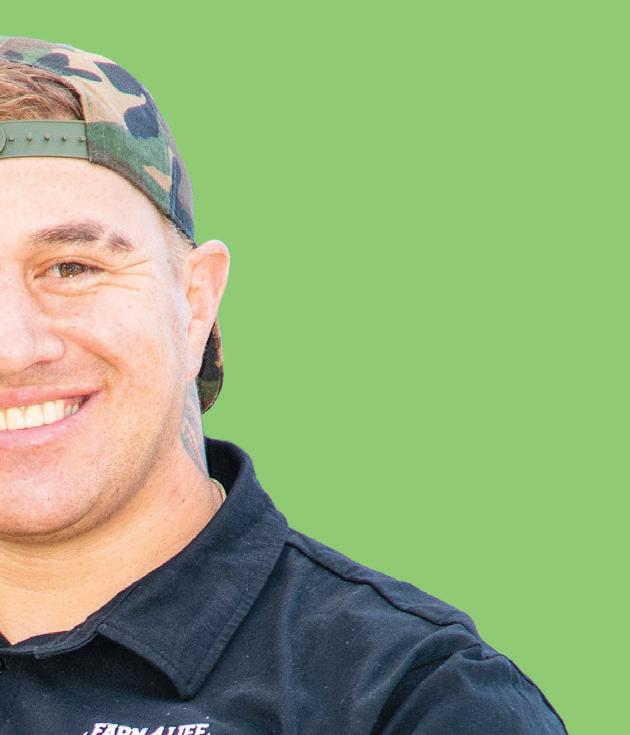
• The regulations that have been poorly designed, with inadequate consultation, need to change. We will bring a pragmatic and efficient lens to the areas farmers have highlighted as unworkable.
NEW CAREER STARTS

• The Government’s approach to pricing agricultural emissions needs to be binned. We have to find an answer to bring down methane levels, so let’s do that. As part of National’s emissions scheme, we propose a modest levy to fund methane research, and building a simple and standardised methane measurement model, while ensuring additional on farm sequestration counts – let’s keep it simple and get on with it.
• Drive focus towards data interoperability and efficiency. Farmers are getting increasingly frustrated with having to provide the same information to various platforms. Farmers shouldn’t need to complete multiple compliance documents, assessed by multiple agencies and organisations.






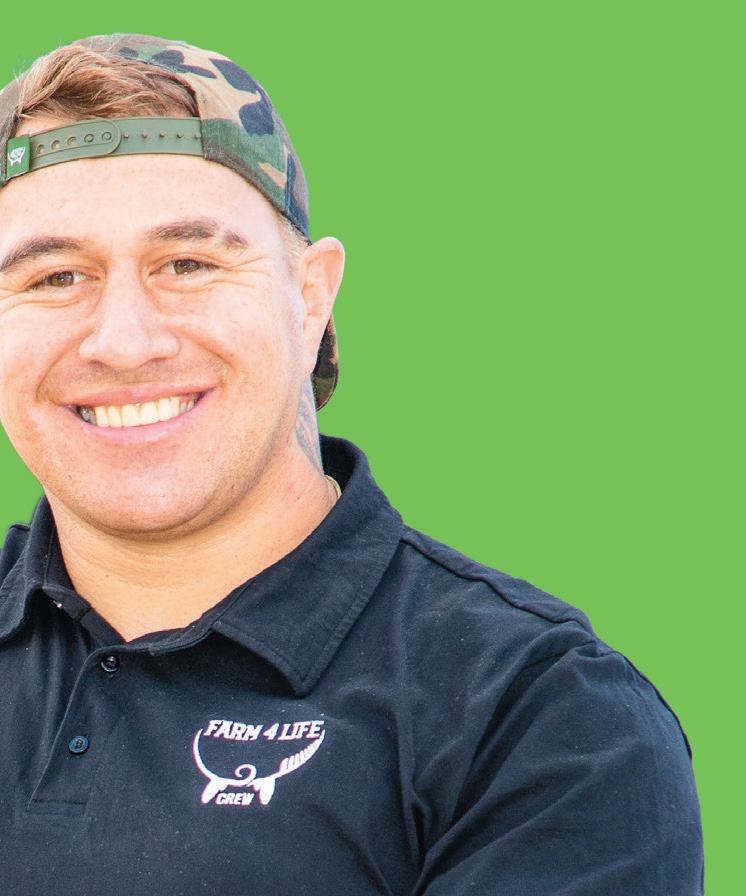



• Ensure people are available to work in the primary sector – New Zealand has to get the immigration settings right and work harder towards building a sustainable and reliable local workforce for the future.
But the biggest focus for me will be leadership. My whole life has been connected with agriculture. It is a huge part of who I am. It genuinely impacts me when I see the struggles, both regulatory and mental, that our farmers are enduring. We need to celebrate our food and fibre sector and engage with farmers on the basis of trust not enmity.
Canterbury is a beautiful part of the country with top-of-the-line farmers, thank you for all you do for our nation. I wish you all an enjoyable Christmas and festive season, and hope growing conditions stay favourable over the summer months.
6 December 2022 CANTERBURY FARMING FARMING NEWS
YOUR
HERE A new collaboration between Telford and Farm 4 Life, intends to provide dairy farm workers nationwide with the opportunity to gain a recognised qualification while they work. Visit www.telford.ac.nz or call 0800 TELFORD
I enjoyed my time at the New Zealand Agriculture Show seeing Canterbury’s rural community on display, and meeting with Waimakariri farmers in Ohoka last month to hear their views about life in the sector right now.
‘We have to reset. We have to be clear what we would do differently.
New look around ECan council table
Now the local elections are over, you may be wondering what it all means? From a Canterbury Regional Council (Environment Canterbury) perspective it means we have welcomed some new faces at the governance table.







Following the 2022 election the Environment Canterbury council is: back row, from left: David east, claire mcKay, Nuk Korako, Iaean cranwell, Joe Davies, Nick Ward, Deon Swiggs, Paul Dietsche. Front row: Grant edge, Greg byrnes, Vicky Southworth, craig Pauling (Deputy chair), Peter Scott (chair), Genevieve robinson, Ian mackenzie, John Sunckell.
sent your community, and then to be chosen as Chair.
by Peter Scott
] ECan chair
There is an even split of new and returning councillors, who will make decisions about how we manage activities that might impact on the land, air and water, on behalf of our communities.
Our role as a regional council is different to the 10 city or district councils we work with in the Canterbury region. They manage things like roading, town planning, local park facilities, and libraries. Environment Canterbury manages air quality, land and water use, biodiversity and planning from a region-wide perspective.
We’re also responsible for public transport services (bus and ferry networks), the Harbourmaster’s office and regional Civil Defence Emergency Management.
I am one of a group of returning councillors, along with Deputy Chair Craig Pauling. We were both there when the Council returned to fully elected representation in 2019. It is a privilege to be selected to repre-

Just like 2019 was a turning point in the history of Environment Canterbury, this term shapes to be equally significant as we welcome our Ngai Tahu Councillors: Iaean Cranwell and Tutehounuku ‘Nuk’ Korako. They have a huge task ahead representing all communities but in particular the 76,000 plus people who whakapapa to Ngai Tahu and the 10 Papatipu Runanga who selected them as their representatives.
Collectively your 16 councillor representatives offer a range of experience and expertise and we’re sure to enjoy some robust debate as different perspectives are brought to the table. It is essential for us as decision makers to carefully consider a range of views and I believe we can become a strong team, working together for the good of Waitaha Canterbury over the next three years.

We have an ambitious work programme, including reviewing our Regional Policy Statement, Land and Water Plan and Coastal Environment Plan. Through this review we will achieve national direction and deliver an inte-

grated ki uta ki tai (from the mountains to the sea) plan in partnership with Ngai Tahu as mana whenua of Waitaha. This work will go a long way to determining the kind of region we live in and what activities can be undertaken where. The aim is to enable sustainable growth while ensuring we protect and enhance the things that are important to us.
We’re also gearing up to adapt to significant issues including climate change, a new approach to resource management, the Future for Local Government review, and Three Waters Reform.
Already we’re seeing the impact of policy changes and community pressure to act on environmental issues. We understand the tension some of the changes have caused in rural New Zealand and we look forward to
helping you understand any new requirements so you can adapt your farm management accordingly. We’ve developed a Farmers’ Hub with information on a range of issues, which you’ll find at ecan.govt.nz/farmershub and I encourage you to check it out.
The strength of our relationship with Ngai Tahu and Papatipu Runanga is key to our success. This partnership is a priority for our Council and, having Ngai Tahu Councillors around the table, puts us in an excellent place to achieve great success.
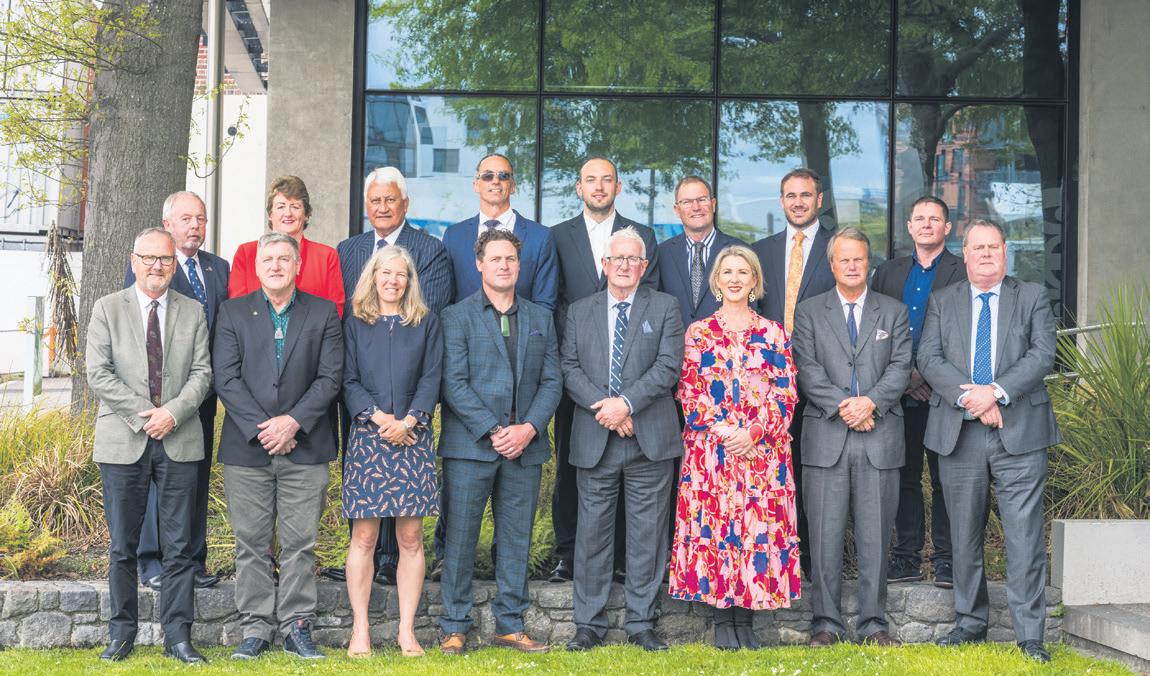
I know I can speak for all councillors when I say we are looking forward to working with the community over the next three years. I encourage readers to head online to ecan. govt.nz to find out more about the organisation and how you can get involved.
Winter grazing in 2023?
New intensive winter grazing rules are now operative.
The key to good intensive winter grazing is to make and follow a management plan.
Visit our website to find out if you need an intensive winter grazing resource consent. If you need consent, submit your application by 1st May 2023 to be good to go for the upcoming season.
For full details visit ecan.govt.nz/winter-grazing, contact us on 0800 324 636 or talk to your land management advisor or rural professional.
CANTERBURY FARMING December 2022 7 FARMING NEWS
You aneed
ŌAMARU E22/7161 WAIMATE TIMARU RangitataRiver Waitaki River TWIZEL LAKE TEKAPO/ TAKAPŌ AORAKI | MOUNT COOK LAKE BENMORE CONTAINMENT AREA Wallabies cause serious damage to our farmland and environment. We are working hard to stop their spread and we need your help. ASHBURTON KUROW IF YOU SEE A WALLABY OUTSIDE OF CANTERBURY’S CONTAINMENT AREA DEAD OR ALIVE, REPORT IT!
plan
]
Canterbury rural market update
Conrad Wilkshire, General Manager Rural for Property Brokers (PB), acknowledges recently promoted Canterbury Country Manager, Gareth Cox as having significantly influenced their rural business success on both the West Coast and Canterbury Plains this spring.

Gareth has been involved in Canterbury Rural Real Estate since 2012, all of this time under the PB brand. Gareth and his wife Fliss (also now a key member of the PB team) have arable farm interests in Canterbury and a share in a dairy equity partnership on the West Coast. In amongst raising two young boys, both Gareth and Fliss play very active roles in their local communities.
Despite the tightening market, Gareth acknowledges that this has been the best Property Brokers True Team performance in Central Canterbury in his ten years with the Company. We have had both our North and Mid Canterbury teammates focusing on leaving no stone unturned in supporting Central Canterbury with four excellent early-season sales on behalf of our vendors. It’s by far and away our strongest early spring performance on the West Coast this year too. The whole team are right behind ‘stepping up’ to meet the current market head-on, and in markets like this, you don’t just need experience; you need buyers!

Rural interest rates will continue to impact the Canterbury rural property market.
Canterbury rural real estate sales (July to October) equalled $102.5m by value and 25 by number of farms sold. This is 50% back on the same time last year by both value and number of sales.
This rural real estate market adjustment pre-dates the most recent (23 November 2022) Reserve Bank 75 basis point lift in the Official Cash Rate (OCR) to 4.25%, the 7th increase this year. Farmer borrowing costs have already doubled over the last 12 months, and while access to rural credit has improved, the cost of it is now weighing heavily on farmer and grower minds when taking on more risk. Last season was the opposite, where rural debt had never been cheaper but accessing it was not a given.
The current 75 basis point lift is the most significant since the OCR was introduced in 1999 and, in our view, will impact further and reduce levels of buyer inquiry this season.
Many other factors are currently impacting farmer confidence, like He Waka Eke Noa, one of many policy changes, where the implications of which still need to be clarified.
Conversely, the very real cost of funding the purchase of a neighbouring block has an immediate impact on the projected net return and is much easier to quantify.
Principally we sense most farmers share Keith Woodford’s view that our primary industries, in general, and pastoral industries, in particular, are fundamental to NZ’s economic well-being. Ultimately, this will support the underlying rural market valuations and the corresponding reset of this season.
The opportunity for purchasers to negotiate terms to reflect the current economic reality is now obvious. The last decade has seen borrowed money get cheaper and cheaper. The reversal of these current higher interest rates, is not anticipated any time soon, anything that has taken this long to bottom out will take time to unwind.


Our advice to buyers is the market will reset; it always does. Standing back may mean a lost chance to take a once-in-a-generation opportunity as quality listings continue to come forward. The best option is to review the business plan, re-run the numbers and put a firm offer on paper, supported by sufficient time for the appropriate due diligence. Our job is to present all offers and find solutions that establish a fair outcome for both parties. One thing we do know for certain is Canterbury farm production systems have always afforded excellent comparative returns on capital.
Conrad Wilkshire, GM Rural for Property Brokers Ltd conrad@pb.co.nz
North 1 0 $11,500,000 $0 Central 2 1 $19,550,000 $20,000,000 Mid 1 0 $16,000,000 $0 South 1 1 $3,038,500 $2,200,000 Total 5 2 $50,088,500 $22,200,000
8 December 2022 CANTERBURY FARMING RURAL PROFESSIONALS Property Brokers Ltd Licensed REAA 2008 | 0800 367 5263 | pb.co.nz
Canterbury Rural Sales (20 ha+), July to October 2021 & 2022
Sales by region
Region No of Sales 2021 No of Sales 2022 Sales Value 2021 Sales Value 2022 North 14 6 $31,145,157 $15,700,000 Central 14 6 $71,111,176 $25,691,000 Mid 9 6 $58,106,993 $42,470,913 South 19 7 $44,838,223 $18,606,644 Total 56 25 $205,201,549 $102,468,557 Dairy Sales (20 ha+)
Region No of Sales 2021 No of Sales 2022 Sales Value 2021 Sales Value 2022
Considerations for rural fires


With the summer months nearing and the aftermath of the Pegasus Bay fire still raw, now is an opportune time to consider the rules regarding fires.








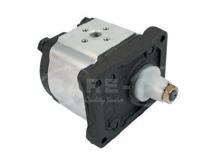






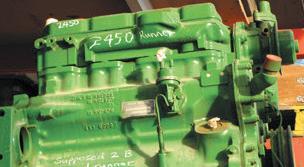










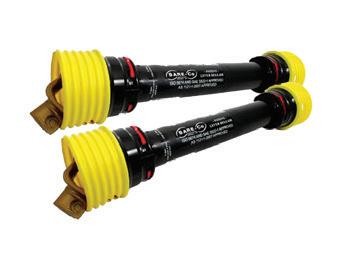



















] with Alivia Nevin





 ] Helmore Stewart Lawyers
] Helmore Stewart Lawyers

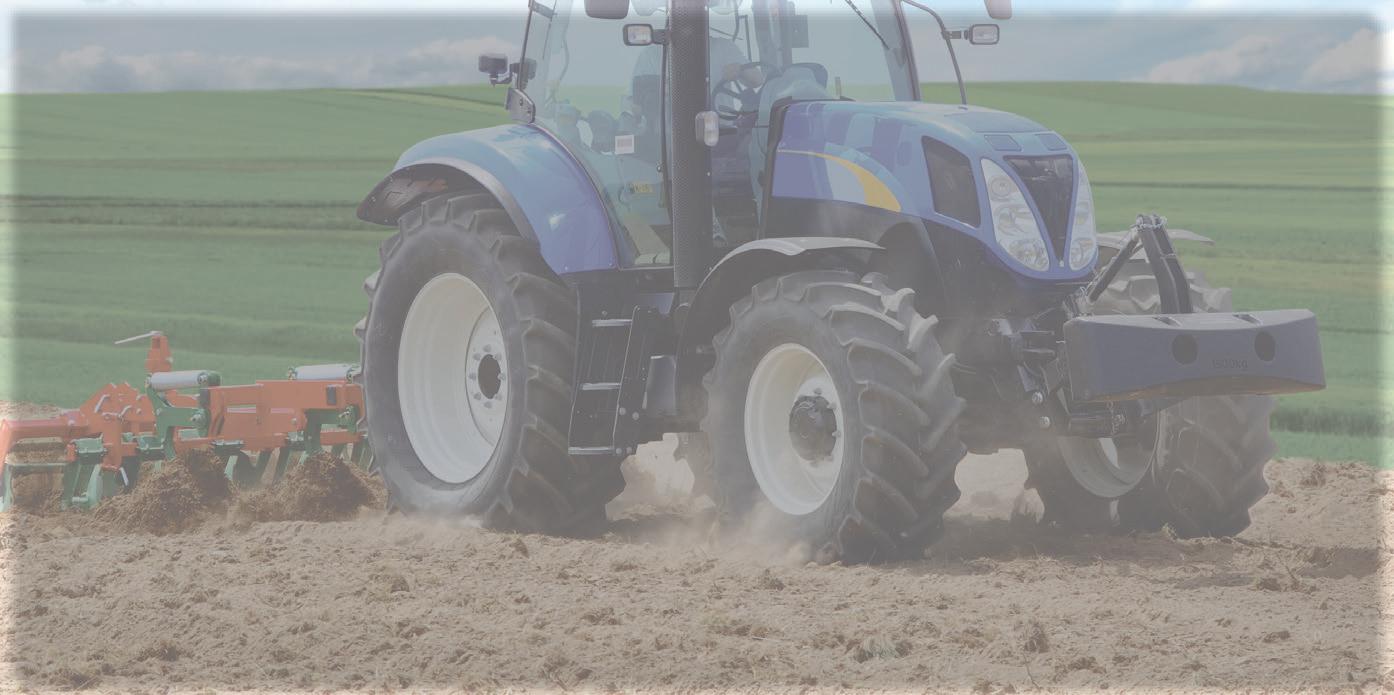


















Whether it be a summer campfire or land clearing for Canterbury farmers, it is important to understand your liability if you cause a fire that damages another property.
The Fire and Emergency New Zealand Act 2017 (the Act) came into force in 2017 and combined the elements of the Forest and Rural Fires Act 1977 with other urban fire legislation.
Under section 60 of the Act, a person must not cause or allow a fire to get out of control and to spread to vegetation or property. This new Act governs the rules around rural fires and is aimed at improving fire safety.
This legislation created a significant shift in liability and can come with a penalty of up to $600,000 or up to two years imprisonment. This relatively new penalty is aimed to deter risky and reckless fire behaviour and stress the importance of the destruction and damage that a fire can cause.
Prior to this Act coming into force, local councils handled rural and urban fire functions. However local councils no longer have jurisdiction to handle fire hazards, this is now managed by Fire and Emergency New Zealand (FENZ).
If you have concerns regarding an overgrown section or any other fire hazard, this can now be reported to FENZ.
Following the Pegasus Bay fire, the police established it was a firework which created the fire that tore through 200 hectares and destroyed around 1200 native trees. This incident should be an uncomfortable reminder of the damage a fire can cause. Police reiterated that fires should not be lit in windy or dry conditions.

If you are using fires as a land management tool, FENZ have recommended that you have public liability insurance that covers damage from fire if it escapes to another property. Land-clearing is the cause of 30%
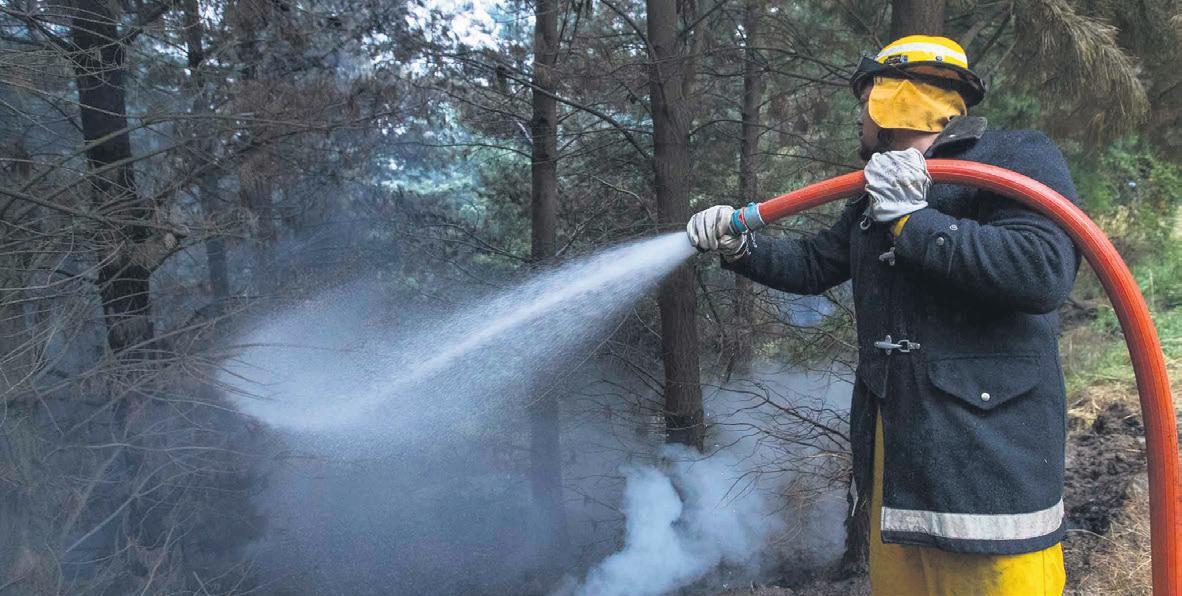
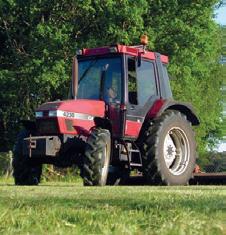
of wildfires. Although wildfires are commonly linked with forestry, they are often started outside the forest. For example, in 2019, Pigeon Valley in Nelson had a large forest fire that was caused by a contractor discing in a paddock outside the forest.
In the warming months, the grass is dry
If you are using fires as a land management tool, Fire and emergency New Zealand has recommended that you have public liability insurance which covers damage from fire if it escapes to another property.
and fire is likely to spread faster. FENZ advise property owners to keep their grass watered and mowed to reduce these risks.
If you have any concerns about neighboring properties burning fires or your obligations when land-clearing by way of fire, reach out to your lawyer for advice.
CANTERBURY FARMING December 2022 9 RURAL PROFESSIONALS Residential / Commercial / Rural / Lifestyle Ben Turner 027 530 1400 03 375 4736 ben.turner@bayleys.co.nz WHALAN & PARTNERS LTD, BAYLEYS, LICENSED UNDER THE REA ACT 2008 Call Ben today for an altogether better approach to your rural real estate needs along with an up-to-date market overview.
PROFESSIONAL RURAL REAL ESTATE ADVICE
www.agspares.co.nz TRACTOR PARTS NEW & USED HIGH QUALITY NEW PARTS FOR MOST TRACTOR MAKES & MODELS PLUS THOUSANDS OF USED PARTS FOR MOST TRACTOR MAKES & MODELS ORDER ONLINE FOR FREE FREIGHT. T&C’S APPLY HYDRAULICS LINKAGES SEATING PTO SHAFTS & PARTS ELECTRICAL AGRICULTURAL GEARBOXES REAR AXLE & TRANSMISSION Over 60 engines Late model, low hours Most major brands TRACTOR PARTS & DISMANTLING
Farming in the cloud

This capability makes farmers well-informed and armed to make better decisions every day.




































 ] by clinton miller
] by clinton miller
 ] Findex Agribusiness Partner
] Findex Agribusiness Partner
How times have changed, where astonishingly powerful and capable handheld devices now access just about any information you like, including real-time financial information.
It’s a revolution sweeping through the regions, and a far cry from the early days of using computers for farming when the most time was spent getting information into the clunky computers and software of the day, dealing almost exclusively with historical stuff (and occasioning quite a bit of strong language, truth be told). ‘The computer’ was a records-machine back at the farmhouse, and not a lot more, practically useless when it came to planning.
That also meant come tax-time there might be a few grey areas when it came to
the numbers. In fact, visiting the accountant was always a bit of a mystery for the farmer, with the final numbers relating to profit or loss, tax owing and so on, coming as something of a surprise.
Now, as accountants, we don’t generally like surprises. Predictability is comforting, and it isn’t that much different for the farmer, either. The limited systems of the day meant predictability was a pipedream, for the most part; there wasn’t much time or information available to get much more than the ‘taxtime’ look-in on where things stood.
This meant a similarly limited ability to plan, understand the financial parameters and possibilities, and reflect from a true financial viewpoint about where and how changes might be made to the business.
That’s all changed with the move to cloud accounting software. This isn’t just a revolution that has made accountants more efficient (though it certainly has done that). It has also put the power of knowing and the power of accurate, to-the-minute information in the hands of the farmer.
With access to real-time data – along with automated processes – the tedium of data entry at the end of the day, or week, or month – has given way to fast, accurate and easy interactions with computer systems that actually just work. This has freed up time for alike, shifting the focus to what’s happening today and on to future planning.

This includes functions such as setting base budgets, then rapidly exploring possibilities by running scenarios testing various different decisions, approaches and external

impacts on the farming business.
Examples include modelling a succession plan, or the impact of changing commodity prices – having an idea of how inputs and outputs affect them allows better risk assessment and preparation for what may come to pass; these things just weren’t possible until the advent of affordable, accessible cloud solutions.
There’s more to it than accounting software, although this has really led the way. Multiple platforms and tools have (and are) emerging, all of which keep the farmer more connected, more informed, and more aware than ever before. For example, the Figured cloud application facilitates collaboration between those on the farm and the wider advisory team, including accountants, farm consultants, and bankers. The result is freeflowing consistent information that underpins improved decision-making.
Now, there was mention of strong language earlier in the piece. While accessible software and services hold great potential, it isn’t always plain sailing.
The diversity and range of products, solutions and services available in the cloud can cause confusion and frustration. Like any new tool or approach, adoption should follow a sound business case with the accurate matching of a solution to requirements.
That’s where the value of quality advisory is worth its weight in gold: while modern cloud tools can and do make a significant impact, the right choice, the right configuration, and the right implementation and support are the difference between success and failure.
10 December 2022 CANTERBURY FARMING RURAL PROFESSIONALS www.pggwre.co.nz Helping grow the country PGG Wrightson Real Estate Limited, licensed under the REAA 2008. List with us this spring. Offering a locally based team approach, connecting people with property with the support of a national network of salespeople covering the whole country! Mark Terry 027 572 2559 Karen Hennessy 027 967 0186
It wasn’t all that long ago computers were about as powerful as a pocket calculator and weighed more than a bag of stock feed.
] with Andrew Wyllie
] Forsyth Barr

The highest inflation in decades has remained stubbornly persistent.
Initially it was driven by a shift in consumer spending patterns while people were in lockdowns (more demand for goods and less for services) and an inability of global supply chains to respond. Goods’ prices soared.
Earlier this year the conflict in Ukraine added to those pressures through a spike in energy, food, and other commodity prices.


Now, tight labour markets are empowering workers to push for higher wages to compensate for climbing prices.
Central banks are committed to bringing inflation down to target levels. They have aggressively raised interest rates.
Whilst there are growing signs inflation is likely peaking — including declining commodity prices and freight costs, higher inventory and greater retailer discounting, easing labour market pressures, and sharply slowing housing markets — questions remain.
How quickly will it abate? How far will interest rates rise? And will it require a recession?

By their own admission, central bankers don’t know. Outcomes will be affected by unpredictable factors such as the war in Ukraine, and China’s perseverance with a zero-COVID policy.
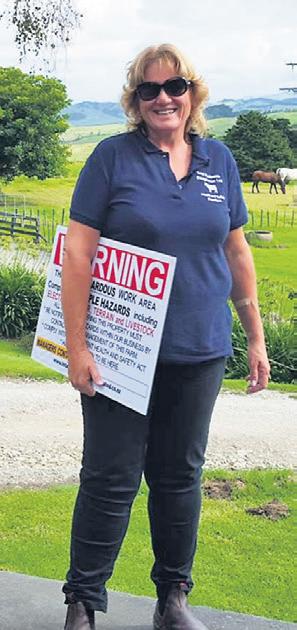
The last few years have emphasised just how difficult it is to predict the outlook in today’s interconnected and unprecedented global economy. Unfortunately, uncertainty and market volatility may run for a while yet.

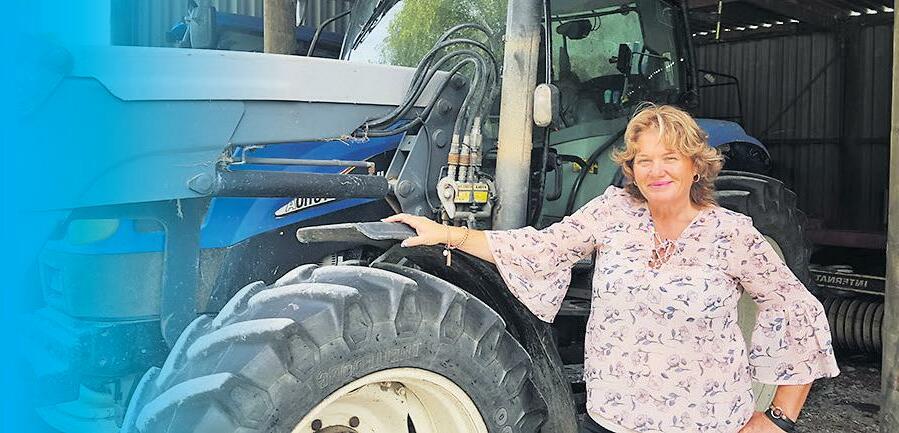
This backdrop is challenging for investors. If inflation moderates, and therefore central bank tightening expectations lessen, we expect equity markets would respond favourably.
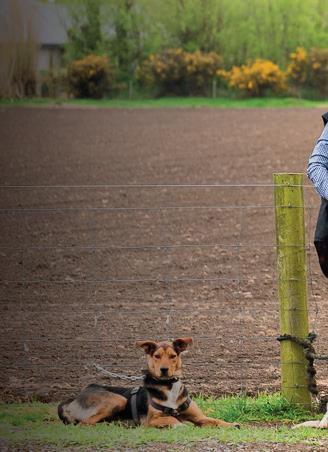
Conversely, if we see a significant recession it would have a material impact on corporate earnings and put further pressure on stock prices.
Companies generally resilient despite biting costs









Despite the market volatility and uncertain economic outlook, the performance of companies has so far been largely better than anticipated.


As we write this we’re in the midst of the US reporting season, when companies report their financial results to the market.
There have been some headline grabbing disappointments, mainly from the mega-cap tech companies driven by concerns around an economic slowdown and rising costs.
However, more broadly, the significant majority of companies’ results have come in ahead of expectation, fuelled by strong sales growth, albeit higher costs has meant (outside of the energy sector) profit growth has been restrained.
The recent updates we’ve had from New Zealand companies paint a similar picture. In particular, those exposed to the return of tourism have, not surprisingly, seen a significant improvement in activity.
We’ll get a more fulsome picture of how New Zealand and Australian companies are tracking with our own reporting season.
China questions
In today’s interconnected world events in one part of the world ripple around the globe. Pol-
icies and challenges in China continue to influence the economy and markets.
At the recent Chinese Communist Party congress, President Xi Jinping consolidated power and purged the leadership of moderates who favoured economic and liberal reform.

Chinese stocks (listed in Shanghai, Hong Kong, and abroad) plunged.
In addition to concerns about unfriendly policies, China’s persistence with its zero-Covid policy has subjected the country to harsh periodic lockdowns.
China is the largest manufacturing and export economy in the world, and these lockdowns have flow on effects to global supply chains.
How quickly restrictions will be eased will likely depend upon the ability of China’s health system to cope with outbreaks.
It is ramping up production of anti-viral drugs and developing its own mRNA vaccines.
More significant over the medium to longterm are the structural imbalances in China’s housing market — extreme unaffordability, oversupply, and high levels of speculation. Additionally, demand will likely shrink in the years and decades ahead due to demographic trends.
Urbanisation (and construction) has been
a major driver of its economy (and global commodities demand) over the past 20–30 years, but now Chinese policymakers are trying to wean the economy off debt-funded housing construction/speculation.
But it’s a balancing act. It remains a question as to how much support they’re willing to provide the economy and housing market in the near-term.
Build resilience
We appreciate that market volatility and economic uncertainty doesn’t make an easy backdrop for investors.
To discuss your investment options please contact Andrew Wyllie, who is an Investment Adviser and is Forsyth barr’s christchurch branch co-manager. He can be contacted regarding portfolio management, fixed interest, or share investments on 0800 367 227 or andrew.wyllie@forsythbarr.co.nz.
CANTERBURY FARMING December 2022 11 RURAL PROFESSIONALS
Looking at off-farm investments? When you are thinking about your investment options, talk to Forsyth Barr To get personalised investment advice and portfolio management specific to your investing needs, talk to Investment Adviser Andrew Wyllie in confidence on (03) 365 4244 or email andrew.wyllie@forsythbarr.co.nz CHC6189-02 March 2021 All the best for the silly season May you get just the right amount of rain, sun and rest. Call 0800 787 775 for a chat hello@survusrural.co.nz www.survusrural.co.nz Visit our website for more information: www.totalbusinesscomplianceltd.co.nz WE DO IT ALL FOR YOU! • Safety Audits On Farm • Health & Safety Manuals • Policies & Procedures • Staff Training • Signage • Monthly Staff Meetings On Farm • Contractors Agreements • Worker Accomodation Property Inspections HEALTH & SAFETY PROVIDERS TOTAL BUSINESS COMPLIANCE LTD “Your helping hand” Annette Pull Director P: 027 286 2329 HIGHLY COMPETITIVE PRICING Riding the market rollercoaster Markets continue to whipsaw. Concerns around inflation, and potential recession, remain front of mind. This article was prepared as at 31 October 2022 and provides market commentary for the threemonth period ending on that date. This column is general in nature, has been prepared in good faith based on information obtained from sources believed to be reliable and accurate, and should not be regarded as financial advice.
don’t need farmers”
] with rob cope-Williams






A New South Wales politician has come out with a serious statement about her view on farming in her region.
“We don’t need farmers; we have supermarkets for goodness’ sake.”

Yup, that is bad, no, it is seriously bad that anyone of any age would think that let alone say it and that any person in a position of power and influence was ignorant enough to think it or say it probably says a lot about the Aussie mentality, or lack thereof.
However, it did get me started about the views about farming from our Ivory tower.
Recently we had a senior Minister saying on nationwide radio that Federated Farmers had admitted the three-water becoming five waters was their idea and they backed it when in fact the Feds were totally the opposite and made sure the world knew it.

Do you think I am being fair when I say that farmer bashing is a great way to use red herrings?
Farming gets blamed for the rivers and the pollution there-of, rather than industry, farming is an easy target when it comes to extra tax or compliance costs.
I mean who here in Christchurch gives a tinker’s elbow if the farmers must pay a tax when they buy a new ute.
Extensive work is being done to stop leaching throughout the country, but only the negatives are talked about in the gen-

eral media, usually polluted rivers with no hard facts to back it up.
Townies seeing cattle in muddy paddocks have the right to swing the local councils into action with respect to animal welfare, but I am yet to meet a farmer who doesn’t love his stock and their welfare.

Research is being done by Ag Research to swing from brassicas into pasture for wintering stock.
Based on hay and grass, the animals are warm, dry and well fed with no mud or leaching.
Not a word from the media because it is positive, and they just love farmer bashing.
Actually, is it fair to say farmer bullying as the farming industry doesn’t seem to have any means of answering the critics?
I am sure the Feds and others must be bleeding from their ears from bashing their respective heads against a brick wall, but sadly, in my view, the Aussie politician and her statement about farmers and supermarkets just may be not that far from other people’s thought.
Scary isn’t it?
12 December 2022 CANTERBURY FARMING
FARMING NEWS
“We
I consider that we here in New Zealand have a major problem with a lack of understanding with respect to farming and farmers, however New South Wales in Australia has taken the cake.
‘Farming is an easy target when it comes to extra tax or compliance costs.
Westpac Rescue Helicopter touches four generations of Timaru family
] Article supplied by Canterbury West ] Coast Air Rescue Trust

Paul Johnston has been a supporter of the service for many years and can be seen reg ularly at the Sophia Street Carpark in Timaru, collecting donations for the rescue helicopter alongside other members of the Midland Dis trict Freemasons. His great grandson Raid en is the most recent family member to have been helped by the rescue chopper.
Canterbury West Coast Air Rescue Trust Chief Executive, Christine Prince says this is a service everyone can call on if something happens.
“Our farming communities tell us the Westpac Rescue Helicopter is an absolute lifeline for them.”
Timaru is like many areas across the re gion, where support comes from local organ isations including St Vianney’s Timaru Trust and the Community Trust of Mid and South Canterbury, and from people who recognise the importance of the service to their com munities.
“Farmers and those living in rural areas often get admitted by ambulance to Timaru Hospital and then need to be airlifted for crit ical care at Christchurch Hospital,” she says.
Paul’s granddaughter Levi welcomed ba by Raiden in January after a difficult birth, and she and partner Scotty were relieved and overjoyed at his safe arrival.
“Unfortunately, it wasn’t a smooth ride es pecially for Mum Levi who had to go back in to hospital after the birth. A few days later, baby Raiden became ill and Raiden had to be
flown urgently to Christchurch Hospital. There were complications, a possible twisted bow el, very serious in a newborn.”
Westpac Rescue Helicopter pilot Kent and crewman Rob got the call. First they flew to the Christchurch Hospital helipad where the neo-natal team and incubator were waiting on the helipad, making the turnaround as fast as possible.
On landing, after the short flight down the coast to Timaru, Levi said the crew immedi ately put her at ease. She was given a sense of calm and confidence, and knew her baby son was in safe hands as they placed him in the incubator. The crew placed tiny earmuffs
on Raiden to protect him from the noise and comforted him throughout.
The team at Christchurch hospital were prepped for Raiden’s arrival, and on landing things happened very quickly. Raiden under went surgery for a double hernia which had caused other complications. He spent sever al days in ICU.
“Levi is more than aware of the funding chal lenges the service faces, thanks to her grand father’s tireless fundraising in Timaru. Levi’s father too has had a serious accident and was helped by the Westpac Rescue Helicopter.”
Raiden is now a healthy 10 month old, and Levi and her family are extremely grate

raiden from Timaru is now a healthy 10 month old, and his family is extremely grateful for the rescue helicopter service.
ful for the helicopter.
From January to October 2022, the West pac Rescue Helicopter has been to South Canterbury 126 times, and logged 530 mis sions across the whole Canterbury region.
“The crew is incredibly grateful for the sup port of businesses, and individuals across the region who choose to make a difference in our community by supporting our rescue helicopter service,” Christine Prince says.
The Trust is working to raise $150,000 before christmas to continue supporting this lifesaving service. Donations are being welcomed via the Air rescue Trust website www.airrescue.co.nz

CANTERBURY FARMING December 2022 13 HEALTH ON THE FARM
The Westpac Rescue Helicopter is a lifeline for remote and rural communities, and for one Timaru family it has touched four generations.
The Westpac rescue Helicopter with baby raiden in an incubator lands at christchurch Hospital.
Surfing for Farmers is coming to a beach near you this summer
Bayleys is proud to be a national sponsor of Surfing for Farmers, which offers you and your staff the opportunity to get off the farm for a couple of hours each week during that busy time of year.

Join the team weekly during the summer months at four locations in and around Canterbury.
Follow us on Facebook @surfingforfarmers surfingforfarmers.com
Surfboards, wetsuits and coaching is provided, followed by a BBQ, cold beers and a debrief. There is no charge, so no excuse not to join.
14 December 2022 CANTERBURY FARMING HEALTH ON THE FARM
Residential / Commercial / Rural / Property Services
WHALAN AND PARTNERS LTD, BAYLEYS, LICENSED UNDER THE REA ACT 2008 Reach out to your local contact Hickory Bay Kristin Savage | 021 680 190 Gore Bay James Northcote | 027 216 6822 Sumner Sandra Taylor | 021 151 8685 Kakanui Thomas Abernethy | 021 869 805
Advance care planning for rural health
Farmers in Aotearoa have to be prepared for anything, from the ever-changing weather to issues with stock, crops and machinery.
Article supplied by

Health

Quality ] and Safety Commission New Zealand
With advance care planning they can also prepare themselves and their loved ones for any significant changes in their health.
Rolleston farmer Thomas Mitchell was the face of the Health Quality & Safety Commission’s Kia whakarite: ‘Be prepared advance care planning’.

Mitchell runs cattle, grazes horses and owns a business supplying steel cattle and sheep yards. He also has a young family (partner Jerrica and two-year-old son Carter) and is now turning his mind to how he might support them if something happened to him.
“I probably used to take some unnecessary risks when I was younger, but as I have got older and had a family, I realise they are in a whole lot of trouble if I get injured and am unable to work,” Mitchell said.
“I am a lot more careful now and have plans in place should I have a serious injury or illness,” he said.
Farming is in his blood. He grew up on
a farm near Timaru, went to university in Christchurch and now has his own family farm near Rolleston.
“I grew up on a farm and always loved being outside with Dad. I have always had a love of animals and enjoy working for myself rather than being in an office. Every day is different.
“There is a huge variety of tasks to do on a farm, which can make it overwhelming at times, but also provides great variation to my weeks.”
Of course, farming has its challenges too, particularly in terms of demands on farmers’ time.
“There is no such thing as annual leave. When you have animals, they still need to be cared for, no matter what day of the year it is.
“The weather also provides many challenges. It can be frustrating when you do everything right, but the weather just doesn’t play ball and there is nothing you can do about it. We have a lot of money tied up in our stock and it can be heart-breaking when the grass just won’t grow,” he said.
Mitchell’s advice for those thinking of taking up farming is to give it a go.

“It’s great work and a great lifestyle, but it’s certainly not for everyone. You need to be self-motivated, fit and work well by yourself.’”
Advance care planning is the process of thinking about, talking about and planning for future health care, including end-of-life care. It helps you, the important people in your life and your health care team understand what you want, especially if you can no longer speak for yourself.
An advance care plan includes what is meaningful to you, your values and the ways you would like those caring for you to look after your spiritual and emotional needs. It can





also cover whether you want to donate your organs, what sort of funeral you would like and where your important papers are.














Free resources are available to help you with these conversations. Go to the ‘consumer resources’ section of myacp.org.nz
Resveratrol.


Should I take Co Enzyme Q10?


This is much like our bodies when they have insufficient Co Enzyme Q10 (CoQ10). CoQ10 acts like the fuel line in your car by transporting energy within cell energy factories called mitochondria to make the energy we need.
Co Enzyme Q10 (CoQ10) is an essential vitamin-like substance we make in our liver. While we normally make all the CoQ10 we need, some people because of age, health problems or medications can benefit from taking good quality CoQ10. Be aware that the market is now flooded with low cost semi-synthetic CoQ10 made from tobacco waste.
The most common reason for CoQ10 supplementation is for those using cholesterol lowering (statin) medication. The side effects of statins are so common that they are a diagnosable disease called statin myopathy.
The most common side effects are muscle stiffness, pain and weakness. This can also cause general fatigue which often feels like a lack of motivation.
Statins effectively inhibit the enzyme needed to make cholesterol. Unfortunately, this enzyme (HMG-CoA reductase) is also needed to make CoQ10. Blocking this enzyme reduces cholesterol but also CoQ10 by as much as 50%.
Drug companies are aware of this problem and hold patents for combining CoQ10 with statins.


Until such drugs become available, I recommend those on statins supplement with 100-200mg of naturally fermented CoQ10 such as the patented US product CoQsol®.
If people have low energy or have other health issues, I often add my MTQ10 complex formula that includes high grade CoQ10.
John Arts (b.Soc.Sci, Dip Tch, Adv.Dip.Nut.med) is a nutritional medicine practitioner and founder of Abundant Health Ltd. For questions or advice contact John on 0800 423559 or email john@ abundant.co.nz. Join his newsletter at www. abundant.co.nz
CANTERBURY FARMING December 2022 15 HEALTH ON THE FARM ] with John
Abundant Health Co Enzyme Q10 Abundant Health CoQsol: (60 Softgels) $49.95 each plus $4.99 postage BEST BUY: 3 Bottles for only $134.85 ($44.95 per bottle) FREE freight. BEST BUY: 3 Bottles for only $224.85 ($74.95 per bottle) FREE freight. MTQ10: (60 capsules) $79.95 each plus $4.99 postage CoQsol® patented CoQ10: • Ideal for support during treatment with statin medication. • Helps protect cholesterol from oxidation. • Supports heart muscle, heart rhythm, heart circulation and normal blood pressure. • Promotes eye health. • Supports energy and general well-being. Ingredients: Rapid absorption CoQ10 (100mg per softgel), natural vitamin E, lutein, zeaxanthin and beta carotene. Mitochondrial (MT) support formula: • Supports energy and immune functions damaged by in ammation and various health problems. • Incudes potent antioxidants to protect cell energy processes. • Promotes normal energy, good circulation, normal blood pressure and general cardiovascular health. Ingredients: Natural CoQ10®(100mg), full B vitamin complex, pure ActiVin™ grape seed extract, R- Alpha lipoic acid, Acetyl l carnitine , 95% Curcumin, N-acetylcysteine and
For more information please contact John Arts 0800 423 559 or email john@abundant.co.nz Or order online at www.abundant.co.nz Abundant Health Ltd, PO Box 8348, Cherrywood 3145
Arts
Part 1 ]
Looking ahead: rolleston farmer Thomas mitchell has been the face of the Health Quality and Safety commission New Zealand’s advance health care planning programme.
trying to drive your car after someone had crimped the fuel line from your fuel tank to your engine. The car would still run but would quickly lose power on a hill or under load.
Imagine
The five ways to wellbeing
] by Nigel beckford
] Farmstrong
The All Black says international research has found that people who thrive have five habits in common:
• Staying connected with mates
• Keeping active
• Taking notice and enjoy the simple things in life
• Learning new things to keep fresh
• Giving back to friends and community
Sam explains:
“These five habits help keep life in perspective when the going gets tough. That’s why I’ve made them part of my life, because whether you’re a rugby player or a farmer there are always going to be things that you can’t control. In rugby it might be the ref, in farming it’s the weather and prices.
“I’ve found the Five Ways to Wellbeing make a big difference. They have a positive, cumulative effect over time and make you much more resilient.
“This gives you something to draw on when you are under pressure. It also makes you healthier and more productive on the farm.”
Sam says dairy farmers have been sharing with Farmstrong how they use the Five Ways. “Here is an example to get you thinking.”
North Canterbury contract milker Abbi Ayre says she draws a lot of strength from staying connected.
“My husband plays golf at least once a week and I do a lot for the dairy women’s network. I’m a regional leader and help to or-
ganise events around the area which keep people connected.”
Abbi says the network has played a big role in helping her feel on top of things.
“Having that sort of support is so important. I get to see a group of women on their one night off farm and we can have a good catchup. Being in a room full of women like that is special. It’s a great boost.”
“I’ve learnt that every season is different and every season has its challenges. The trouble is, when you’re working in a situation
where you’re isolated, it can often feel like the world’s falling apart. If you’re feeling under the pump, share the load and remember that you are not alone.
“Get out and talk to somebody, whether it’s a dinner group or a fish and chip night with neighbours and friends.”
And a final word from Sam: “Whether you’re noticing good moments, making daily connections, pulling on the running shoes, learning something new or volun-
teering your time, the Five Ways to Wellbeing can really help you live well and farm well.




“Different things work for different people, so my message is – find out what works for you and ‘lock it in’.”
Farmstrong is an award-winning rural wellbeing programme that helps farmers and farming families live well to farm well. To find out what works for you and ‘lock it in’, check out our farmer-to-farmer videos, stories and tips on www.farmstrong.co.nz.



ALL OVER
ADAM WHITELOCK
When making the decision to sell any property, the decision is a big one.
I am here to help you profit from the best advice and maximise the value of your property. I want my clients to enjoy the journey with me. My philosophy is to provide first class service to all of my clients, and to assist their changing property requirements and aspirations.
Many property owners, that I have spoken to, are curious to know the current value of their property as this allows them to set financial goals and plan for their next move.
Whether you’re looking to sell or just want to stay up to date with what your most valuable asset is worth, give me a call for a confidential chat.
Adam Whitelock

027 408 3424
adam.whitelock@bayleys.co.nz WHALAN AND PARTNERS LTD, BAYLEYS, LICENSED UNDER THE REA ACT 2008
16 December 2022 CANTERBURY FARMING HEALTH ON THE FARM
RURAL
Farmstrong Ambassador Sam Whitelock says, like professional rugby, farming is a job with a lot of challenges, that’s why it’s important to look after yourself by investing regularly in your wellbeing.
Are you happy with your drinking water? Pure goodness, Better health Free phone: 03 925 8392 | Mobile: 021 276 5700 Email: richard@filtrationcanterbury.co.nz Alford Forest, RD 1 Ashburton 7771 www.filtrationcanterbury.co.nz Drink Healthy, Stay Healthy Do you know for sure that it’s an acceptable quality? Does it taste good? The water we put into our bodies determines our health to a large extent. The average adult human is made up of 60% water so it better be good!
Stay strong: All black captain and Farmstrong Ambassador Sam Whitelock says farming is a job with a lot of challenges making it important for farmers and their families to look after themselves by investing regularly in their wellbeing.
Search yields cause of cocksfoot seed crop losses

The Marr family near Methven have grown cocksfoot for seed for more than 100 years, but the crop’s viability came under threat after yields plummeted four years ago.
 by Kent caddick
by Kent caddick
Farmer Ian Marr who grows about 50 hec tares of cocksfoot each year at Highbank, near the base of Mt Hutt, said the district’s climate suits the crop.
However, for the last four years, wet weather has caused head bleaching with some growers reporting seed yield losses of up to 70 per cent in cocksfoot crops, threat ening the viability of the industry in some parts of Canterbury.
“It turned up four years ago. The first year was really bad, but then it was on and off as it was weather driven. It requires mois ture and the wet seasons were perfect for it,” Marr said.







“In retrospect, it was in the background for a while.”
Marr said some farmers were having up to 70 per cent losses and the worst we had was 50 per cent.
“It was all about identifying the problem. We didn’t know the enemy.”

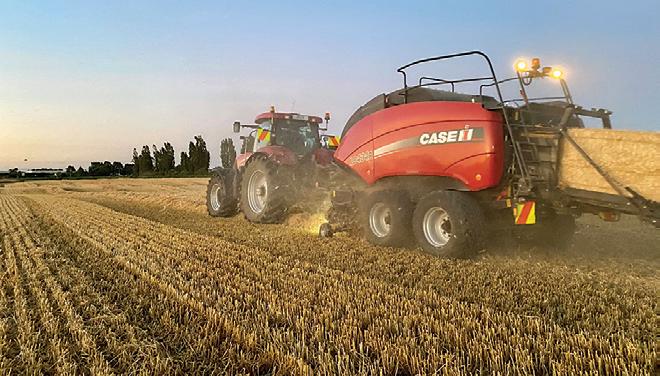
The search was on to find the cause of the losses, led by the Foundation for Arable Re search and the Seed Industry Research Cen tre (a grouping of research organisations and seed companies).
Over the last two years, many fields in the
Methven area were surveyed and a range of potential causative pathogens including bac teria and a range of fungal species identified.
Late last year, a breakthrough was made in understanding the seed head bleaching problem, when downy mildew was identi fied as the probable primary cause by Mark Braithwaite of Templeton-based Plant Diag nostics. Downy mildew, caused by Scleroph thora cryophile has subsequently been found in a range of cultivars and across cocksfoot fields in Canterbury.
Braithwaite said that it is probably not sur prising that it was a difficult organism to iden tify.
“It is a species of downy mildew that on ly produces spores under very specific condi tions and they are hard to detect.”

He said water was a key factor for infec tion during the growing season. A cool tem perature pathogen, it is active during cool nights, dew, and moisture.

Little is known about the life cycle of the organism and its survival, but it is likely to be systemic within the plant, possibly moving from the base to the top of the plant in cer tain conditions.

“We know more than we did a year ago, but there are still a lot of unknowns about this particular organism,” Braithwaite said.
“Nobody has all the answers, in New Zea land, or overseas and it is ripe for further study.”
Downy mildew is not a fungus, but an oomycete (like late blight in potato and white blister in radish). While not controlled by many fungicides, other products are availa ble for its control.
FAR research leader Richard Chynoweth said identification of the downy mildew co incided with a trial of differ ent treatments on cocksfoot at Ian Marr’s farm and an other at Wakanui last sea
son. “Two treatments with activity against downy mildew at Ian Marr’s farm were visual ly striking, staying green while plots with oth er fungicide and bactericide treatments lost significant green leaf. “They produced yields of 790 kg/ha and 620 kg/ha compared with 220 kg/ha for the control and 450 to 480 kg/ha for other treatments,” Chynoweth said. Further trial work is continuing this sea son.
CANTERBURY FARMING December 2022 17 0800 726 724 www.scorch.co.nz Terrestrial Wireless ADSL Fibre VoIP RBI GET CONNECTED WITH Scorch Broadband SCORCH COMMUNICATIONS Saturday 21 January 2023 Entry only $15 Children under 12 FREE FREE parking www.littlerivershow.org.nz Online Entries: www.showdayonline.com
]
Happy chappy: Highbank cocksfoot grower Ian marr is pleased the cause of big seed yield losses has been identified.
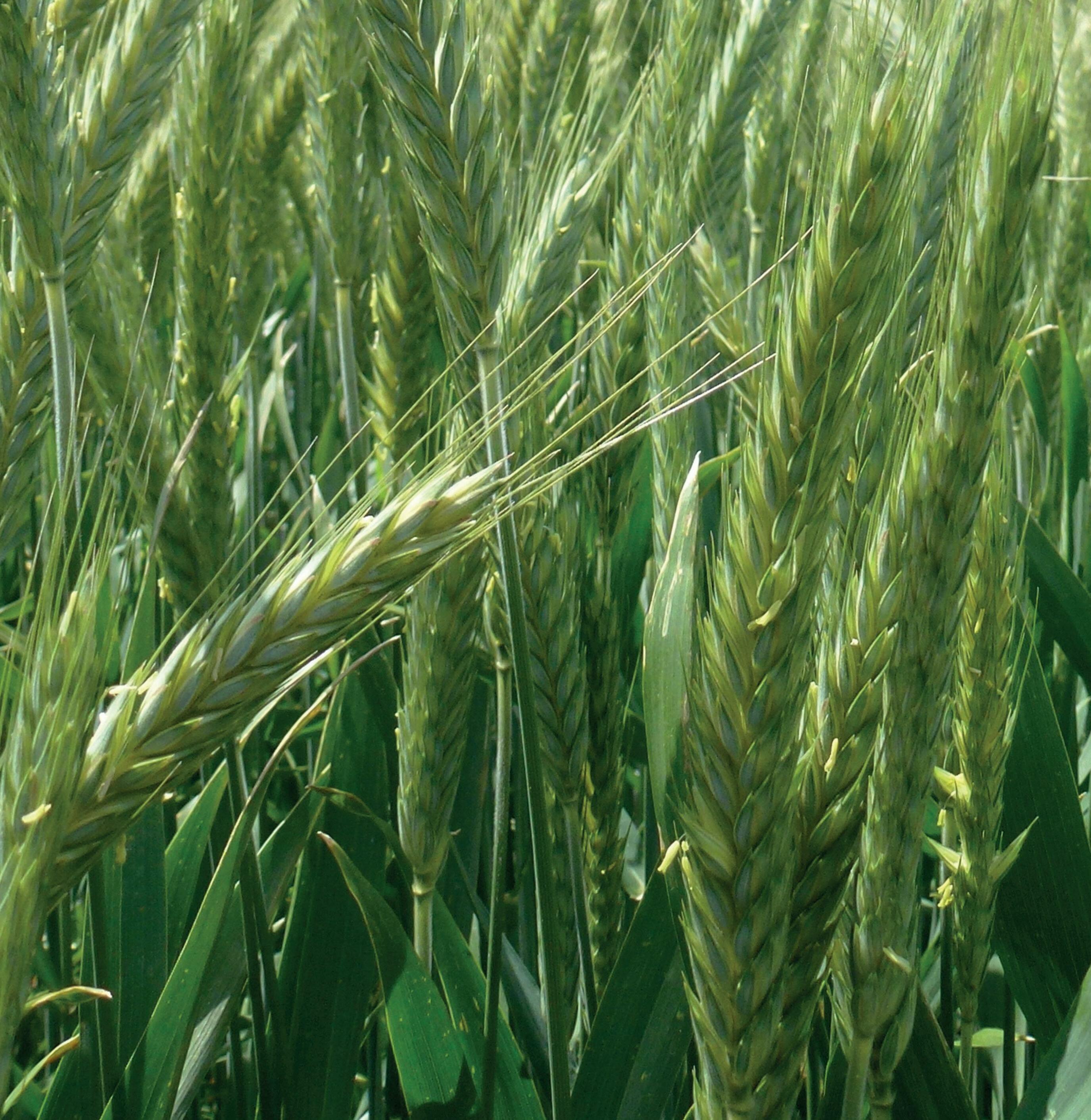


18 December 2022 CANTERBURY FARMING Delivering a complete suite of crop protection solutions for today’s arable growers. HERBICIDE Arylex active Rexade™ GODRI™ HERBICIDE Kerb™ 500F HERBICIDE Arylex ™ active Paradigm™ HERBICIDE XTRA Starane™ FUNGICIDE Acanto® FUNGICIDE Inatreq™ active Questar™ HERBICIDE POWERFLO™ Versatill™ INSECTICIDE Isoclast™ active Our portfolio of powerful, proven products has
farmers
the
Our
of innovative crop protection solutions
Visit
to
our
arable resources. Watching over your arable crops so you don’t have to. Visit us at corteva.co.nz ®, ™ Trademarks of Corteva Agriscience and their affiliated companies. COR-CTA0036
helped
from one end of
country to the other create and maintain thriving businesses, and has earned us a reputation as New Zealand’s arable protection specialists.
suite
provide local farmers with everything they need to win the war on weeds, pests and diseases.
corteva.co.nz
view
range of online
The ins and outs of maize silage
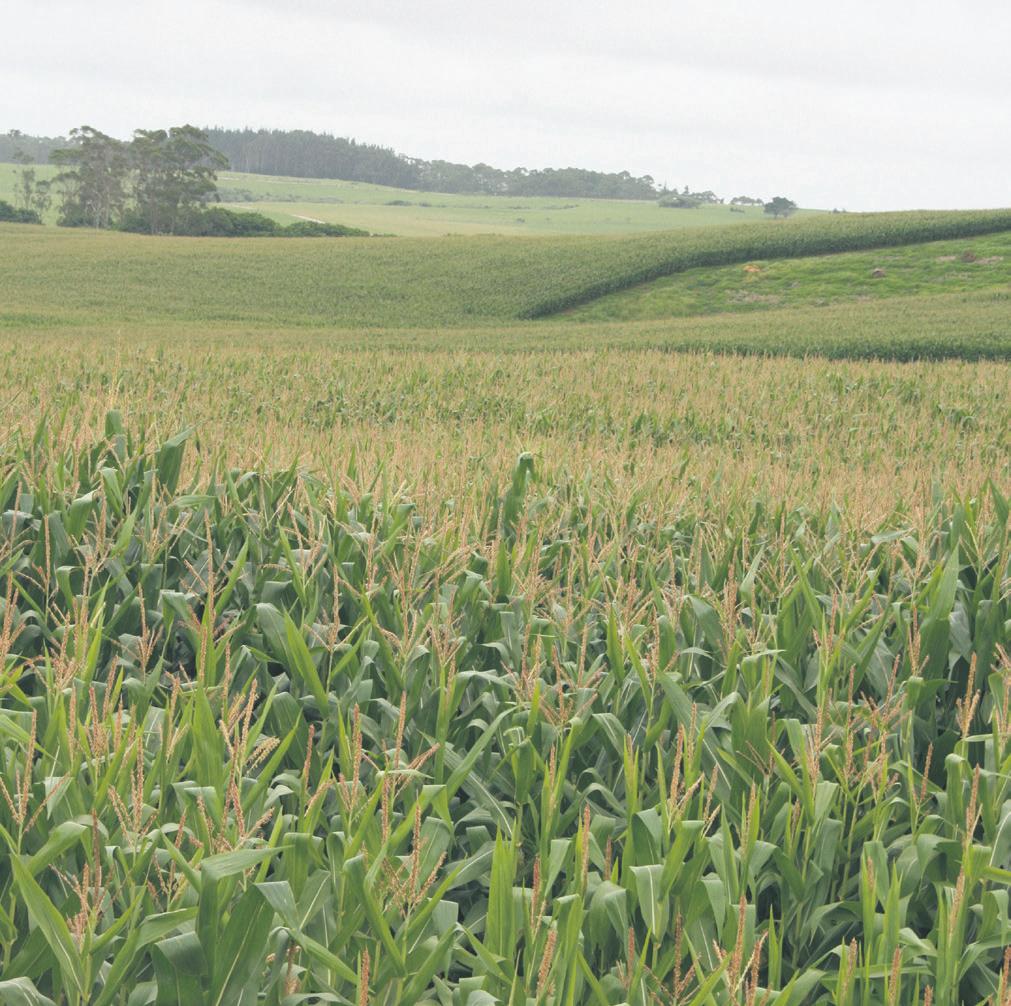

Storing maize silage
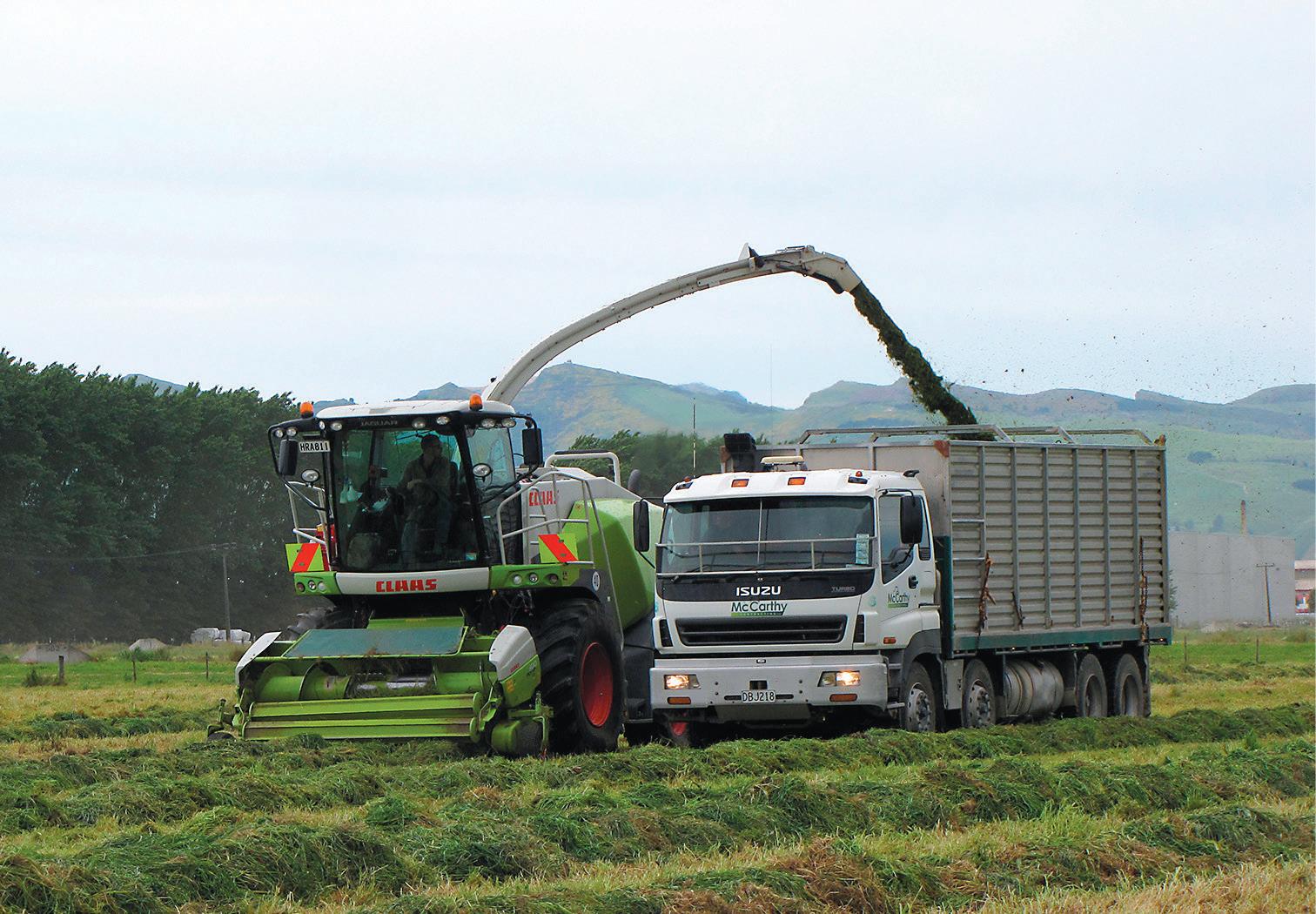
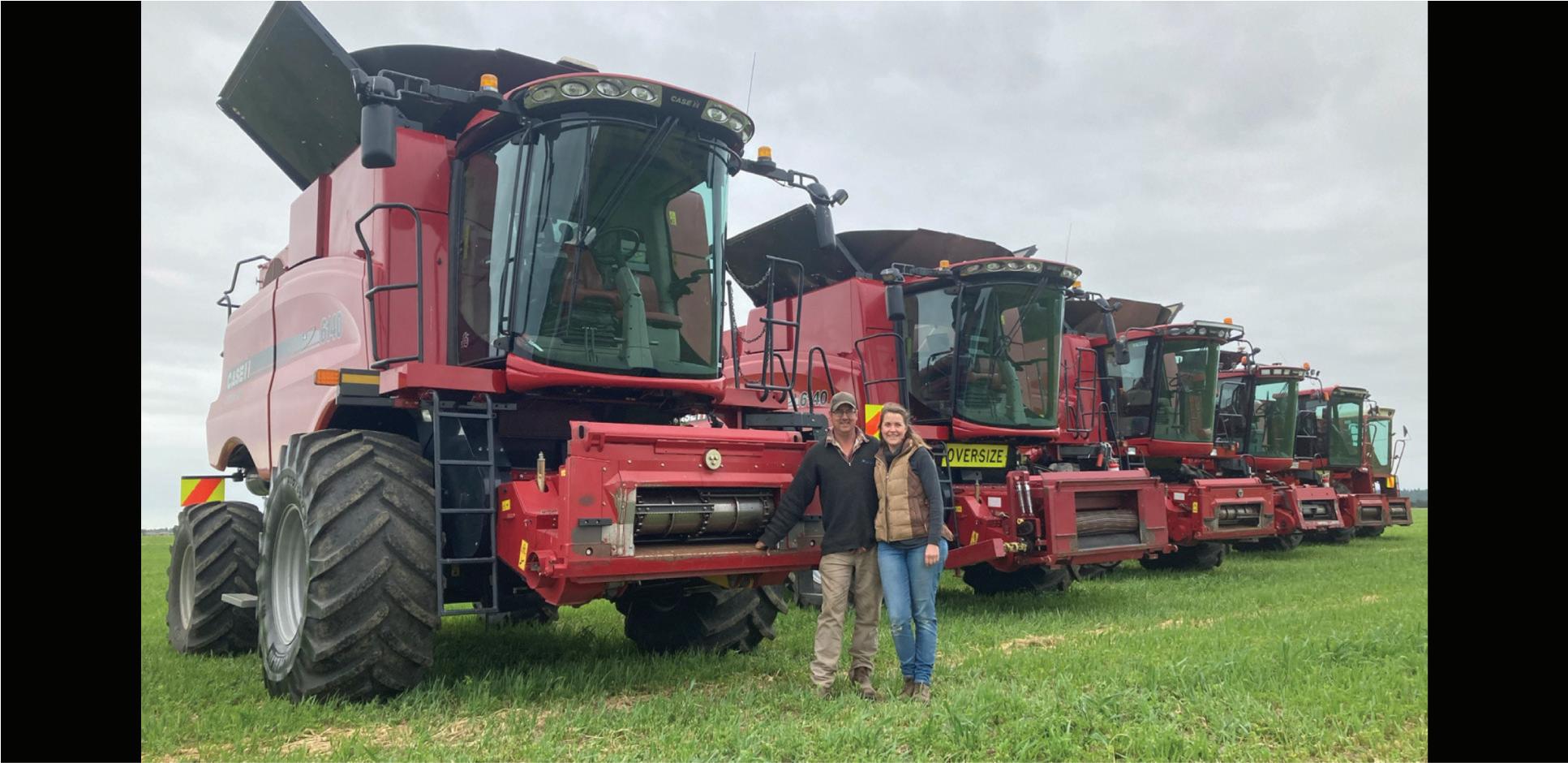
To minimise losses:
Maize silage is a high quality forage supple ment. However, it is particularly low in sodi um (Na), calcium (Ca) and phosphorus (P), and can be used as an effective carrier to supplement cows with magnesium (Mg).

Maize silage is a useful supplement for filling genuine feed deficits, but needs to be well managed to reduce costs and wastage. New Zealand trials have found production re sponses to maize silage between 32g MS/ kgDm and 178g MS/ kg DM.
The highest response came from more days in milk created by feeding maize silage in a year affected by a dry summer.
Analysis of more than 600 New Zealand dairy farms found on average, that supple ments fed added only 50 g MS/kgDM to an nual milksolids/ cow and 96 g MS/kgDM to annual milksolids/ha.

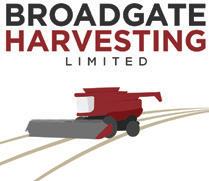
With such variation in response possible, attention to detail is required to turn addition al fed into additional profit.
Why is maize ensiled?
Maize silage is full of soluble carbohydrates which while being a great food for cows, is al so loved by spoilage bugs, such as yeasts and mould.
The aim of the ensiling process is to get air out of the stack and keep it out until maize silage is ready to be fed.
Consider stack location and prepare site in advance of harvest. Consider environmen tal implications, eg risk of runoff, distance to waterways, drains and other sensitive areas.
Consider whether to use a bun (stack) or a bunker. Buns can be located around the farm and therefore more flexible, whereas bunkers are initially more expensive but have higher compaction rate and therefore less wastage.
Stack dimensions, the aim is to build a stack so that when being fed out, as little maize as possible is exposed to air.
Consider quantity of maize, how many ani mals you are feeding and what inoculant you are using. Ideally it should take no more than three days to feed across the stack face, tak ing about half a metre each feed.

Cover immediately after contractor has fin ished rolling the maize. Seal around the base of the stack with soil, sand or lime and place tyres to completely cover stack.
Feeding out maize silage
When you start feeding maize open the stack at the opposite end of the prevailing wind to prevent air getting pushed under the cover.
Use a front end loader to create a face. Once the face has been created, chip away from the top to the bottom of the stack, rath er than lifting from the bottom of the stack face. Don’t ram bucket or silage forks into the face of the stack as this creates shatter and may allow air to penetrate the maize stack.
CANTERBURY FARMING December 2022 19 Call Matthew Reed today 021 526 576 ww w.broadgatehar vesting.com ] Article supplied by ] DairyNZ
Maize silage is a maize crop cut and ensiled in a stack or bunker. It is commonly used as a supplement to pasture in situations where cows would otherwise be underfed.



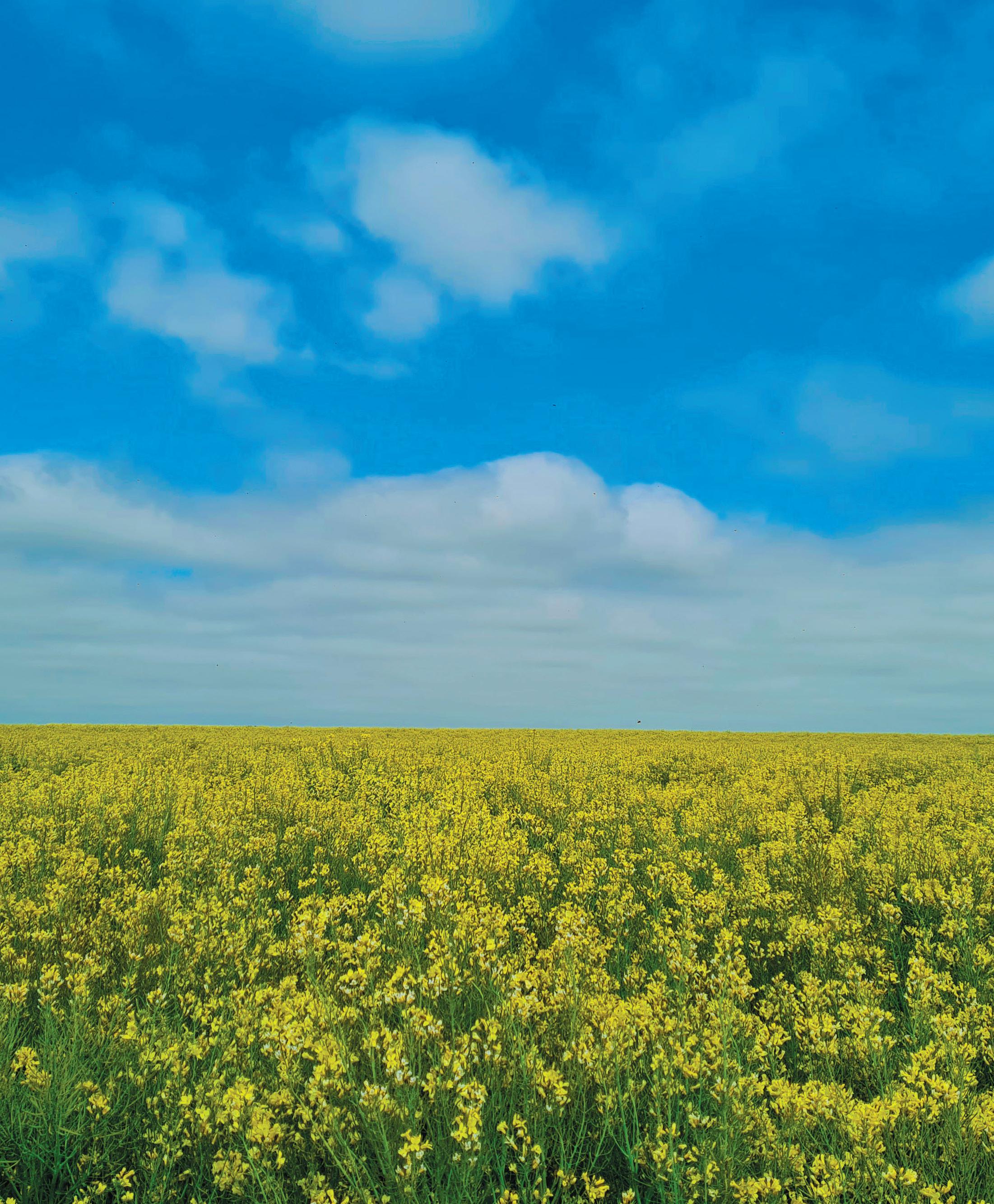




20 December 2022 CANTERBURY FARMING UPL-LTD.COM Stop seed loss with POD-LOCK® protectant sealer Lock-in your seeds’ full potential HSNO Approval code HSR002503. Registered pursuant to the ACVM Act 1997, No. P008857. See www.epa.govt.nz for approval controls. Pod-Lock is a registered trademark. Talk to your local merchant to find out more. Harvest more quality seed crops such as brassicas, oil seed rape, peas and beans with POD-LOCK . Boost your profits, and get a cleaner paddock for your next crop! POD-LOCK CANTERBURY FARMING FULL PAGE 370MM X 260MM
Vigilance ensures a better harvest


















with William milnes
Also there’s also nothing to compare to the peace of mind of knowing that a good source of feed is now under wraps, waiting to get your farm through rough times.



But there are also few times when Mother Nature seems more at odds with the farmer’s best-laid plans than during the runup to harvesting.

It’s a time when added vigilance is needed to make sure that pests and weeds don’t undo all your good handiwork, wasting valuable dry weight of feed even before the harvesting machine turns a wheel. For the busy dairy farmer it’s often up to contractors and technical advisors to fulfil this ‘watchman’ role.
Weeds are the first big threat, and they fall into two distinct categories.
Paddocks which have been in pasture prior to being utilised for the maize crop will benefit from a broad-spectrum grass weed herbicide, while non-pasture paddocks tend to harbour the seeds of broadleaf weeds instead.
An appropriate product which is not harmful to maize itself is recommended, as multiple applications may be needed to deal with hardy perennial weeds.
When plants are still small the greasy cutworm may make an unwelcome appearance – look for signs of plants completely ‘felled’ by these nasty pests, and confirm their presence by digging in the dirt around the base of plants. Synthetic pyrethroid insecticides knock these worms dead, and are best applied before cutworm feeding time at dusk.

Later in the grow the main insect pest is the ‘army worm’, a kind of caterpillar with a big appetite. While dealing with the army worm it’s worth noting the difference be-
tween this species and the corn earworm, which will generally only appear as the crop is pollinated. Thankfully, some species of wasp predate upon this pest, with nature cleaning up after herself in this case.
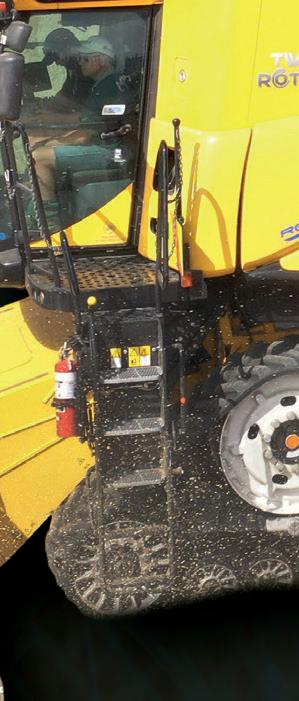
Fungal diseases also take their toll if the summer weather proves very humid – blights like eyespot being easy to tackle with fungicides, but only a real issue if environmental factors collude to produce very damp, sticky conditions.
By the time that this may be an issue, the crop should be too tall to facilitate ease of spraying with conventional means, and fungicides have sometimes had to be applied from the air in extreme cases.
With problems squared away it’s just a matter of waiting for crop maturity before firing up the harvester.

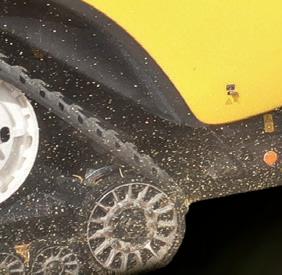

From the point of ‘silking’ (the emergence of silky fibres from the cob end), this is usually a period of about 50 days. Experts suggest that a more precise test is the examination of the so-called ‘milkline’ within the cob –snap a cob in two, and look for where the paler ‘milky’ line gives way to yellow, denser starch. A similar milky ‘cap’ exists at the base of each kernel of corn on the kind of corncobs we eat with the Sunday roast.
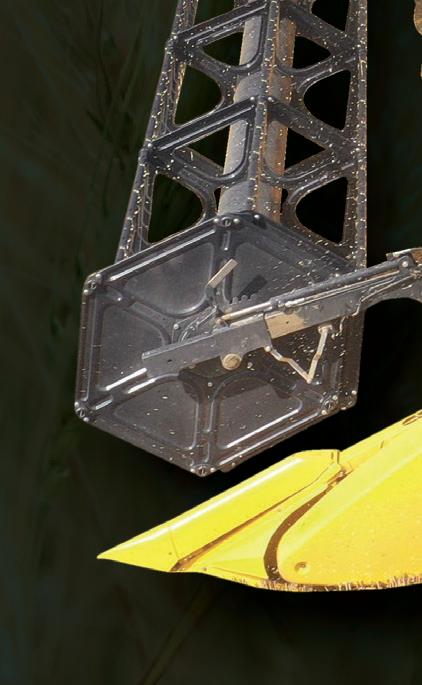
When this line is one-third of the way down the kernel in your maize sample, it’s time to harvest – though other factors must also be tak-
en into account, right down to the time of day.
The magic formula is all about dry weight – the part of the harvest which you (and eventually hungry livestock) will use. The harvest should be taken in when the percentage of dry weight is over 40% – this will lead to a dryer and more pest-resistant stack for silage users.
Many farmers will use the services of contractors and specialists to bring in the harvest – whether it’s the common crop of maize, or another variety of grain. But if you do maintain your own equipment to harvest crops, it’s a good idea to give this machinery a thorough test and shakedown prior to beginning the demanding and often time-consuming task of harvesting.
Most modern harvesting machinery, whether powered by a tractor or, in larger cases self-propelled, is the product of complicated engineering, and requires all systems (hydraulic, mechanical, electronic) to be regularly serviced to ensure safe and efficient operation. After all, there is little point in carefully preparing the paddock, raising a crop and protecting it from pests only to have the whole endeavour fall at the last hurdle.

When the harvest is in, storage for the long term is key – this is true from the simplest bunker of maize silage to the most advanced electronically monitored grain silo.

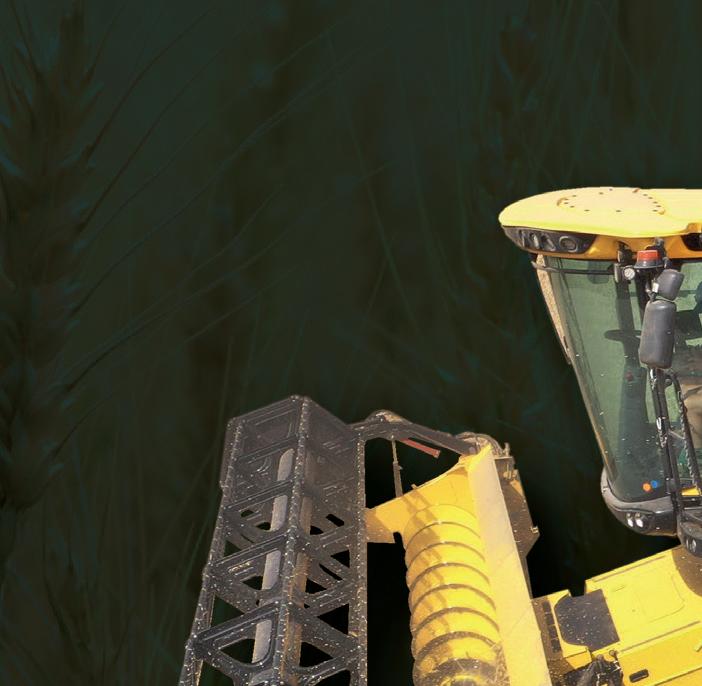
Once again, the name of the game is protecting your harvest from pests, such as insects, rodents, moulds and fungi, and throughout the history of farming this has been the case.
With a good supply of feed, kept under secure conditions, the oncoming winter seems far less of a daunting obstacle, justifying the investment of time, technology and effort into making this year’s harvest a bumper crop.

Inform next season’s decision making with yield data
CANTERBURY FARMING December 2022 21
Talk to your local Vantage Precision Ag specialist to find out how we can set you up to successfully capture this season’s yield data to make more informed decisions. info@vantage-nz.com | www.vantage-nz.com 0800 482 682
]
HARVEST PREPARATION
There’s nothing better than knowing that your seasonal maize harvest has rendered maximum yield –it makes all those hours of hard work prepping the soil and sowing the seed worthwhile.
Return of wheat milling confidence
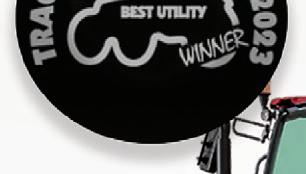





“That brings milling wheat hectares back very close to the 11,798ha harvested in 2021, before grower confidence was severely dented by changed buying practices by the mills and to a lesser extent poor conditions during last season’s grainfill,” Federated Farmers Arable Vice-Chairperson, Grains, Andrew Darling said.


The recently released October Arable Industry Marketing Initiative (AIMI) report found that both unsold and sold stored milling wheat was down on the same time last year, and that around 53% has been forward sold compared to 36% in October 2021.

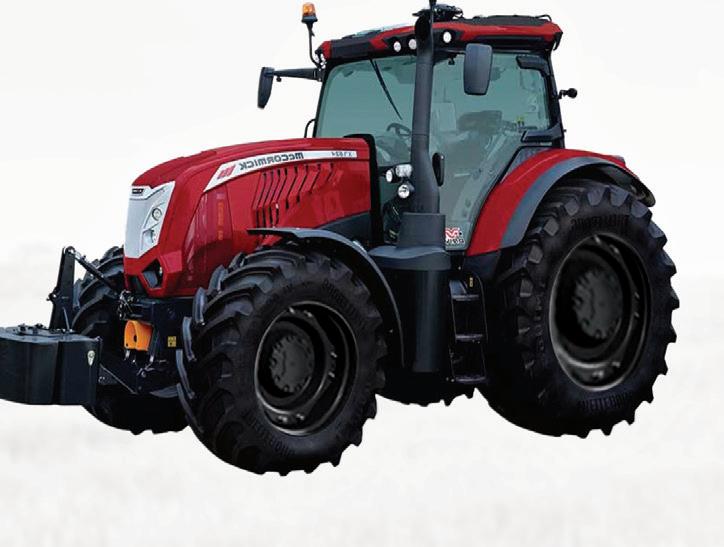





“It’s pleasing to see farmer confidence in milling wheat rally, especially given the industry’s ambitions for New Zealand to lift its production of this staple,” Darling said.






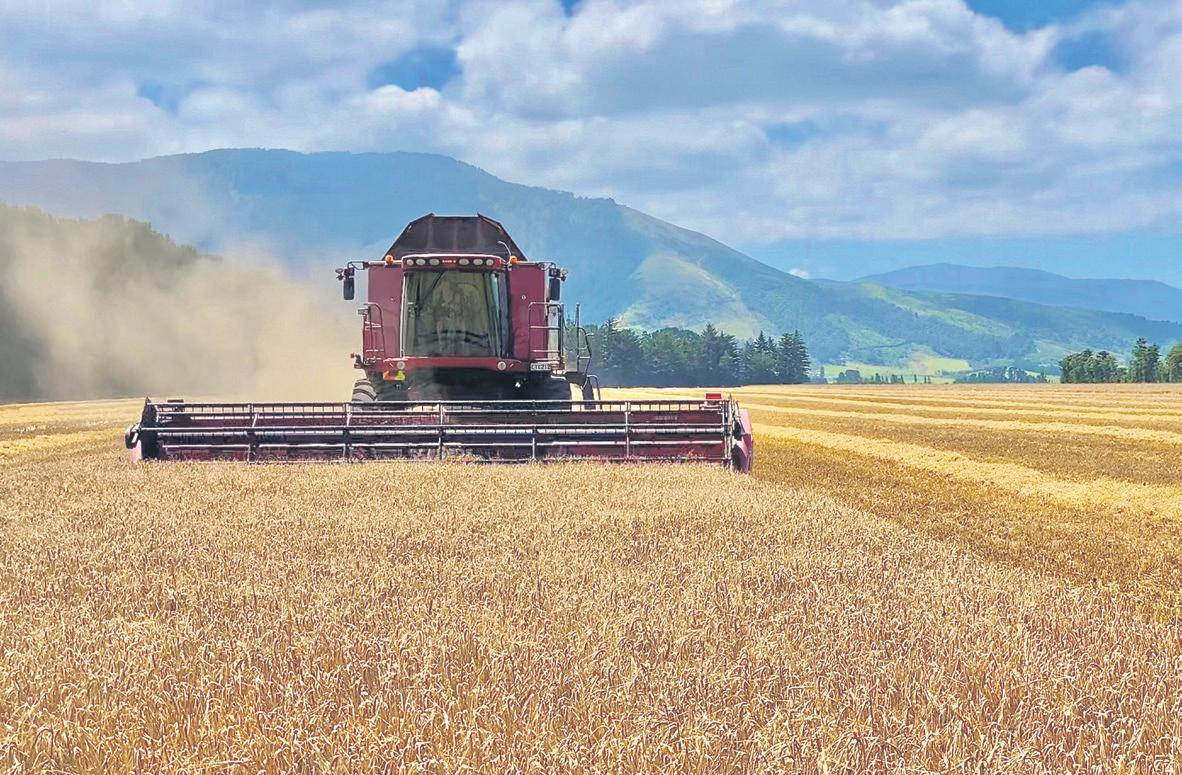

“But there’s a warning there too – milling wheat prices will need to remain competitive against returns from feed wheat, and contract signals given early enough at planting time, or growers will react accordingly.”

The estimated tonnage of unsold malted barley grain was 6,500 tonnes, up on the same time last year, while the estimated tonnage of sold grain still stored on farm was 1,800t, much lower than the same time in 2022 (17,600t).

The bulk of unsold malted barley grain will likely be sold as feed but as was noted by the AIMI working group, demand was still there. Heading into summer and the beer drinking season means it’s a good time to sell, although the working group noted this may not last and Kiwi families tightened belts with the rising cost of living.
The October AIMI report found total cereal grain production (wheat, barley and oats)
for the 2021/22 season was an estimated 767,000 tonnes, down 1% on the previous year. Maize grain production added another 195,000 tonnes to that total.
Unsold stocks of cereal grain across all six feed and other crops reduced some 63% between 1 July and 10 October 2022, and when compared to the same time last year are estimated to be 5% lower.
The total area sown or intended to be
sown in cereals is estimated to be 99,700 hectares – 5% (4,900ha) up on last season. At the time of AIMI survey 10 October, some 87% of this total had been sown, with a wet and cold winter and spring causing delays.
“After a wet planting most areas had significantly dried out, but a good dousing last weekend has set things up again for a decent harvest if conditions stay favourable,” Darling said.
22 December 2022 CANTERBURY FARMING • High Visibility Cab • 135hp, 146hp, 155hp Models • 6 Powershift Gears of 4 Ranges • 40km/h or 50km/h options • 2 or 4 speed Rear PTO • 114l/min CCLS Hydraulic Pump • Cab Suspension
190, 225 and
5
Cab
More information call us 0800 777 808 Visit our Website www.dieseltm.co.nz Mid Canterbury 12 Line Road Methven North Canterbury 342 Oxford Road,Fernside
•
240hp models • P6-Drive has 6 Powershift gears of
Ranges • VT-Drive is Continuously Variable 0.4km/h - 50km/h • 4 speed rear PTO • 123l/min or 160l/min CCLS Hydraulic Pump •
Suspension • 264hp, 286hp, 310hp Models • VT-Drive is Continuously Variable 0.4km/h - 50km/h • 4 speed PTO • Guidance Ready • 212l/min CCLS Hydraulic Pump • Climate Control Air Conditioning • LED Lighting Package
]
Article supplied by ] Federated Farmers
Growing in confidence: Federated Farmers says farmer confidence in milling wheat is on the upswing. Photo supplied by FAr
the
11,113
already sown or intending
Farmer confidence in
prospects for milling wheat is on the upswing, with the
hectares
to be sown up 44% on last season.
Dollar for dollar.
CANTERBURY FARMING December 2022 23
FROM SEPTEMBER TO DECEMBER 2022 SILVER FERN FARMS WILL MATCH THE VALUE OF ALL LIVESTOCK DONATIONS TO MEAT THE NEED, DOLLAR FOR DOLLAR. ANY DONATION, LARGE OR SMALL, CAN MAKE A DIFFERENCE TO KIWIS IN NEED. 1 COW CAN SUPPLY RED MEAT TO A LOCAL FOODBANK FOR 1 YEAR. SILVER FERN FARMS IS PROUD TO PARTNER WITH MEAT THE NEED TO SUPPORT NEW ZEALANDERS IN NEED WITH HIGH-QUALITY, NUTRITIONAL PROTEIN. FOR MORE INFORMATION OR TO MAKE A DONATION TALK TO YOUR SILVER FERN FARMS LIVESTOCK REPRESENTATIVE OR VISIT WWW.MEATTHENEED.ORG
Market
Summer should provide above normal temps and near normal or below rain fall, with soil moisture levels below normal, according to the seasonal forecasts.














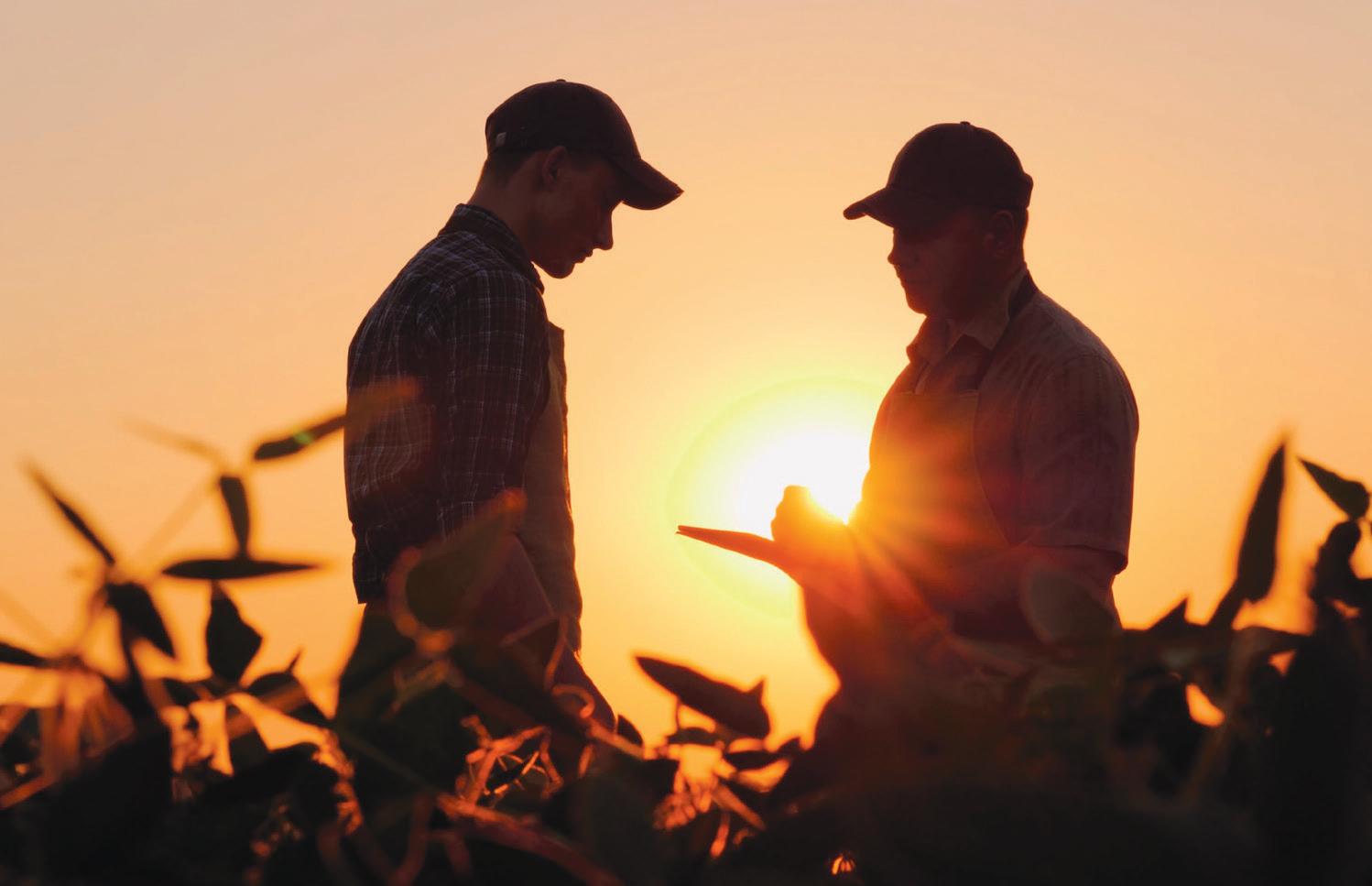
So, whilst the outlook maybe promising, prudent planning and feed management is still required as we know the impact the climate can have on our rural communities, particularly our farming families.

The hot conditions experienced in the New Zealand property market through the last few years, now seems a distant past… however our local Canterbury rural lifestyle market seems to continue to buck this trend with prices currently holding steady. Whilst the number of overall sales is considerably down from the booming market times, this is somewhat due to the lack of available properties in the market, with people often holding onto their treasured lifestyle properties and enjoying them, demand is still strong, especially for quality well-located properties with good access to the motorway system. With continuing upwards pressure on interest rates and affordability issues driven by inflation it may be that any price gains over coming year slow considerably, and with an election towards the end of next year we can expect some uncertainty to creep into the market.
If you are considering selling, it’s a great time to present your property with the vigorous growth of our Spring months highlighting some breath-taking rural lifestyle properties. Our agents get you more, with the largest real estate network in Canterbury our Harcourts team provides greater exposure for your rural lifestyle property, talk to one of team of Rural Lifestyle Specialists, “your country partner” today about a free appraisal of your property.

THIS SUMMER…
November we were again proud to be the major sponsor of the North Canterbury Wine Region Charity Golf Day at Pegasus Golf and Sports Cub, helping the North Canterbury Rural Support Trust, locals helping locals. The Trust is set up to assist rural individuals and their families to get back on their feet and is linked into local rural networks and can help people facing challenging circumstances, such as financial, personal, or climatic adverse events like drought, flood, or heavy snow.

WHAT’S THE Your Country Partner Rural | Lifestyle
At Harcourts, achieving your property dream comes down to our KNOW-HOW. When it’s time to sell your rural/lifestyle property, you want someone who lives and breathes the rural/lifestyle market, who knows how to build maximum interest in your property and can negotiate the best result for you. At Harcourts, we have the local knowledge, skills and technology to help you achieve your property dream.
24 December 2022 CANTERBURY FARMING
This
Greg Roberts Licensed Business Owner
OUTLOOK FOR THE CANTERBURY RURAL LIFESTYLE PROPERTY
Summer 2022
Four Seasons Realty
YOUR DREAM OUR KNOW-HOW Four Seasons Realty 2017 Ltd Licensed Agent REAA 2008 0800 789 1011 harcourtsfourseasons.co.nz Harcourts Rural Lifesyle








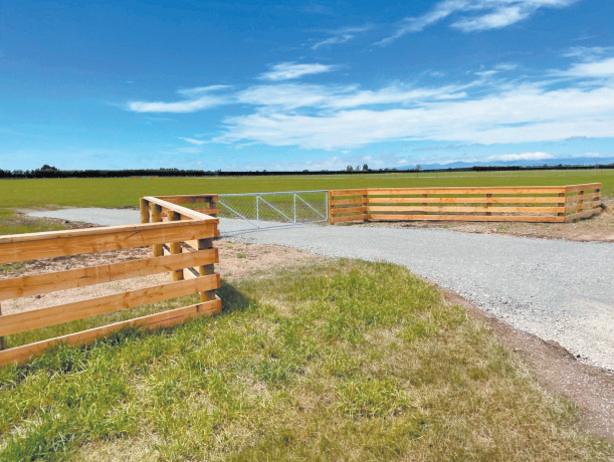
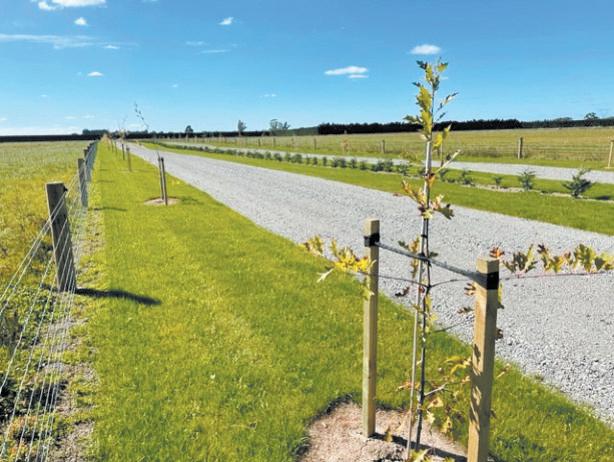


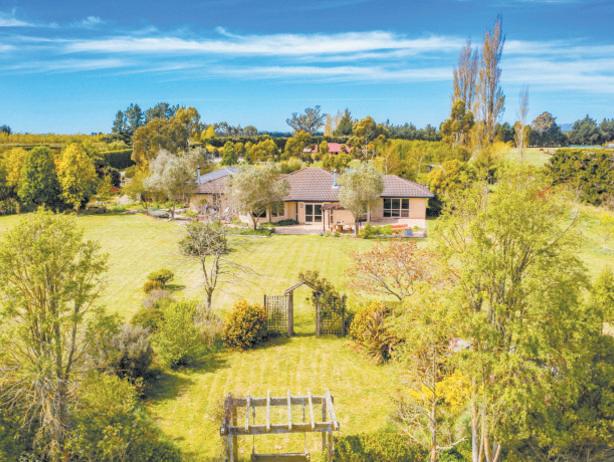









CANTERBURY FARMING December 2022 25 Four Seasons Realty Your Country Partner Rural | Lifestyle Four Seasons Realty
Planning for Spring pasture renewal

of spring renewal in your system.
In these situations spring is often the preferred time for pasture renewal as paddocks can be renovated when there is a feed surplus.
The best economic benefit usually comes from strategically targeting paddocks with comparatively poor growth and which can be easily renewed – keeping costs down.


Pasture growth varies between paddocks on every farm. On many farms the worst paddock only produces half as much pasture as the best paddock.
Pasture growth records and grazing information can be used to rank paddocks on their performance. One way to find out how much a paddock grows is comparing the number of times it has been grazed relative to the number of cows.




Paddocks can be visually ranked using the ‘pasture condition score tool’. Visual assessment is important for recognising fac-














tors causing poor performance (e.g. pests). However anecdotal reports suggest a visual check alone may not provide a true assessment of pasture yield.
The more methods and assessments you have to compare, the better (and easier) the decision to renew will be.

The highest-producing paddocks illus-
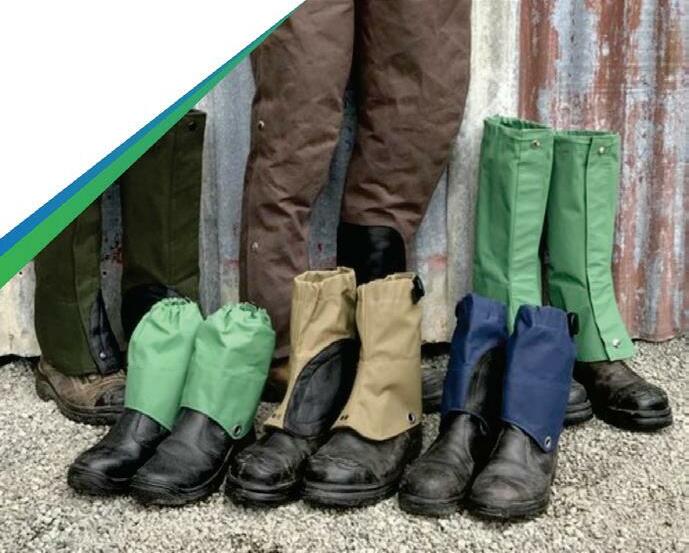
trate the farm’s overall potential. Taking into account differences in soil type, terrain and drainage, identify the worst-yielding paddocks that could perform at the farm’s potential if quality pasture renewal was undertaken. Understanding this potential yield increase from pasture renewal will allow you to assess the economic benefit
In highly stocked farms, the spring surplus period can be hard to predict and can cause pasture renewal to be pushed out past your targeted dates. A strong economic benefit –determined from a good analysis of how your pastures are performing – provides justification to continue with your pasture renewal plan and not delay too long.
Further, a potential cost to delaying spring pasture renewal is the continuation of a poorperforming pasture. Delays may also lead to ingression of weeds while a late sowing date increases the risk of a summer dry period affecting pasture establishment.
Under low stocking rates pasture renewal may be used to control late spring pasture surpluses, maintaining feed quality. Spring renewal effectively reduces the grazing area while the new grass is sown and establishes itself. A new quality pasture is then available in time for summer deficits.
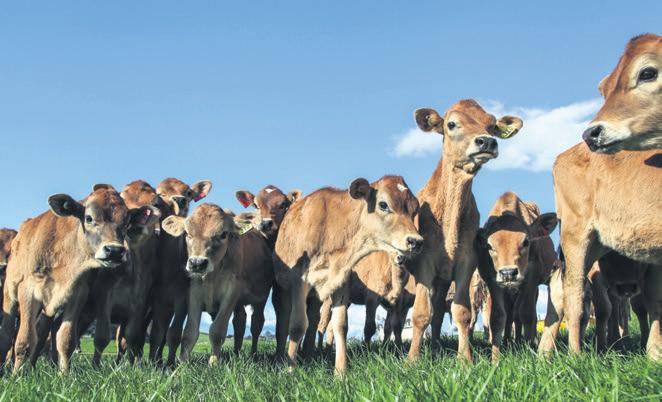
26 December 2022 CANTERBURY FARMING 20COC003 Contact us today www.cochranes.net.nz Ashburton 03 307 8027 Amberley 03 314 9055 Leeston 03 324 3791 Timaru 03 688 2179 BAR MOWERS • PROTECTADRIVE cutter bar safety system • Fast-Fit blades as standard • Hydraulic headland lift FROM 2.4M TO 3.5M GMD 240 GMD 280 GMD 310 GMD 315 GMD 355 Mt Somers Excavation Ltd GENERAL FARM MAINTENANCE • ALKATHENE PIPE IRRIGATION MAINLAND TRENCHING • 8 & 20 TONNE DIGGERS TIP TRUCK & TRAILER • GRADER SCREEN SHINGLE SUPPLIES • TREE REMOVAL Alistair Parris Owner/Operator • Ph: 027 434 7278 20 Hinds Gorge Rd RD8, Ashburton 7778 E: mtsomersexcavation@xtra.co.nz www.mtsomersexcavation.co.nz ] Article
supplied by DairyNZ
For South Island farms under irrigation, high altitude farms and farms not under moisture stress, new pasture can be sown in spring and autumn.
Ranking: Pasture growth records and grazing information can be used to rank paddocks on their performance.
When engine driven pumps are best
] by michael Prestidge ] Nevada Effluent Management ] Specialist
After all, the pump plays a key role in the whole operation.
If you’re wanting a mobile option, or you don’t have electricity running to the pond/ storage, then it narrows your choice to PTO or engine driven pumps – so when are engine driven pumps best?
And what should you look for in a engine driven pump?
PTO vs Engine Driven
Both PTO and engine driven pumps can be great mobile options for managing your effluent.
Engine driven pumps are most efficient for contractors and farmers who use them often and pump large volumes.

Here’s why:
• Having a dedicated engine is a good idea when it’s being used frequently, so it doesn’t tie up the tractor.
• There will be less transmission wear.
• There will be less depreciation on your tractor.

• The pump can be moved from farm-tofarm towing it with a Ute.

• Engine driven pumps can be automated so you can monitor them while getting on with other jobs.
• If you only have one or two farms, and are not pumping large volumes, a PTO pump is likely to be more economical. If you’re unsure which option would be best for your situation, give us a call and we’d be happy to advise.
What to look for in an engine driven pump
Make sure you’re getting an effluent pump designed to handle thicker slurries.
There are a lot of engine driven pumps which are only designed for water. These transfer pumps have large engines with large inlet and outlet pipes, so it’s easy to think these would handle effluent.
However, transfer pumps are designed to shift large volumes of water over a short distance, where effluent pumps need to handle thicker slurries and solids travelling over a longer distance.
Bigger is not always better
Don’t judge a pump by its horsepower. Like the point above, not all engine driven pumps are designed for the same purpose.

Just because a pump has a high horsepower, it doesn’t mean it will do the job better.
The effectiveness and efficiency of the pump will come from the pump design coupled with how it integrates with your effluent system.
For best results, match it with your pipes and irrigator
The pump is just one component of an effluent system, so it stands to reason the pump can’t perform at its best if the pipes and irrigator don’t match.
In fact, attaching a powerful pump to pipes that are too small to handle the vol-
ume and pressure being pumped through can have catastrophic consequences. No one wants a burst pipe, and it’s just a waste of energy for the pump.
Self-priming options
A pump that self-primes will make the job a lot easier, so we’d recommend looking for engine driven pumps with self-priming options.
Covered Body

You’ll want to make sure the body of the engine is covered and lockable. Not only is it good to protect the engine from unnecessary damage, but it keeps the user safe and your asset secure.
Automation
There are often automation options availa-
ble for engine driven pumps. These allow you to control and monitor the pump from an app on your phone.
While this functionality might not be to everyone’s taste, it can be very useful for contractors – allowing you to monitor the pump running remotely while you get on with other jobs, or for operators wanting to work remotely while looking after staff.
A more simplified option is a remote-control diverter. This can work on PTO or engine driven pumps allowing the operator to remotely switch valves via an app.
Sound Proofing
Some engine pumps have options for soundproof enclosures. This can be a useful option when needing to operate close to neighbouring properties where noise could be an issue.
CANTERBURY FARMING December 2022 27 nevadagroup.co.nz | 0800 464 393
Choosing the right pump for your effluent management is an important decision.
For best results, make sure your engine driven pump matches with your pipes and irrigator.

28 December 2022 CANTERBURY FARMING
National forage database helps with pasture planning
] by Kent caddick
AgYields (www.agyields.co.nz) is a central repository for all pasture and crop yield data and growth rate information collected in New Zealand.
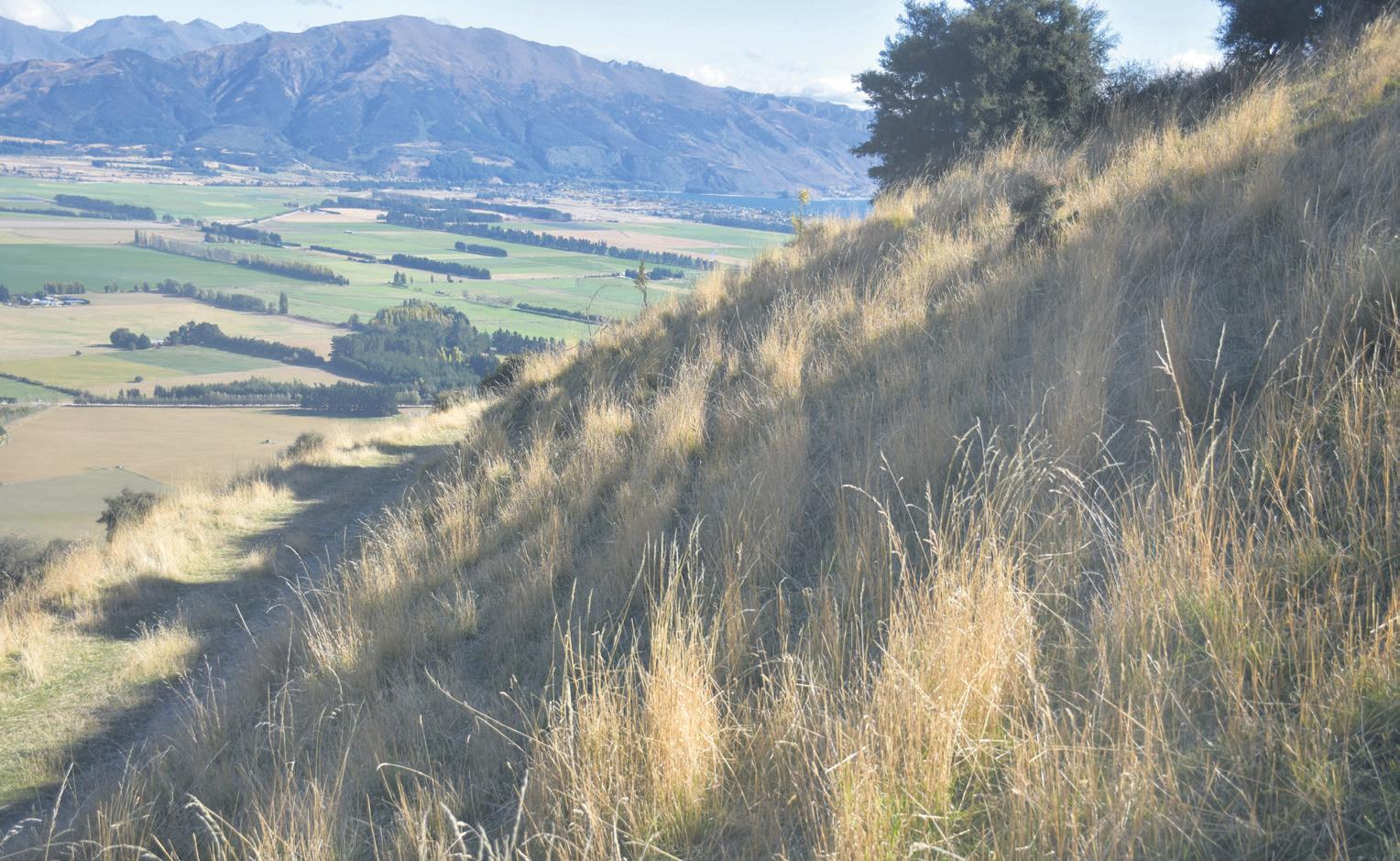
It allows farmers to see which pastures and crops have been grown in their districts and how much they grew so they can select more resilient pasture and crop systems.
Led by Professor Derrick Moot of Lincoln University, the software development of AgYields was funded by T R Ellett Trust and the populating of data by the Hill Country Futures Partnership programme.
Professor Moot said that AgYields will help farmers, rural professionals, students and scientists make key decisions around pasture planning.
“Measuring yield and growth rates for pastures and crops is vital for the prosperity of New Zealand’s agricultural sector,” Moot said.
“This data is expensive to collect and is often stored across a range of electronic and physical platforms, making it difficult to access easily.


“For the first time, the AgYields website consolidates this data into a publicly accessible resource.
“In time, AgYields will also provide guidelines for standardising future data collection and enhancing New Zealand’s livestock and crop production systems.”
Mhairi Sutherland, programme leader for Hill Country Futures, an $8.1m programme co-funded by Beef + Lamb New Zealand, the Ministry of Business, Innovation and Employment, PGG Wrightson Seeds and Seed Force New Zealand, said AgYields will be an important tool for hill country farmers.




“Hill Country Futures is focused on future proofing the profitability, sustainability

and wellbeing of New Zealand’s hill country farmers, their farm systems, the environment and rural communities and AgYields will play an important role in helping us meet this goal.

“Individual farms need local data on different species to inform feed budgeting programmes and make appropriate species selections for different environments.
“Accessing data about a range of species
will help farmers select appropriate species to address climate change challenges and work within environmental regulations.”
The database includes both peer-reviewed published data, as well as unpublished data. It references data source, location, soil type, basic management practices and dominant species.
Scientists can link yield and flowering data with meteorological information, which will
generate information for pasture and crop growth forecasting and predicting the impacts of drought on growth and development to inform regional decision making.
Data is being collected from a number of research and farm locations and will be entered into the database. Individuals and organisations are also being invited to contribute their data to enhance the utility of the repository.
by CP Lime
CANTERBURY FARMING December 2022 29
Three ways to healthier soil High-quality nutrients, pelletised for accuracy – our most popular blends have been improving soils for over twenty years. Call us 0508 678 464 or visit cplimesolutions.net.nz to book your test and find out which one is right for your soil. Optimise Fine Magnesium Magnesium Carbonate CO3 95% Mg 27.5% CO3 72% S 19.6% Ca 28.8% Optimise Fine Lime Sulphur Calcium Carbonate and Elemental Sulphur CO3 95% Mg 27.5% CO3 72% S 19.6% Ca 28.8% CO3 26.5% S 19.1% Ca 9.1% N 12.3% Mg 1.1% Humates 3.6% Optimise Kickstart Calcium Carbonate, Magnesium Carbonate, Elemental Sulphur, Ammonium Sulphate and Humates CO3 95% Mg 27.5% CO3 72% S 19.6% Ca 28.8% CO3 26.5% S 19.1% Ca 9.1% N 12.3% Mg 1.1% Humates 3.6%
A new national forage database has been launched to help farmers and rural professionals make informed decisions around pasture planning.
Planning ahead: AgYields is a national forage database aimed at helping farmers and rural professionals make informed decisions around pasture planning.
Reduce your NPK fertiliser cost by 50%
IT IS understood that growing almost anything increases your soil acidity or lowers the soil’s pH. While Aglime easily corrects acidification the final target pH level for optimum nutrient availability is and always has been a moving target.
WHAT IS THE OPTIMAL PH AND WHY?
Your soil’s pH is one of the key drivers in making nutrients available to the plant.
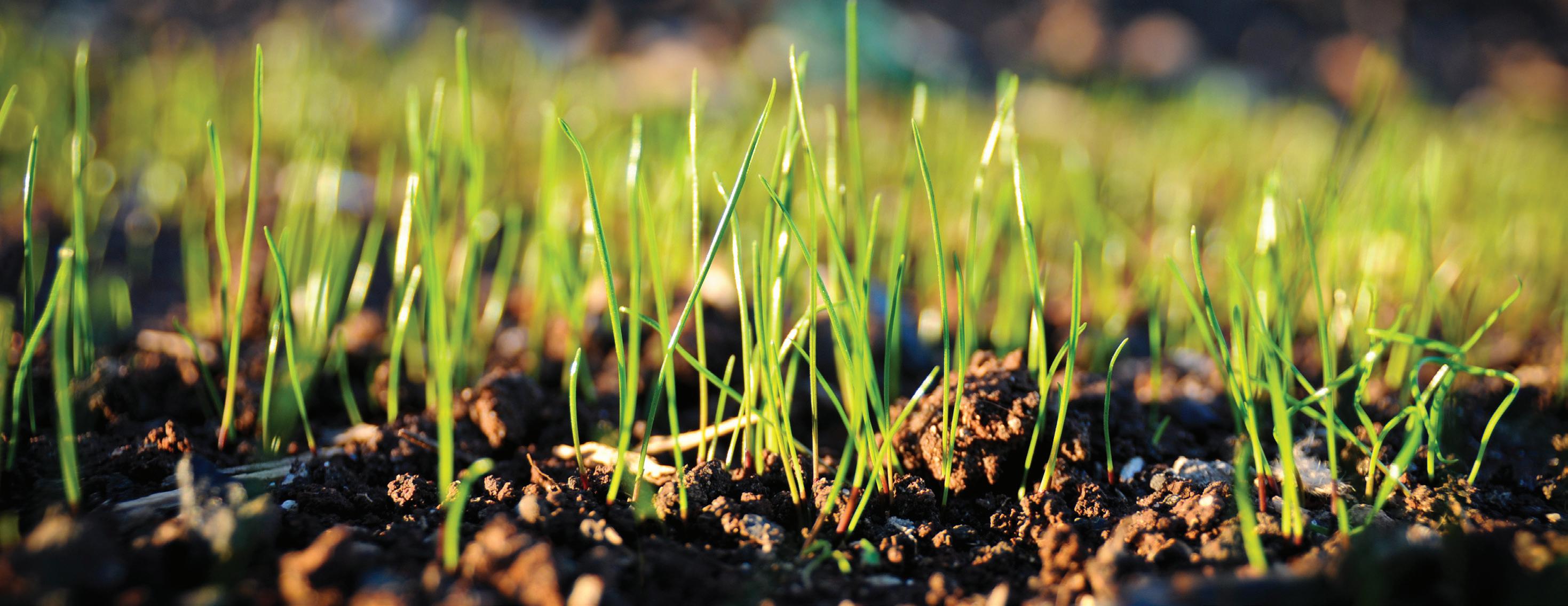
With a pH that is too low (< 5.5) trace minerals such as Aluminum become available which can heavily diminish growth or even kill crops. While the general consensus is that a pH of 5.5-5.8 is ‘good enough’, the science just doesn’t back this up.
The absolute building blocks for growth such as Nitrogen, Phosphorus, Potassium, Calcium, Sulphur and Magnesium, are not even close to their peak availability at a pH of 5.5 as shown in the table below.
As you can see a pH at 5.5 seems inefficient and illogical. However, a pH between 6 and 6.5 increases availability exponentially and even starts peaking across many nutrients.
“One aspect that has baffled us for years, is the apparent disconnect between fertiliser application and the availability or efficiency of the very nutrient being applied due to soil acidity.“
Almost every element of a fertiliser is represented in the nutrient availability table. When you are spending good money on fertiliser, you should be concerned if your advisors aren’t ensuring that the nutrient you are applying is at, or near, maximum availability. If they are not, you need to ask yourself why not? Maybe they have a vested interest in selling more fertiliser?
One of the fastest ways to neutralise soil acidity and increase pH is to apply lime. Liming is relatively cheap, especially when you consider that a shift in pH could potentially double the efficiency of a fertiliser in both the short and long term. The fertiliser efficiency table indicates this point and goes some way to show how a capital investment in lime may affect your overall and ongoing annual fertiliser spend.
NOT ALL LIME IS CREATED EQUAL
As a rule of thumb 1 tonne/ha of high quality Aglime will raise the pH by 0.1 pH unit. Therefore a 6 tonne/ha application is required to increase the pH from 5.7 to 6.3. To maintain the optimum pH of 6.2-6.5, maintenance applications of at least 500kg per annum will be required.
The above rates are based on high quality Aglime – that means a lime equivalency or ‘as delivered’ Calcium Carbonate content of 90% or greater.
The particle size should meet New Zealand Aglime standards of 50% passing 0.5mm and no more than 10% passing 2mm to allow good even spreading and consistent
long term release into the soil. Consider solubility and ensure you are dealing with a limestone resource that has been proven to lift pH as expected. Talk to a few neighbours, they will know the history.
Keep in mind that many lime companies can create specific lime and fertiliser/mineral blends prior to dispatch to make your annual applications even more cost effective.
SOIL PH TESTING
It is vital that you have a comprehensive soil test done prior to any fertiliser application to show what other trace minerals are present. Talk to your specialist lime company today.
30 December 2022 CANTERBURY FARMING 0800 303 980 • www.springfieldlime.co.nz • www.vlime.co.nz We’re here to help. If you have concerns contact us:
SOIL QUALITY FACTSHEET PRESENTED IN CONJUNCTION WITH VICTORY LIME
EFFICIENCY AT VARIOUS SOIL PH VALUES Soil pH N Efficiency P Efficiency K Efficiency Overall Fertilizer Efficiency pH = 6.5 95% 63% 100% 86% pH = 6.0 89% 52% 100% 80% pH = 5.5 77% 48% 77% 67% pH = 5.0 53% 34% 52% 56% vanRoestel, J. (2014, March). The Value of Maintaining a Good soil pH. MOLYBDENUM MAGNESIUM CALCIUM POTASSIUM PHOSPHORUS BORON IRON 5 5.5 6 6.5 7 7.5 8 8.5 9 COPPER & ZINC NITROGEN MANGANESE ACIDITY ALKALINITY SULPHUR NUTRIENT AVAILABILITY TABLE PASTURE MANAGEMENT ADVERTORIAL
FERTILISER
Seaweed tonic provides powerful growth boost naturally











Pastoral Improvements Limited





Using seaweed to promote soil health and plant growth has been part of our history since earliest records began. The introduction of modern science has allowed us to enhance one of nature’s richest resources to create increasingly powerful tonics which, in their natural liquid form, are more readily absorbed by the leaves and root systems to support and boost our soil and plants without the use of harmful chemicals.


“Seaweed and kelp contain a wide range of amino acids, carbohydrates, trace elements and minerals which, when applied in liquid form, are easily and readily absorbed by plants, forming a natural bio-stimulant to promote growth,” explains seaweed expert, Kath Coopey.












“To ignore the earth, root or the foliar system, limits the potential for increased quality and quantity.”


As New Zealand Seaweeds Limited’s technical services manager, Kath, has been
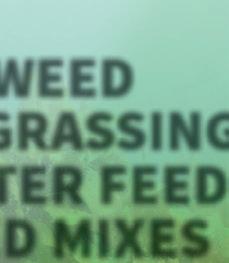

in the industry for over 30 years. She firmly believes in, and has seen for herself, the advantages of using liquid seaweed explaining that one of the biggest advantages is less waste.

“KoFert is an organic tonic produced from a combination of seaweed. It is taken up by the plant’s leaves and roots, and what ends up in the soil is beneficial to the mycorrhizae,” Kath explains.





“Compare this to solid products which sit around until they break down properly and once they do get into the soil, the plant may or may not take it up before it leaches out and is wasted, causing potential environmental issues. Not to mention it’s harmful to the same microbes that are benefited by liquid seaweed.”
As a concentrated tonic, KoFert application rates vary widely for different plants as well as depending on whether the application is via aerial spraying or ground spraying.


Ideally KoFert should be sprayed lightly onto the leaves for the foliar effect first. Un-
used tonic then runs down to the ground where it is readily absorbed by the roots.

National distribution is now via Pastoral Improvements Limited who recently acquired the production and marketing assets of KoFert and other seaweed derived products from New Zealand Seaweeds Limited.


Seaweed products they advise are a natural partner to their pastoral pasture seed and high diversity pasture seed blends.

New Zealand Seaweeds Limited’s technical services manager Kath coopey says KoFert is an organic tonic produced from a combination of seaweed, and is taken up by the plant’s leaves and roots.
As more farmers realise the advantages of using natural and organic products on their land, we find ourselves rediscovering techniques and solutions which have been around for thousands of years, except this time around, science and technology have assisted us in advancing these ideas even further. then
CANTERBURY FARMING December 2022 31 Tel: 0800NZSEED www.pastoralimprovements.co.nz Talk to the experts for your seed requirements. CONTACT US FOR KOFERT LIQUID SEAWEED REPASTURING & REGRASSING SUMMER FEED, WINTER FEED HIGH DIVERSITY SEED MIXES 0800 727 8873 New Zealand’s independent seed supplier. Merry Christmas from the team at Specialty Seeds
]
] Advertorial supplied by
Improve your soil’s water-holding capacity
Tolerance to summer drought on your property can be improved by understanding the connection between soil microbes, soil structure and water-holding capacity.
Golden Bay Dolomite
Soil is comprised of core elements, organ-







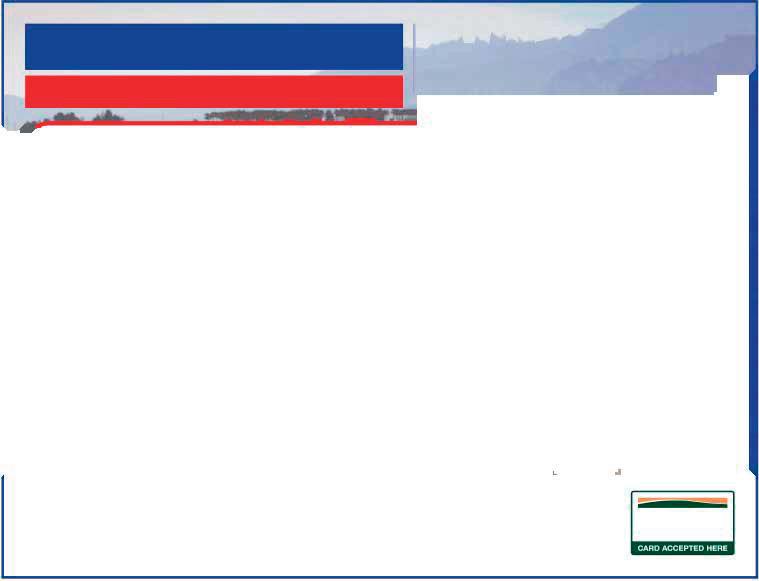







matter, mineral matter, air, and water as demonstrated (below) the ratio of air to water determines how soils perform in drought conditions.

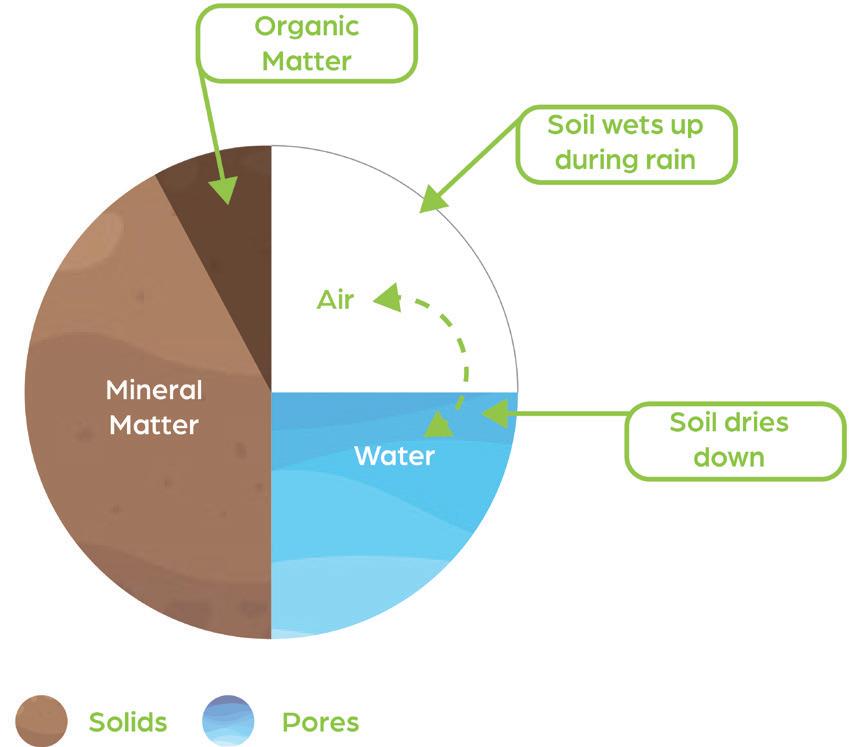


The Golden Bay Dolomite (GBD) recommended biological farming approach considers the structure of the soil microbes’ home with improvements the moisture-holding capacity of soil increases.
A soil that has good structure is characterised by the particles forming strong aggregates, this allows them to draw in more water and translocate it to a greater depth.
In comparison compacted soils that form under situations like repetitive cropping, with minimal structure and aggregation lack the ability to transport water to a depth and moisture is lost either as runoff or evaporation.
Well-structured soil can store more infiltrated water in the spaces between the aggregates and as mini water films around each individual soil aggregate.


This means soil with a good structure can “hold on” to water that is received and maintain a higher water holding capacity be-


GbD has the optimal percentage of magnesium to calcium. Apply GbD to improve your soils drought resilience.

tween rain or irrigation events. GBD has the optimal percentage of magnesium carbonate to calcium carbonate to achieve a balance soil structure.
Over the summer if your property tends to have issues with excessive runoff, poor water storage, and drainage – it’s time to revisit your soil management with a shift in focus to building soil health.
Improving soil aggregation with GBD creates a balanced system. Over time the dual
Soil composition core elements solids versus pores.
action of GBD containing both magnesium and calcium carbonate has a regenerative effect on soil structure and therefore its moisture-holding capacity.
To book a free soil consultation to understand how Golden bay Dolomite can support your farm on 03 525 9843 or sales@goldenbaydolomite.co.nz.
32 December 2022 CANTERBURY FARMING Changes in water flow due to soil crusting/compaction b) soil crusts over after aggregates break down a) aggregated soil Infiltration Surface crust Run off Want summer drought resilience? A healthier way Apply Golden Bay Dolomite to build your soil structure, improving: 03 525 9843 | sales@goldenbaydolomite.co.nz www.goldenbaydolomite.co.nz Book a free soil consultation today Moisture holding capacity Nutrient retention Healthy soil microbes Good soil structure keeps water: Palmer Agri Parts Direct Ltd .... '" ..... ... .,__... Kverneland • Overum • Kuhn Lemken• Dowdeswell•Vogel & Noot•Gregoire Besson• Clough • Duncan •Terradisc • Maxitill •Yeoman•Vibroflex •Connershea•Goliath• IHC• Sunflower•Topdown •Salford• Kongskilde•Napier •Vaderstad We can also manufacture any point you need! 0800472 563 0800 4 PALMER Farmlands admin@palmeragriparts.co.nz 34 Robinson Street, Riverside Industrial Park, Ashburton Palmer Agri Parts Direct imports and manufactures quality parts that fit machines indicated. These parts are not sold as genuine parts. co-operative ] Advertorial
]
supplied by
ic
Safety first with a chainsaw
] Article supplied by WorkSafe


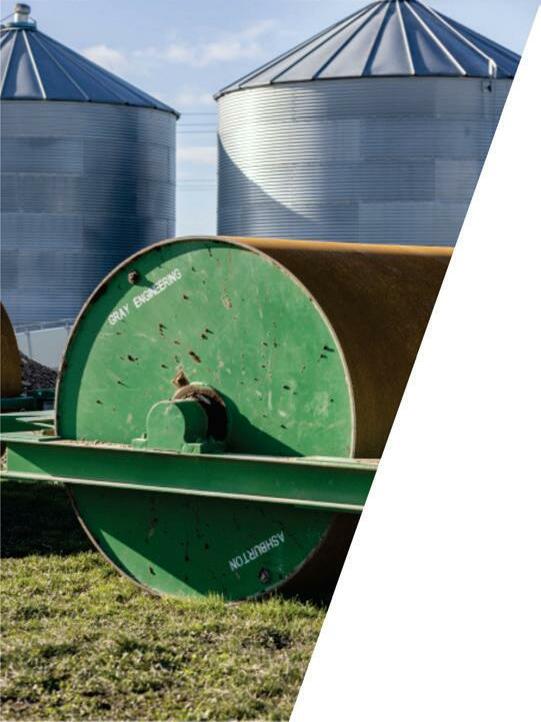
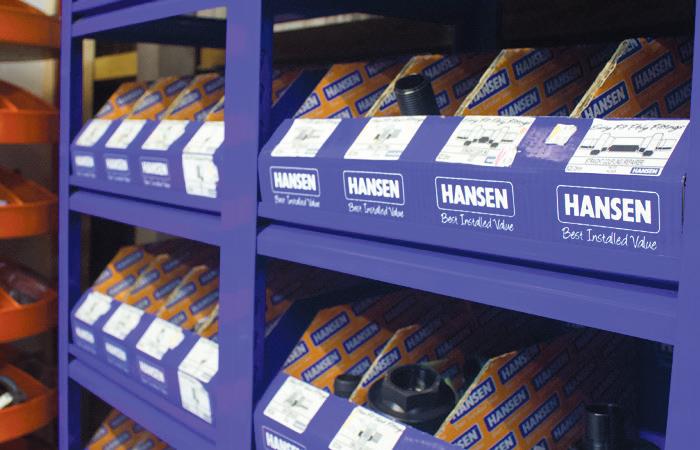


It makes light work of felling and cutting up trees, but a chainsaw deserves to be treated with respect. Carelessly used, inadequately maintained or incorrectly equipped, a chain saw can be a lethal weapon.
If you have just bought a chainsaw, you should read the manufacturer’s instruction manual carefully and familiarise yourself with your chainsaw’s operation.

If you have not used a chainsaw before, practice the cutting techniques on a stump or log before you attempt more serious work.
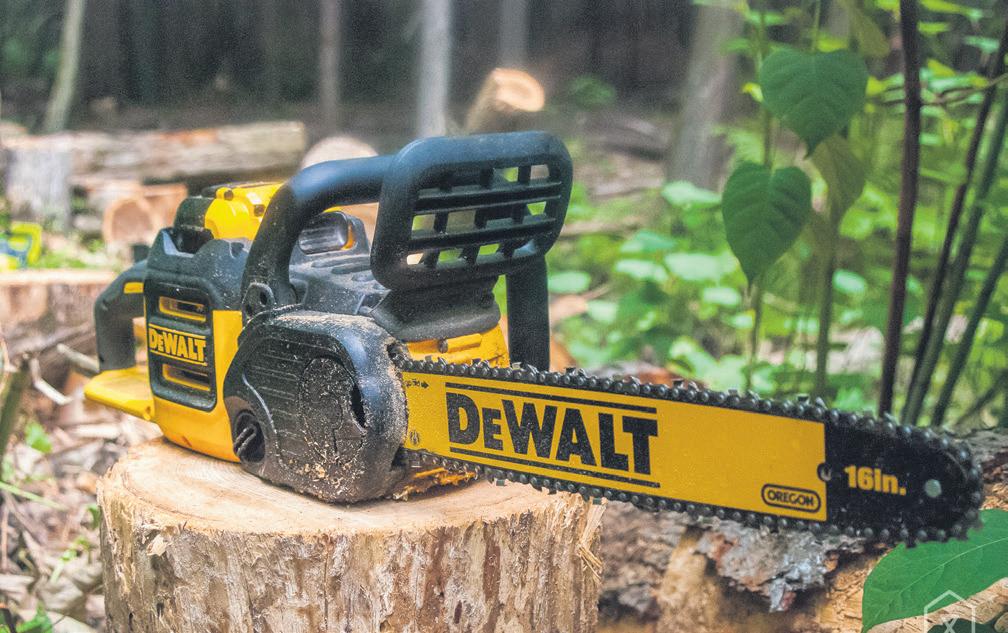
If you use your chainsaw sensibly, follow correct techniques and maintain your saw to the manufacturer’s instructions, it will pro vide you with safe and trouble-free service.
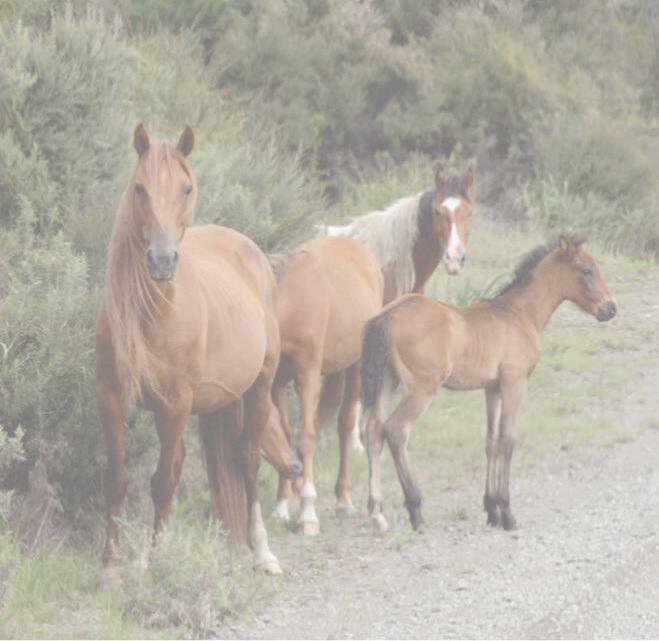
If you’re a chainsaw novice, it’s an ex cellent idea to get training from a qualified person. This way you learn by hands-on ex perience and avoid developing unsafe hab its right from the start. Your chainsaw dealer may be able to provide this instruction or put you in contact with a qualified instructor.
Work area safety
• It’s important to check the work area for hazards before you start felling or cutting.
• Don’t do anything that will harm anoth er person in any place where you are us ing your chainsaw (this includes harm to yourself).
• Check that there are no people or ani
mals in the work area.
• Do not work in adverse weather condi tions such as heavy rain, snow or high winds.
• Always ensure you have a clear work area where you have a stable footing and do not have to reach or work off balance.
• Make your way carefully on uneven or sloping ground.
• Shut the chainsaw off before carrying it. Carry it by the front handle with the bar to the rear – not on your shoulders.
If you are felling trees
• Make sure other people are at least two tree lengths away.
• Always have an escape route planned and cleared to the side and rear.
• Check for hazards in the area – such as electricity or telecommunication cables. If in doubt, seek advice from the control ling authority.
• Always check for any material such as branches or tops which may dislodge and fall into the work area as the tree falls.
General chainsaw maintenance






• Finally, keep your chainsaw clean and well maintained. Not only will it be safer to use, but it will also prolong the chain saw’s life.


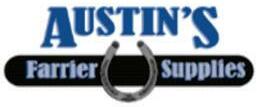
• Regularly: Clean your chainsaw, particu larly the air filter cooling inlets, sprocket

Safety first: carelessly used, inadequately maintained or incorrectly equipped, a chainsaw can be a lethal weapon.
cover and chain brake mechanism.
• Clean the guide bar groove and oil holes.

• Check the guide bar for straightness, burring and wear of the rails.
• Turn the guide bar reg ularly to ensure even wear.
• Check the sprocket and chain for wear.
• Check the chain for cracked rivets or side links.
• Check all nuts, bolts and screws for cor rect tension.
CANTERBURY FARMING December 2022 33 TOOLS OF THE TRADE 8 2 High Street, Oxford. 03 3 12 4521 O pen from 8 am Monday– Fri day & Saturday morni n gs FOR ALL YOUR IRRIGATION, ENGINEERING & HARDWARE SUPPLIES. Impressive range of irrigation fittings including Hansen • Hose clamps • Sprinklers • Trough valves • Valve boxes • Taps etc
The chainsaw is an indispensable labour saving aid used by thousands of New Zealand farmers, firewood gatherers and other non-vocational users.
The Bucket Test now an irrigation efficiency app
] by Kent caddick
CropX was founded in New Zealand after angel investors provided capital for initial work car ried out by Landcare Research. The company then moved to Israel.




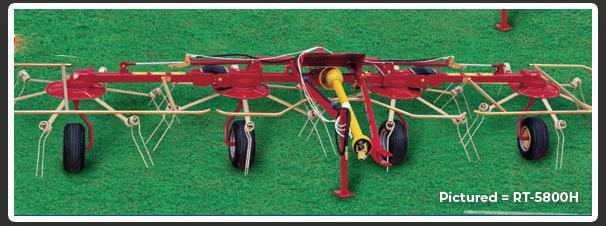
Its vision is to revolutionize and automate farm management using advanced Ag Analyt ics, similarly to the way satellite imagery revo lutionized pest-control management.

















CropX has now opened an office in New Zea land. It has also successfully acquired local company Regen, which provides cloud-based, precision effluent and irrigation decision sup port tools, including developing the irrigation efficiency app ‘The Bucket Test’ for Irrigation NZ.

IrrigationNZ and CropX have entered a joint venture agreement for the Bucket Test app.
The Bucket Test is an irrigation efficiency tool which determines application depth, rate and how uniformly water is being applied dur ing an irrigation event.

The simple method is based on collecting irrigation water in strategically placed buckets and measuring water collected over a certain period of time.
The app is used to collate this data and walks you through the steps to collect all rel evant inputs, provides the results instantly to your phone, and e-mails a summary report to you.
CropX New Zealand. managing director Eit an Dan, who has moved from CropX HQ in Is rael, said they provide farm-management tools which are affordable, accurate and practical.


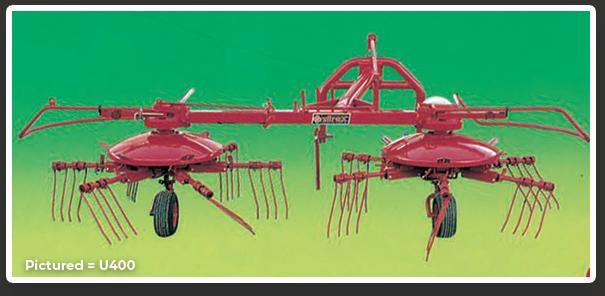

“The Bucket Test is another addition to the CropX toolkit,” Dan said.

“We’ve seen farmers in many countries cry ing out for an accurate way to measure irri
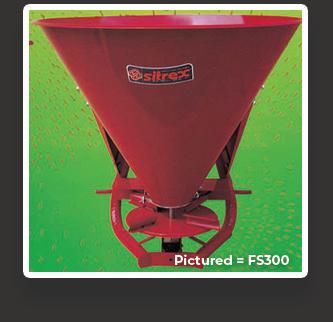
gation efficiency, The Bucket Test offers a ready-made solution that we can now bring to them.
“We look forward to continuing to devel op this technology with our New Zealand part ners and providing it to farmers across the world.”
Having developed the app with Regen sev eral years ago, IrrigationNZ is excited to work with CropX to further develop the tool.

“We’re very proud of the work we’ve done with Regen to develop a tool that takes the guesswork out of assessing irrigation infra structure performance,” IrrigationNZ chief ex ecutive Vanessa Winning said.
“It’s been used thousands of times since development with great outcomes, CropX’s ex pertise means we will be able to improve the app even further and deliver greater value to our members by ensuring it is brought into alignment with the IrrigationNZ Code of Prac tice for Irrigation Performance Assessment.”
The Bucket Test works well alongside CropX’s patented Soil Sensor which is embed ded with their digital platform, and has already helped thousands of farmers across the world. It was launched in New Zealand at this year’s Mystery Creek Fieldays, where it was a finalist in the innovation awards.
“We want to simplify the on-farm experience by giving farmers access to the full package of farm management software,” Dan said.
“The CropX solution and Bucket Test are the start of this, and over time we want to in crease our offerings so we can provide New Zealand farmers with the full package of af fordable and accurate farm-management tools that will allow them to farm sustainably and ef ficiently, without needing swarms of advisors on their farm telling them how to do it.”
34 December 2022 CANTERBURY FARMING TOOLS OF THE TRADE Sitrex has been established in the New Zealand market since the 1980's, providing farmers with quality cost effective solutions to agricultural tasks for decades. Call now to take advantage of these special M61 Baler Bale Chamber Bale length Capacity bales/minute Length Height 36x46cm 40-130cm 6-10 4.3m 1.6m Plunger strokes/minute Max. width of the pick-up Bale tie Weight Overall Width 90 170cm Twine 1250/1275Kg 256cm From $51990+ Working Width Weight Transport Width Number of Rotors 2.52-7.8m 165-1120Kg 2.2-3.35m 2-6 Rotary Tedder From $5999+ Weight Transport Width Working Width Power Required Min swath width Max swath width 1880Kg 2.85m 6.8-7.6m 40 Kw / 55 Hp 1.15m 1.95m Twin Rotary Rake $49990+ Rotary Rake Max Weight Transport Width Working Width Power Required PTO 865Kg 2.00m 2.5-5m 25-70 Hp r.p.m 540 From $9499+ Universal 400 Weight Transport Width Working Width / Raking Working Width / Tedding PTO 420Kg 2.25m 3.5m 4m r.p.m. 540 $13099+ Disc Mower DM4 DM5 DM6-S DM7-S DM8-S Cutting Width 1.67m 2.05m 2.45m 2.85m 3.2m From $15490+ Fertilizer Spreader Hopper Capacity Maximum Loading Capacity Width of Spread Three point hitch or trailed options available 144-500 Litre 450Kg 5/18m From $1290+ sales@sitrex.co.nz www.sitrex.co.nz 0800 777 808
Global farm-management company CropX has a bold vision to ensure New Zealand farmers have access to better farming data that can help them improve their efficiency.
New app: cropX New Zealand. managing director eitan Dan with a soil sensor which will work alongside their bucket Test app.
Seed growers united but international headwinds loom
The spreadsheet, available through the Feds News website provides a valuable tool to compare the relative merit of seed production contracts from competing firms. Growers can evaluate both price and terms in relation to their own production costs.
Federated Farmers Herbage Seed Subsection (FFHSS) chairman John McCaw said they worked with a group of growers to create the spreadsheet in response to concerns around a lack of profitability in the herbage seed industry.

“Rampant inflation and static pricing on the back of a poor harvest has seen growers move away from herbage seed production while others question its’ long-term viability.”
Rather than demand a certain price for seed, McCaw said the Feds were keen to work with industry to understand the true cost of production and quantify the extent of the problem. In that, they have been highly successful.
The group held a roadshow, meeting individually with 11 seed companies to present and discuss the spreadsheet. In every case they were well received and the call for improved pricing and profitability was widely supported.
McCaw said he was cautiously optimistic.
“The industry has never been so united. We’ve had a series of similar conversations
with all the major seed firms and we’re all on the same page.
“The scene is set for real change, but we face headwinds in international markets.”
Strong supply – particularly out of Denmark – combined with reduced demand due to Russian sanctions and drought in China has seen a correction in international pricing, while elevated freight cost and delays around shipping continue to erode New Zea-
land growers’ competitiveness.
“Of particular concern are the high-volume international seed traders who dictate the price of commodity seed, trading on volume and margin with no consideration of cost of production. Put simply, international buyers will not pay what NZ growers need at this point,” McCaw said.


“New Zealand seed companies now face the difficult balancing act of increasing the
grower price in line with industry expectations whilst not pricing New Zealand Inc. out of international seed markets.”
He said growers should expect a considerable range in pricing and terms across firms and across cultivars for the 2024 harvest.
“The cost of production calculator is a powerful tool to unite growers and give them information they need to respond to these price signals and optimise their crop rotation.”
CANTERBURY FARMING December 2022 35 TOOLS OF THE TRADE • Driveways • Earthquake Repairs • New Home Specialists • Patios & Paths MACHINERY SALES & CONSULTANTS We have the tools to be efficient, so you can get on and spend your time where its more important & effective. www.allagri.co.nz Blair 027 333 6616 Chris 027 338 6616 Terry 027 344 6616 ] Article
]
supplied by
Federated Farmers
With seed firms poised to release next year’s contract offerings, Federated
is
seed growers to utilise its cost of production calculator. Hornby Construction Come and visit us at 278B, Main South Road, Hornby www.tradezone.co.nz Open Mon - Fri 8am to 5pm / Sat 9am to 12pm www.drillstapsdies.co.nz
Farmers
encouraging herbage
Property | Family | Wills Trusts | Estates | EPAs | Rural Business | Traffic | Employment Leeston (03) 324 3033 Email: lawyers@anglands.co.nz | www.anglands.co.nz Solicitors of Selwyn since 1965 Ronald W. Angland & Son LAWYERS
Calculate: Federated Farmers is encouraging herbage seed growers to utilise its cost of production calculator for which growers can evaluate both price and terms in relation to their own production costs.













36 December 2022 CANTERBURY FARMING CHRISTMAS CLOSURES









CANTERBURY FARMING December 2022 37 CHRISTMAS CLOSURES
One company, one family, 100 years


I, they were flax millers in Southland. Sadly, John wouldn’t make it home from the war, however this didn’t stop Norman, who in 1919, along with his father and other family members, started native sawmilling in Happy Valley, Tuatapere and Sutherlands Sawmill was officially incorporated on March 12, 1920. The timber was trucked out to the rail
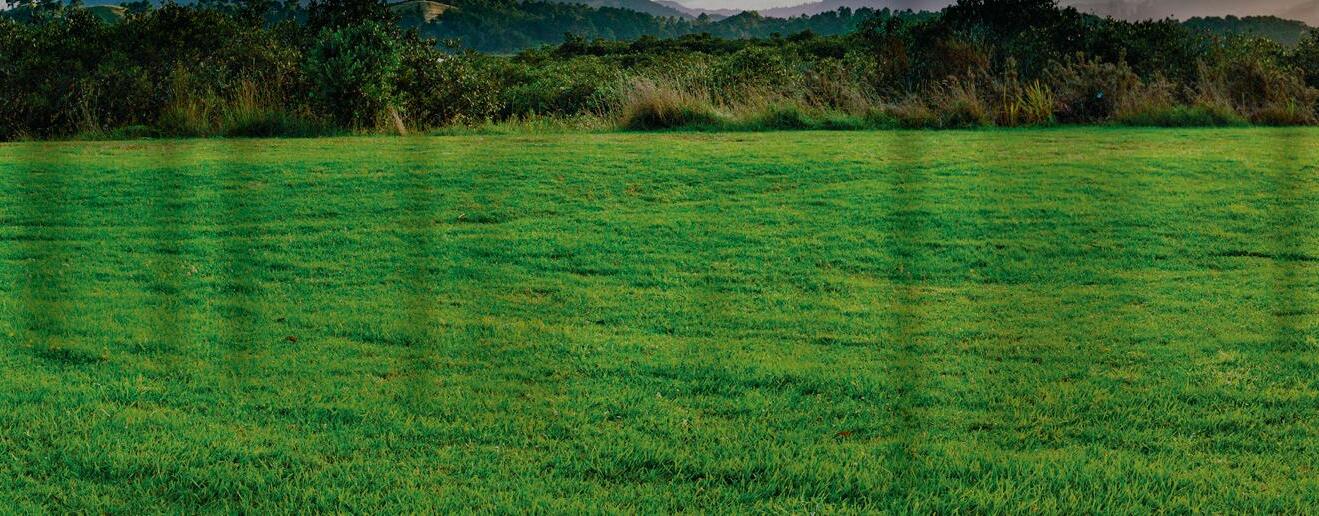

head at Te Tua then off to the market from there. From Tuatapere they moved the mill by bulldozer and truck out to Chaslands, which is out south east of Balcultha and Clinton.
After World War II the third generation of Jack and Ian Sutherland picked the company up and moved north to Cheviot to set the mill up at the rail siding.
The location was not the only change at this time, as they started milling plantation pine trees instead of native and in 1956 Jack and Ian finally moved to Kaiapoi, the site the sawmill currently operates from.





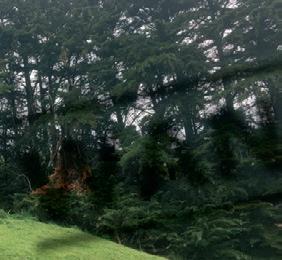

In 1988 Murray Sutherland received the call no one wants, their mill was on fire. It was a total loss but unrelenting, they hired a portable mill and carried on and by 1989 a new mill was commissioned and operating.



In the 1990’s, Muzz and Annie Sutherland took the lead and started to develop the modern processing facilities that they have today.


Kilns, planers and treatment plants were added along with the dry sheds. Along with sawmill development, frame and truss and ITM Trade and retail outlets were added as an outlet for timber sales.


These developments allowed for the expansion of the export markets for their timber products.
The mill continued to grow through the 2000s with the addition of an edger, resaw and docking system. The Christchurch rebuild saw an upgrade the mill and Muzz and Jonnie decided to grow the business and brought the Brightwood Green Mill, in Otautau as part of their expansion. Muzz said “I’ve just bought a mill, 30km from where we started 100 years ago”.
This strong history of sawmilling has helped set up for the future the fifth generation of Sutherlands that currently operate the business.
For them, the family history is what it’s all about, having something to pass onto their kids (the sixth generation including Jonnie Sutherland – Group GEO, Davie Sutherland – GM of the ITM stores and Amy Sherwin – Marketing co-ordinator for Sutherland Timber and ITM stores). A sustainable business for the next 100 years.
38 December 2022 CANTERBURY FARMING FORESTRY & LOGGING Forest Management LTD With 25 years experience in the industry, the Forest Management Team offer services in: • Woodlot and shelterbelt harvesting • Timber sales to domestic and export markets • Forest establishment of harvested and greenfield sites • Forest valuation • Emission Trading Scheme advice and management • Trainer/Assessor in NZQA forestry related units Our highly experienced teams aim to ensure value optimisation in all aspects of forest management. To find out more call us on 03 343 4101 or visit www.forestmanagement.co.nz 021 325 661 21 Manion Road, Rolleston www.macrocarpasupplies.co.nz SUPPLIES LIMITED PHONE KENT ON Your Old Macrocarpa Trees Do you have a stand of trees? Would you like these removed? We can offer you competitive rates and cash in return! WANTED! Pole Sheds & Hybrid Pole Sheds! Hybrid sheds mix timber and steel components. 9.0 wide bays no problems! Clear span no issues! Selw yn 15 Station Street, Leeston 7632 Phone: 03 324 3385 Email:info@buildlinkselwyn.co.nz 133A King Street, Kensington 7910 Phone: 03 688 4944 Selw yn Timaru Email:timaru@buildlink.co.nz www.buildlinkselwyn.co.nz www.buildlinktimaru.co.nz ] Article supplied by Canterbury ] West Coast Wood Council Prior to World War
Logging and forestry have been a part of Sutherland & Company Ltd for a long time. At the beginning of the 100 year journey, Norman and John Sutherland, or Snow and Jack as they were known, had a dream of sawmilling.
current Sutherland & company Ltd ceO Jonnie Sutherland at the canterbury West coast Awards in August.
] with Allan Laurie mNZIF ] Laurie Forestry Ltd






Challenges ahead but some positive signs


Most commentary is suggesting the recent interest rate hikes will drive a wedge into new house starts, thus we can expect wider impacts across the construction sector. There is certainly a bit of scorn being directed toward Wellington, with the PM now firmly off sawmills owners Christmas card list.

In China, the fundamentals remain weak but there are small flickers of flame way down the Q1 2023 tunnel. As at mid-November, daily usage is hovering around 70,000 cubic metres per day across the eastern seaboard for all softwoods, well off the pace of the normal 80-90,000 we would typically see at this time of year.

But a significant positive is the rate of consumption is happening in a nation where Covid lockdowns in large cities remains the order of the day. Another positive rests in NZ’s now total dominance in the softwood fibre trade. NZ Radiata pine is now in excess of 85% of all China supply with European spruce basically out of the game at current US$CFR levels (log prices landed China).

Russia is of course out of the supply sandpit as is the Pacific North West, and supply out of Uruguay is on its last legs. This then leaves NZ in a pretty favourable position as and when the market recovers.


The very suggestion that it will recover is premised on recent heartening signs in China. The Government has recently announced two tranches totalling RMB130bil that is essentially a rescue package to construction sector debt. This is not currently turning the market with little sign of investment into new projects. But the overall market sentiment has improved and in China, sentiment is everything.




Also, in early November, the Chinese Government released new policies for Covid control and the real estate sector. The basic principles of this include that China will look to move towards a less restrictive approach, with rumours that the borders may fully open at some stage next year (perhaps Q3/4). This news has also improved market sentiment.
Shipping rates have been a dominant factor in reducing NZ forest grower returns for most of 2022. The day of reckoning has arrived and the NZ forest sector is certainly not offering up napkins for ship owners to dab their bloodied noses.
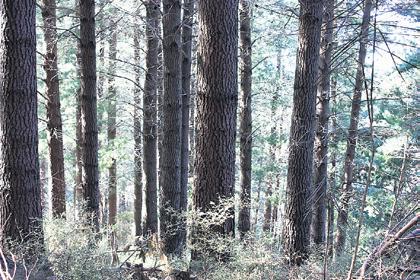

In June this year I paid US$77 per cubic metre for a shipment of logs to China. Negotiations are already under way for our December vessel with the low $30’s on the table
and the ship owners are not flinching. Indeed, they seem highly eager to sign off the Charter party Agreement. Right now, there a plenty of vessels opening on NZ and charterers have choice.



Christmas time in NZ, followed by Chinese New-year, always brings some elevated uncertainty to the market as we effectively have three weeks when we are not producing and three weeks when China is not consuming log and lumber.
Thus, for NZ Forest Growers, December and January are going to be difficult. Although shipping rates are falling sharply, so is the selling price in China with sub US$120 per cubic metre A grade basis, very much in the negotiation mix. It was well north of US$150 not that long ago. Add in a strengthening Kiwi dollar against the US$ and drops in NZ wharf gate prices would appear more likely than not.
Thus, we end a year of huge challenges, high levels of uncertainty and difficulties in realising that wonderful word, ‘profit’. We should remind ourselves we live, work and play in paradise, unlike many peoples of the world.
My special salutations to readers, your positive comments are appreciated and it is
great to know keeping the information flow going helps in even the smallest of ways. I extend best wishes for a safe and happy festive season and holidays.
As always people, please remember the thoroughly important message, “It remains, as always, fundamentally important, no matter the challenges, the only way forward for climate, country and the planet, is to get out there and plant more trees”.
CANTERBURY FARMING December 2022 39 FORESTRY & LOGGING Office: Phone 03 359 5000 Email: admin@laurieforestry.co.nz Unit 3 337 Harewood Road Bishopdale Christchurch 22 Shearman Street Waimate Phone 03 689 8333 • Cell: 027 432 1420 See our website for information including Market Reports and Log Price Tables www.laurieforestry.co.nz FORESTRY SERVICES - CONSULTING - MANAGEMENT - MARKETING Specialists in: •Woodlot and Forest harvest - at any scale •Direct log sales in both domestic and export segments •Top quality H&S systems and management •Forest right or cutting right purchases •Planting and silviculture management •Top advice, top people, top service Laurie Forestry Ltd Harvesting & Marketing, Consultants & Managers THE PEOPLE AND THEIR TREES COMPANY www.laurieforestry.co.nz Why Plant Pine Trees? We want to build with wood. 1m³ of wood stores 1 tonne of co². We want to drive our utes. The Forestry sector currently offsets approx. 30% of our countries total carbon emissions. We want to stash toilet paper. New Zealanders use an annual average 10.5kg of tissue and toilet paper per person. We want to fence our properties. 32,000km of waterways to be fenced across NZ by 2025 Plantation forests are essential for combating climate change and for providing the ultimate renewable resource for a low carbon future. info@cwcwc.co.nz 0273 290 498 cwcwc.co.nz /WoodCouncil The Canterbury West Coast Wood Council provides a collective voice to promote, encourage and coordinate the sustainable economic development of plantation forestry and the wood products industry in Canterbury and the West Coast. Erica Kinder, CWC Wood Council CEO, can be contacted for more information.
The domestic market has continued a downward slide in demand in Q4 with it becoming apparent the overall market is teetering on the very narrow ledge of ‘just ok’. Most sawmill stocks remain on the low side, but the forward orders book is becoming much smaller.
‘
A significant positive is the rate of consumption is happening in a nation where covid lockdowns in large cities remains the order of the day.
New sponsor drives entrants’ success
Treading the path to success in the New Zealand Dairy Industry Awards (NZDIA) programme just became more exciting with a new national sponsor announced.
by Kent caddick
NZDIA General Manager Robin Congdon said he is thrilled to welcome Trelleborg/ TRS to the national sponsor family and is looking forward to working with the agricul tural and industrial tyre and wheel manu facturer.
“We are delighted to welcome Trelleborg/ TRS in to our family of national sponsors and partners,” Congdon said.
“They are keen to get involved, build their brand in rural communities and help us drive improvements in dairy farming.”
He said the prestigious Awards pro gramme drives best practice, celebrates and showcases the very best of our dairy indus try.
Entrants connect, learn and grow as indi viduals across three categories, Dairy Train ees, Dairy Managers and Share Farmers. Farm owners are recognised through the Fonterra Responsible Dairying Award.
“I was intrigued to find out more about the Trelleborg brand and now know they are a substantial global organisation offering many solutions in the agricultural industry as well as many others,” Congdon said.
Trelleborg acquired New Zealand tyre dis tributor TRS Tyre and Wheel Ltd in 2018 and also distributes the better-known Mitas brand in the dairy farming industry, used for tractors and implements are looking to ex pand their profile within the dairy industry and rural communities.
“I was particularly interested in their load calculator and tyre optimisation program that

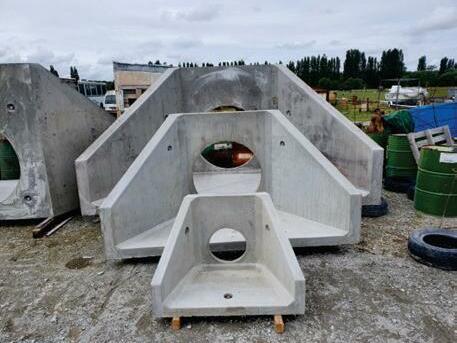


gives optimal tyre pressure for best fuel con sumption, ground pressure and longevity,” Congdon said.
TRS National Sales Manager Mark Pren tice said Trelleborg are extremely excited to join the Dairy Industry Awards and are proud to be able to recognise and support those in the dairy industry.
“Trelleborg is the market leader in agri cultural tyres and, through technology and innovative products, we are able to support farmers by increasing their productivity and reducing operating costs.”
The New Zealand Dairy Industry Awards are supported by national sponsors DeLaval, Ecolab, Federated Farmers, Fonterra, Honda,
Boost: The New Zealand Dairy Industry Awards have been boosted by the signing of new sponsor agricultural and industrial tyre and wheel manufacturer Trelleborg/TrS.
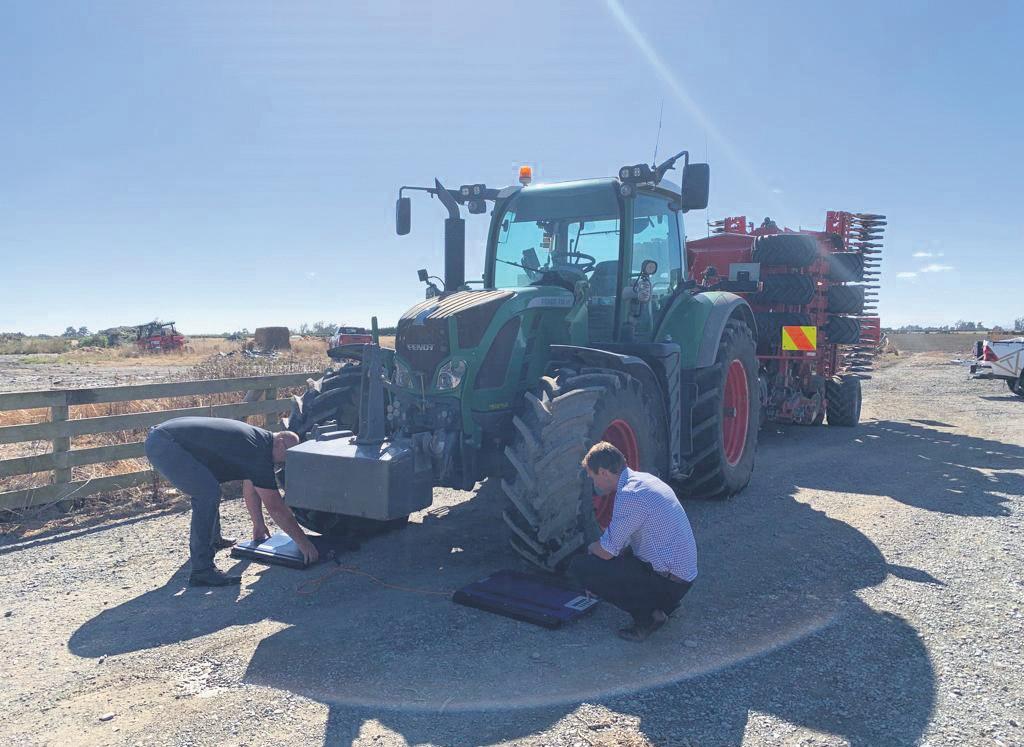
LIC, MediaWorks, Meridian Energy, and Ra vensdown, along with industry partners Dair yNZ and MediaWorks.
entries can be made online at dairyindustryawards. co.nz and are open until December 5, 2022. The 2023 National Awards Dinner will be held at the cordis in Auckland on Saturday may 13, 2023.
Four Peaks Hoof Trimming
40 December 2022 CANTERBURY FARMING DAIRY
Their hooves carry your milk. Problem with lameness? Give us a call today! 021 0343091
hooftrimming.co.nz︱info@hooftrimming.co.nz
]
No miracles in the pipeline
] with Peter burton




The future as always lies somewhere between those two worlds and changes to both the models used to calculate emissions and farming practises must be made for progress to take place.
The government’s models are essentially flawed by the assumption that pastoral farming results in a loss of soil carbon with resultant environmental degradation.



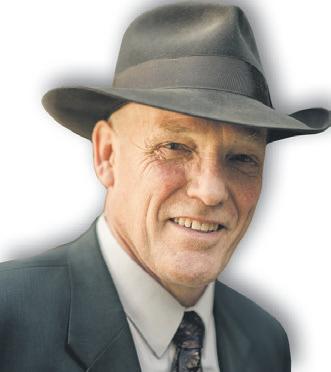
No matter how logical they may seem, following the models will lead to a scarcity of food and even greater environmental damage.

The quickest way to remove carbon dioxide from the atmosphere is under intensive pastoral farming where carbon dioxide, a plant food, is converted to usable energy via photosynthesis with most of the carbon fraction held in the soil as humus.
That’s not to say that all current farming practises are those best suited to the sustainable provision of food.
Currently in some regions there is a mismatch between the number of heavy animals
and the land suitable for wintering them on.
Heavy soils prone to pugging are not suited to the wintering of large numbers of heavy cattle, whether dairy or beef. That land is primarily sheep country.
During winter there will always be some soil damage, more so in wet winters and is best confined to relatively small areas that can be recovered by cultivation and crop establishment.




The real issue with current practise as we see it is the reliance on synthetic nitrogen for annual pasture growth. Regular applications at any time are environmentally harmful, wasteful, and expensive.
Harmful because at best only 50% of applied nitrogen is taken up by plants, with the remainder entering groundwater as nitrate nitrogen.



As it travels down through the soil profile it takes with it the most available cation, primarily calcium, which must be replenished with lime applications.



There’s no such problem with nitrogen fixed by clover. There’s a natural balance between supply and demand with excess held




by the continuously sequestered carbon from dung, decaying root mater and litter form the soil surface.
Synthetic nitrogen can be beneficially used for crop establishment, and applied six weeks prior to a budgeted feed deficit. With the recent hike in urea prices there are now more financially viable ways of filling feed deficits.



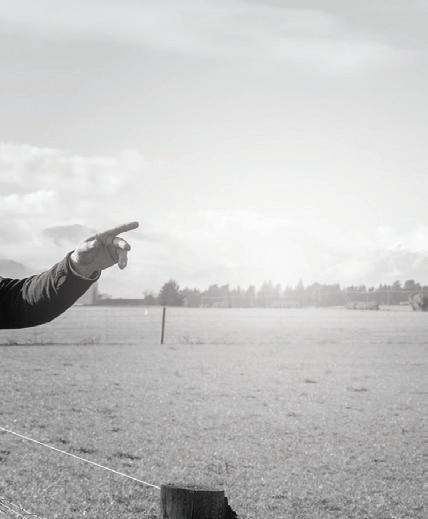
Growing clover dense pasture from now until the end of April provides the nitrogen necessary for maximum pasture growth. Not only fixing nitrogen free of charge clover also provides the best possibly tucker for milk production and rapid growth of animals.



The nutrient requirements for clover are different to those of grasses in that clover contains 3 to 4 times the calcium of grasses and extra rapidly cycling calcium is necessary for best results.



CalciZest, a lime based product made by Functional Fertiliser, has proven to be highly successful at stimulating vigorous strong-stemmed

clover when applied in spring.

Containing soft carbon inoculated with a wide range of soil friendly fungi and bacteria recent work has shown that it is likely to provide a worthwhile reduction in grass grub and porina numbers.

Spread by conventional groundspread at 400kg/ha it is a cost-effective way of increasing total pasture production over summer and early autumn as well as increasing its digestibility.

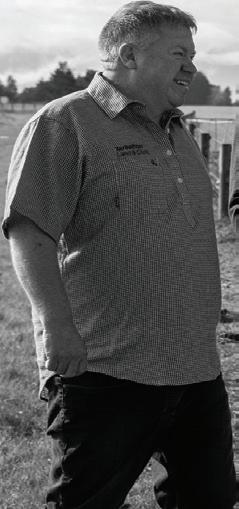
Farmers applying for the first time often report improved pasture palatability, animals spending more time ruminating and less time grazing with a resultant increase in milk solid production and the growth of young animals.
For more information call Peter 0800 843 809.
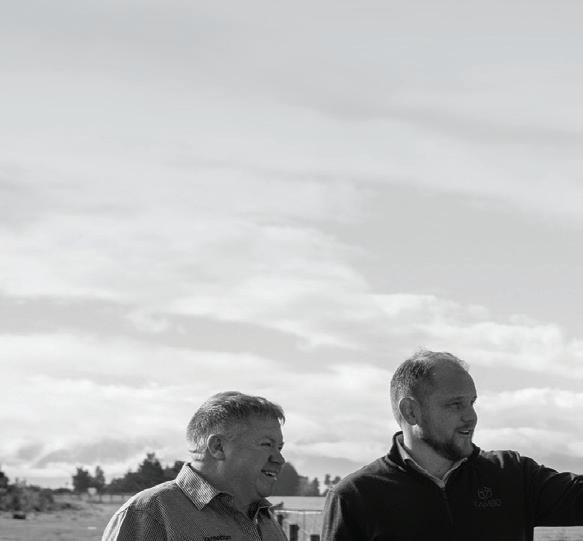
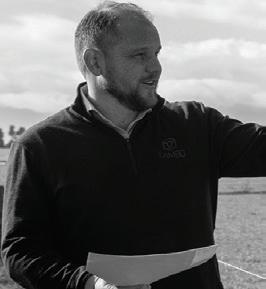

Golden Bay Dolomite NZ’s most loved magnesium. call 0800 436 566 or visit www.dolomite.co.nz
Earthmoving and Farm Maintenance Done Right
30 years of local knowledge and experience makes us the right people to talk to when it comes to earthmoving and farm maintenance. We explore every angle of a project upfront to ensure it runs smoothly and efficiently. For us, being the best isn’t about getting a job done fastest, or cheapest, it’s about getting it Done Right.
Find out how we will get your project Done Right at tarbotton.co.nz

CANTERBURY FARMING December 2022 41 DAIRY
nairn Electrical Electrical Problems or Maintenance? Electrical installation, maintenance and a breakdown service second to none Irrigation Farm Industrial Municipal MASTER ELECTRICIANS Member Electrical Contractors Association of NZ LEESTON Ph (03) 324 3752 RANGIORA Ph (03) 313 6104
waiting for a revolutionary breakthrough that will take farming from the emission belching monster the
bent on believing it is, to a utopian activity free of mud and dead animals will be
Those
government seems hell
forever disappointed.
Controlling the controllable

in play and being enforced such as the Intensive Winter Grazing are still yet to be confirmed in terms of reporting and compliance.
 by Vanessa Winning
by Vanessa Winning















 ] IrrigationNZ CEO
] IrrigationNZ CEO



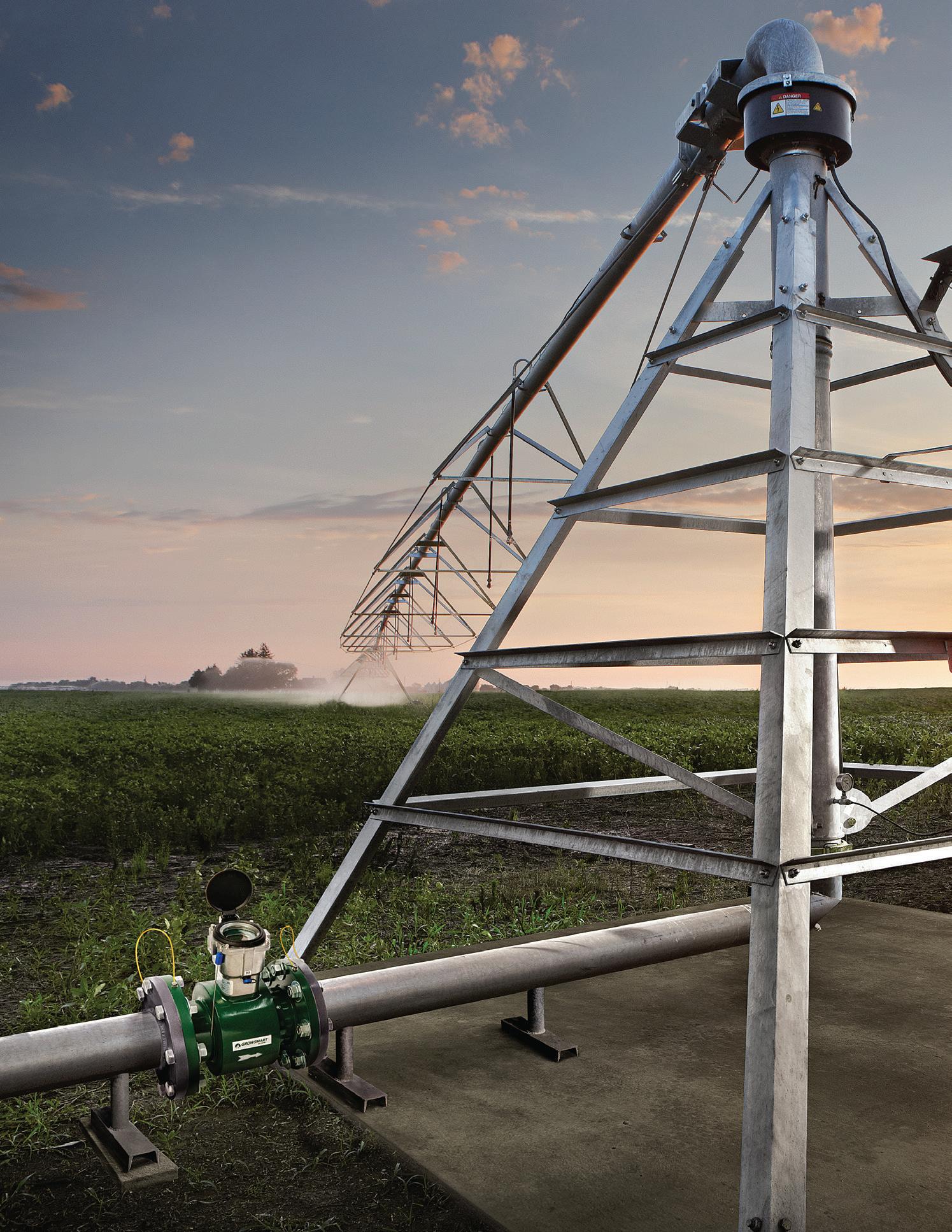

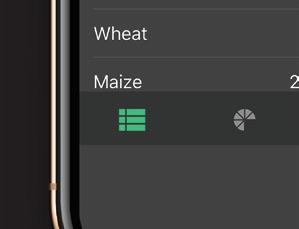
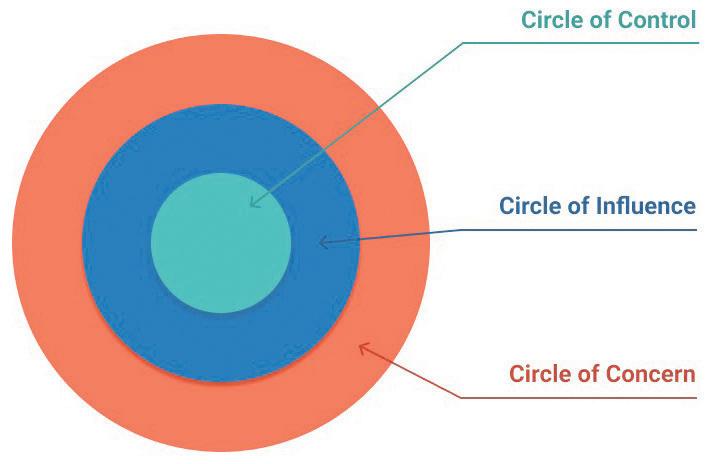
At IrrigationNZ we influence where we can and have had some good wins in areas where we have collaborated and provided practical solutions that meet the outcomes desired, and most of the time those outcomes are desired by us all.
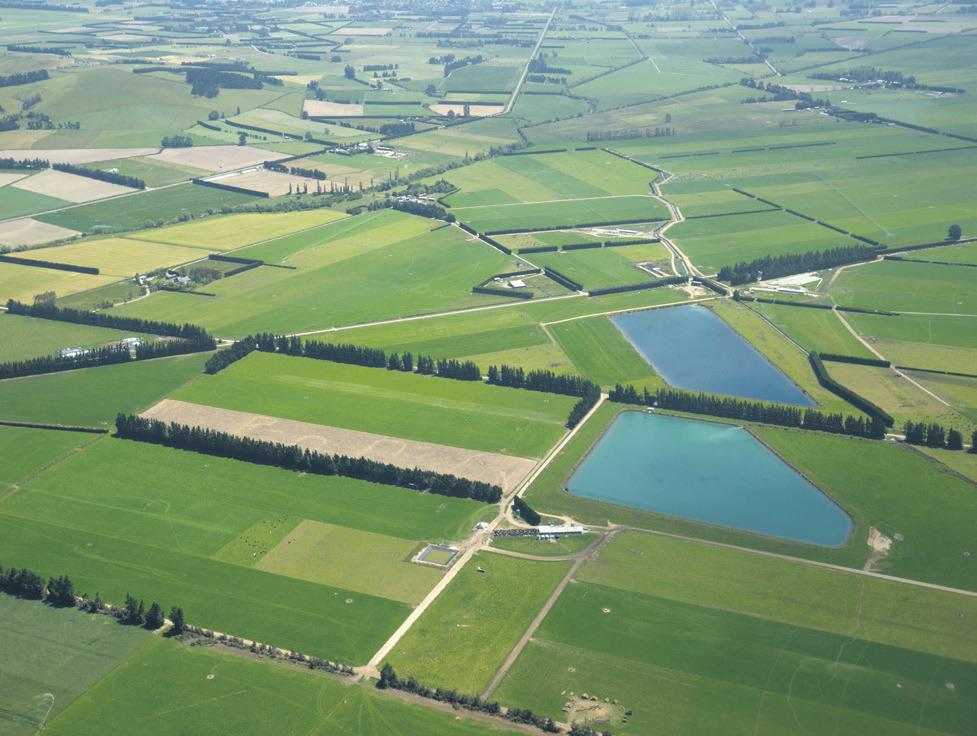
We also try to control the things we can, such as our massive increase in training over the last year to get us ready for an increase in new design techniques and improved water efficiency requirements, as well as expected land use change. But we need to do more. We all have a role to play in influencing and controlling.
With the irrigation season underway in Canterbury the weather patterns seem as unpredictable as the last two seasons. We have seen a change in these patterns over the past decade as extremes become more common. We need to build resilience, but it is sometimes hard to know what for.
This also seems the way with the current policy focus we are contending with in Wellington. With the Government reneging on He Waka Eke Noa as partners, certainty around what the process and rules will be is deficient.
The RMA reform is underway and the current legislation is now being divided into four parts, with overlap and a lack of clear hierarchy it is hard to know where we will land and how long it will take. Even settings already
Over the next few months, and while you may get time with family and friends over the holiday season, increase your influencing skills. Have key messages about your system, your impact, and what irrigation provides.
A couple I note regularly: precision irrigation leads to better outcomes for the environment as it means the plants get the right amount of water to absorb the nutrients with less surplus; less than 20 percent of animal agriculture is under irrigation, and more than 90 percent of our fruit and vegetables need it; all beer and wine production uses irrigation; our parks, stadiums, golf course, retirement homes use irrigation and can improve in efficiency by improving design; capturing and storing water will lead to better resilience to weather extremes for the whole community; to enable land use change, decarbonise our production and improve our communities we need more productive water not less.
Be open-minded to hear what the various political parties are promising and have a view. We will be preparing our election manifesto in the New Year which we will share, and we will feature all the parties in this magazine, starting with Shane Jones and NZ First this season.
At the same time, control what you can control: manage that precious water as best you can; increase your information gathering to make more informed decisions, know your numbers; work with your neighbours on a catchment impact plan, reach out and learn from each other; look for opportunities to build resilience on your farms and orchards; test your systems and make improvements where needed; talk to your accredited design-
ers and see if there are improvements you can make; work on your business and make plans for the future.
Take control back and focus on what you can do and make a plan on how you are going to get there.
While there is a lot up in the air, there is still a lot you can control and influence. There
are some amazing support networks and we are happy to support you with messages, ideas, contacts, and opportunities.
We all have a role to ensure our urban friends know what good is, and how good New Zealand is at producing food and improving environmental outcomes. Let’s start with one conversation at a time.
42 December 2022 CANTERBURY FARMING WATER & IRRIGATION IRRIGATE WITH CONFIDENCE. IRRIGATION SYSTEMS REMOTE MANAGEMENT PRECISION VRI BY
16HMDG1610047-OPTION3 Canterbury Farming Option3 128mm x 100mm irrigation wells potable water supplies ground source heating geotechnical assessment www.drilling.co.nz MC Drilling Ph 03 324 2571, 120 High St, Southbridge, Canterbury
LINDSAY
]
I often talk about controlling those things we can control and influencing those you can influence.
‘Take control back and focus on what you can do and make a plan on how you are going to get there.
Are you a small water supplier?

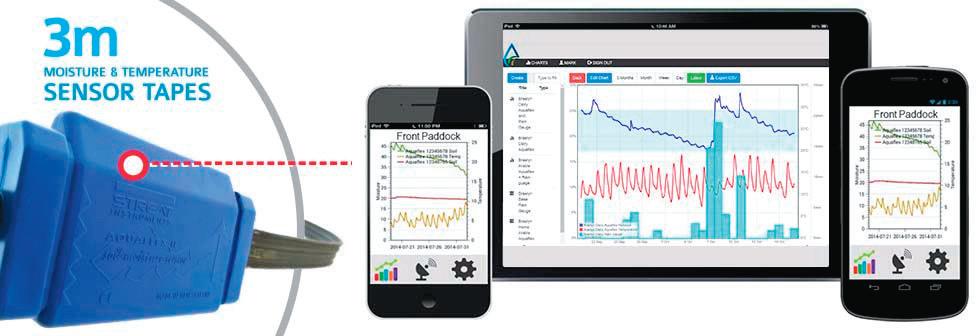







aware, if you own or operate a water supply that is being used as drinking water by people outside your home (e.g. a farm property with multiple dwellings supplied by a single source), you are a drinking water supplier and will have responsibilities to meet the new rules under the Water Services Act 2021.
As many people are increasingly
You must also comply with any directions or compliance orders issued in relation to their drinking water. If you fail to comply, you will be liable for an offence under the Act.
This can all sound a bit daunting, but what does it actually mean for small suppliers?
Previously you wouldn’t have been concerned about being a small supplier, but now there are some rules you need to follow. The most important point is that all people who supply water to others have a duty of care to supply safe drinking water, whether or not they are registered.

The first step in the process is to register as a small supplier through the new drinking water regulator, Taumata Arowai. However, wait, there is no rush, and in fact, Taumata Arowai are so busy that they are asking new suppliers to hold off and not register right now. You have plenty of time, unregistered supplies have up to November 2025 to register, and then up to November 2028 to fully comply with the Water Services Act.
So, what do the changing rules mean? That depends on whether you can fit into one of the three ‘Acceptable Solutions’. These are ready made options designed to provide straightforward solutions for small water suppliers to meet compliance obligations. Provided the identified criteria can be met,
suppliers can opt to follow these simplified pathways.
The current acceptable solutions include solutions for suppliers who supply roof water, supply bore/spring water, or are a small rural supplier (supplying 50% or more of the water for agricultural needs, and the rest for domestic supply).
If you can’t fit into one of these solutions, you need to follow the Drinking Water Assurance Rules. These rules are set out in relation to the number of people that will use the water supply, with complexity levels increasing as the supply size increases. For example, monitoring frequency and treatment levels (such as the inclusion of chlorination) increases with supply size.
The main things to consider for small suppliers is protection of the source itself, ensuring a reliable distribution system with backflow prevention, end point treatment (UV systems, each disinfecting water going into three buildings), taking initial samples, and then ongoing sampling. The sampling is important! It will be both before and after treatment, with three-monthly sampling for some parameters and yearly or three yearly for others. However, if measured quality is poor, you may need to sample more frequently.
It can feel a bit overwhelming, but there are some relatively simple solutions. Ask if you need help working out what to do and how to do it.
Rules and responsibilities: If you own or operate a water supply that is being used as drinking water by people outside your home, such as a farm property with multiple dwellings supplied by a single source, you are a drinking water supplier and will have responsibilities to meet the new rules under the Water Services Act 2021.
CANTERBURY FARMING December 2022 43 WATER & IRRIGATION T H E S Y S T E M I N C L U D E S : T h e l a r g e s t s o i l s a m p l e r e f e r e n c e a r e a o n t h e m a r k e t t o d a y ( 6 l t r s o r 3 7 0 c u b i c i n c h e s ) . H i g h l y s e n s i t i v e T D T t e c h n o l o g y t h a t i s h i g h l y a c c u r a t e i n a l l s o i l c o n d i t i o n s M u l t i p l e i n s t a l l a t i o n m e t h o d s t o c a p t u r e t h e r i g h t d a t a U n i q u e l y a d a p t a b l e t o d i f f e r e n t c r o p p i n g , o r c h a r d , v i n e , a n d i r r i g a t i o n s y s t e m s t y p e s T h e l o n g e s t s e r v i n g i n s i
O u r
d e s t A q u a f l e x
s
y r s o l d a n d g o
n g s t r
n
www.onfarmdata.com Andrew: 022 183 2018 Lyall: 021 223 8666 andrew@onfarmdata com lyall@onfarmdata com FOR ALL YOUR WATER WELL DRILLING & WELL SERVICING REQUIREMENTS Submersible Pump Installation & Removal Potable Water Testing Pump Testing FOR PROFESSIONAL SERVICE FROM AN EXPERIENCED TEAM Rural Water Supply Lifestyle Block Supply Ph - 027 222 1587 / Email - Malcolm@hydrill.co.nz ] with
t u s e n s o r i n N e w Z e a l a n d (
o l
i
2 0
i
o
g )
Dr Helen rutter ] Aqualinc
Confusion over emissions pricing system







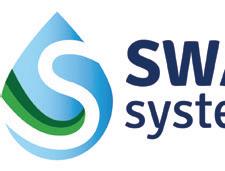


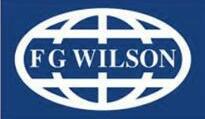



 ] by Andrew curtis ] Primary Insight
] by Andrew curtis ] Primary Insight
We’ve now had three La Niña events in a row which is the first time this has happened since 1998-2000.



Climate change is currently at the forefront of most farmers minds. Unfortunately, the passion that has been evoked through the governments proposed emissions pricing system is detracting from the real challenge at hand, minimising our impacts on climate change and what can I do on my farm to do my bit towards reducing overall emissions? The future is about agriculture mucking-in rather than playing the blame game, and we need to keep this front and centre.
There’s no doubt the Governments response to the He Waka Eke Noa recommendations has fallen short of the mark, but it also re-affirmed what we all knew already, there are significant viability concerns for some sectors if the methane price is set too high.



However, I have much faith that the He Waka Eke Noa sector partners submission will help address this. I’ve been really impressed by how the partners have pulled together and developed a pragmatic response, and I encourage every farmer to read and understand the submission (alongside the original recommendations) rather than relying on second-hand information.


Personally, I think there is much confusion within the farming community around the na-
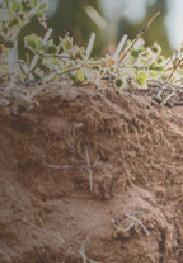



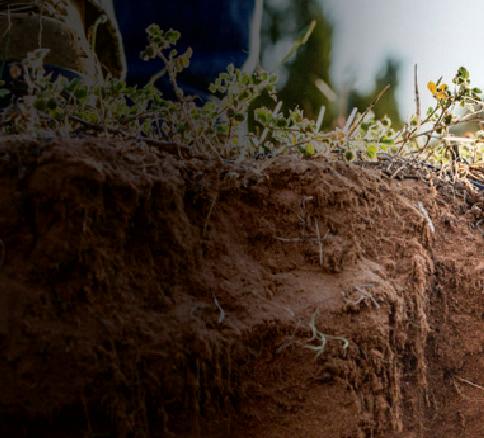

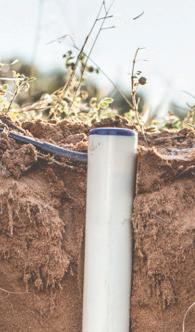
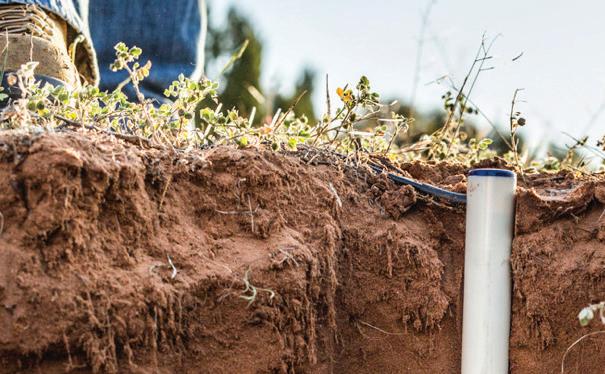
ture and purpose of the pricing system that was designed by the He Waka partners. So, I thought it would be useful to provide an overview:


The farm-level pricing system is a mechanism to collect (and ring-fence) revenue in a fair and equitable way for two specific purposes:

1. Fast-tracking investment into mitigations for emissions reductions; the goal being to provide farmers with a greater range of options and potentially a future competitive advantage.

2. Providing incentives for the increased uptake of current and future mitigations; while the 2050 methane reduction target has ‘more holes in it than a tea bag’ it’s hard to disagree with the initial 2030 10% reduction target.
The farm-level approach ensures each farms payment better reflects their actual impact, as opposed to the processor-level approach where everyone is average. Farmer feedback strongly supported this.
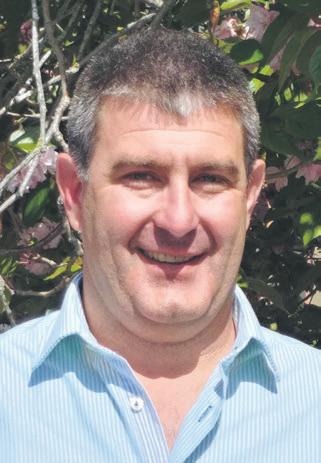
In addition, sequestration that is not eligible for the NZ ETS, or in the case of post-89 indigenous vegetation, that has been extremely difficult to register in the NZ ETS, was also to be funded by the levy. This was to acknowledge that many farmers have been sequestering carbon on their farms for years, and that if they are to face a price for their
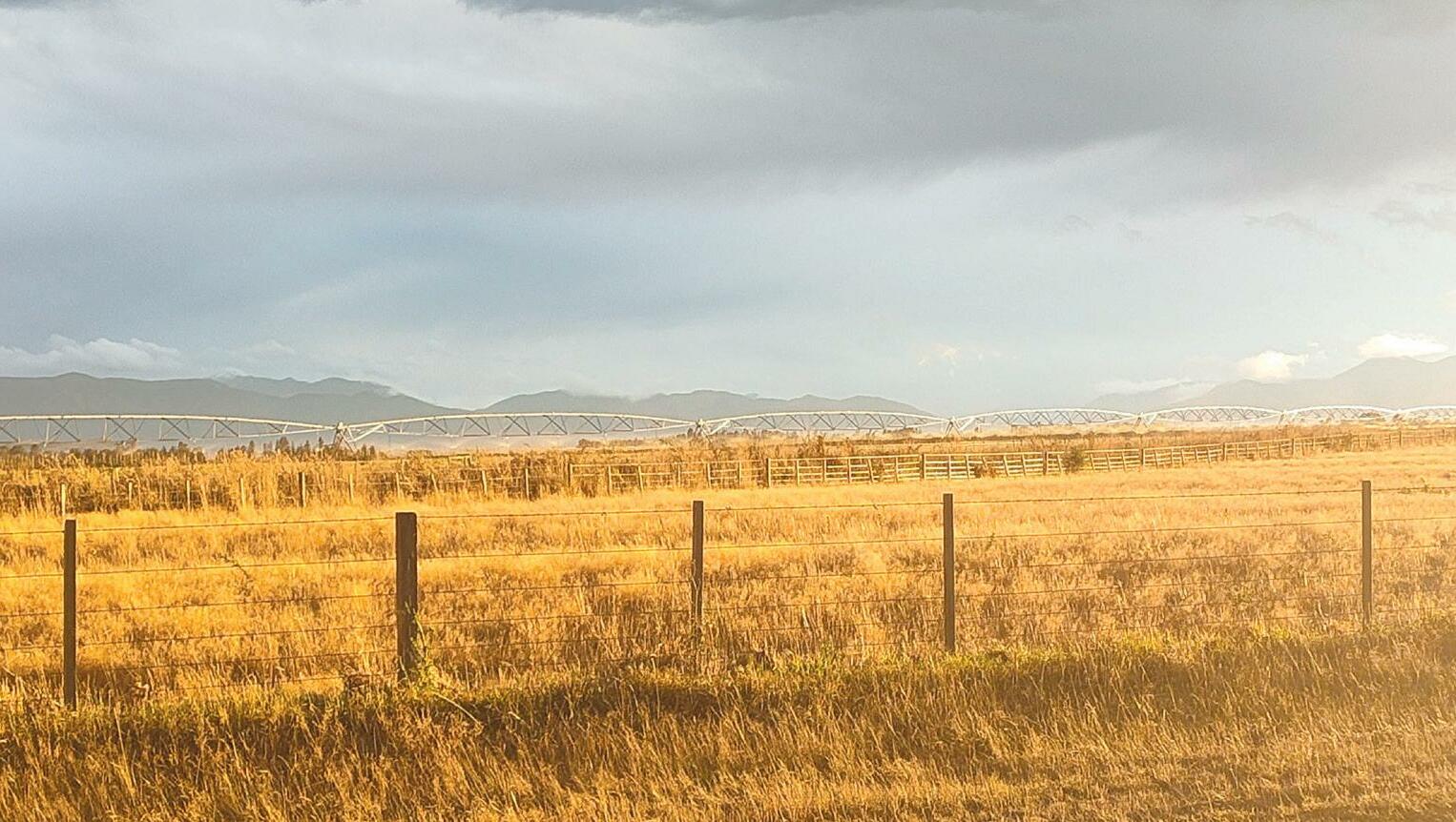

emissions this should be accounted for. Recognition of this sequestration also supported the affordability of pricing emissions, particularly for extensive farms systems that are typically impacted to a much greater extent by the emissions cost.
The Governments response to sequestration was a mixed bag, while they missed the point around why the range of categories was put forward, they did come up with a better solution as to how it could be provided for. Taking sequestration out of the legislative framework and using a separate contractual system effectively creates a closed volun-
tary market negating the concerns around inconsistencies with the NZ ETS and equity with other stakeholders. It also legitimises scheme specific rules, noting these still need to be credible.
44 December 2022 CANTERBURY FARMING WATER & IRRIGATION
La Niña weather patterns are with us once again resulting in near normal rainfall, slightly above average temperatures but fewer ‘hot’ days due to the predominant nor-east weather patterns.
“
The future is about agriculture mucking-in rather than playing the blame game, and we need to keep this front and centre.”
Market head winds predicted

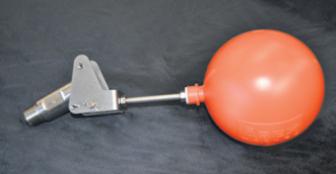





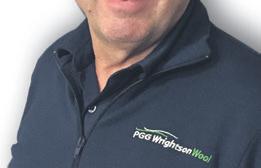
December already and I’m sure many of us are wondering how 2022 has “come and gone” at such a pace.



While time has flown by, most observers of the wool industry are more likely wondering why the wool market has continued to meander along at a snail’s pace despite much positive noise about the benefits and new use opportunities particularly for coarse wool.
In speaking to a few wool exporters during the past month or so, most have signalled that we could expect some head winds for the wool market into 2023 which, I guess, is understandable to a degree given global shipping issues, financial difficulties, and rampant inflation, but what “head winds” should a snail expect?
At wool auctions held during November, the price graph for most wool types showed either a flat or softening market. Whilst some (certainly not wool growers) may argue that the fine wool price graph (merino types in particular) could handle a slight easing in prices, all would agree that the mid-micron and coarse wool graphs certainly cannot support any further decrease in prices.

In my view there are no sheep farmers who can afford to produce wool, regardless of type or breed, and receive anything less than the current market price.
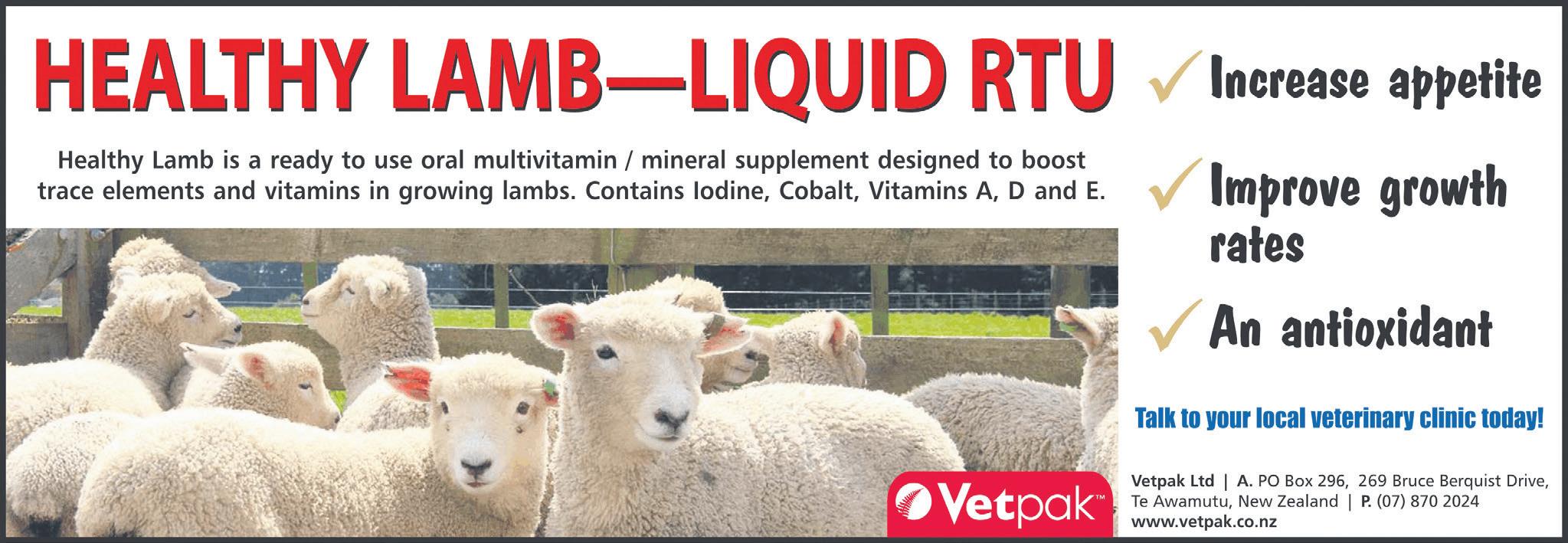
While coarse wool types have been in the doldrums for several seasons, and seem destined to remain so for a while yet, mid-micron wool prices during similar periods have been almost impossible to predict from one month to the next, apart from perhaps the odd finer than 25 micron type or those which have been locked into a direct-to-market forward priced contract, therefore in general terms growers of wool measuring coarser than around 25 microns have all been producing wool at either a significant loss or, at best, a break-even basis for several years.


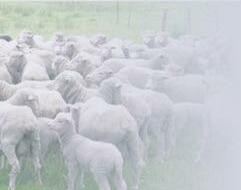
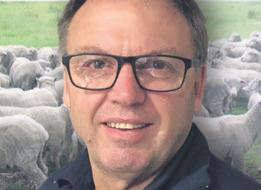
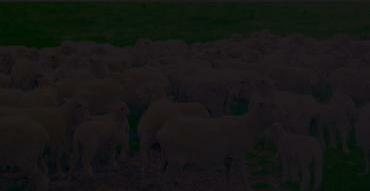


Merino wool growers have been better rewarded for their product during the same time frames. However, when considering the physical and geographic farming situation of many merino farmers who rely almost solely on wool returns to finance their operations, still none can afford any downside to the market.

All costs associated with wool production have skyrocketed and because a vast majority of wool produced in New Zealand is exported to various destinations around the world, transport and energy costs alone continue to bite.

During the past few seasons, and as China has imported lesser quantities of New Zealand wool than previously, it has become apparent that the reliance on that country
over many decades was huge and, although many other nations continue to import New Zealand wool as a preference over wool from other origins, the significance of Chinese wool processors and manufacturers remains extremely important now and into the foreseeable future.
With many sheep and beef properties across the country moving away from livestock to forestry opportunities, plus horticulture and viticulture developments, along with continual subdivision, wool production in general could be expected to reduce during the next few years and, with most of the aforementioned land use changes currently affecting coarse woolled sheep numbers, a volume reduction may in fact be welcome? Time will tell!
The festive season is upon us and whilst there is still plenty to do on the farm, here’s hoping everyone finds time to spend with family and friends to enjoy the moment. Have a Very Happy Christmas and a Bright and Prosperous New Year.
CANTERBURY FARMING December 2022 45 LIVESTOCK www.sisballcock.co.nz | 0800 175 720 Only available direct from manufacturer Freight free anywhere in NZ •3 models available – all the one price • Nearly indestructible •Only NZ Manufacturer providing lifetime guarantee on the body of the ballcock SIS BALL COCK VALVE •Buy 10 receive 12 and a service kit Price $99.50+GST Each ] with rob cochrane ] Wool Procurement Manager, ] PGG
Wrightson Wool
‘
The significance of Chinese wool processors remains extremely important.
Prices heading back where they belong
with Trevor Walton
Venison has emerged from the Covid pan demic with three major markets, the United States, Europe and China, and a big increase in sales to supermarkets.
This complements the deer industry’s tra ditionally strong position in foodservice, par ticularly in Europe and the United States.
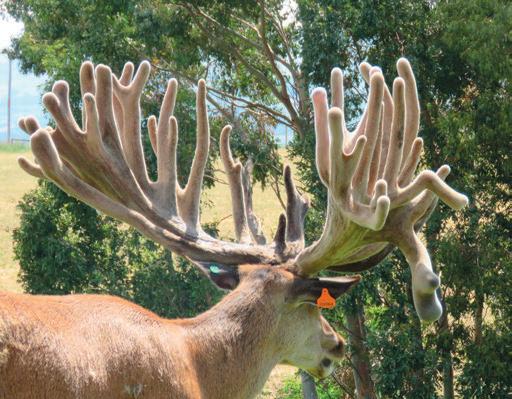
This balance of markets and channels is important. Retail sales rescued venison dur ing the depths of the pandemic when restau rants were shuttered, but now, with rising energy costs and interest rates impacting on retail demand worldwide, European foodser vice is of renewed importance.
Increased demand from foodservice has somewhat insulated venison sales from retail belt tightening, says venison marketer, Andy Duncan, executive chairman of Duncan NZ. This is the reverse of the situation two sea sons ago when venison marketers were forced to develop retail demand at short notice.
Duncan, who has just returned from his first European market visit for a couple of years, says he found Europe open, with folk getting on with business, despite staffing and logistics challenges.
“With Covid lock-downs now no more than an unpleasant memory, restaurants are open again and those who can dine out are dining out, and are less inclined to ‘bargain hunt’ on a menu,” he says.
He reports the overall outlook for NZ ven ison in the region is optimistic, with compet ing game items in shorter supply. African swine fever is continuing to hamper the re covery in the supply of wild boar, the main competitor with venison for sales during the northern hemisphere game meat season in autumn each year.
Meanwhile, Deer Industry NZ and venison companies are busy with marketing activities in Europe, with DINZ’s Germany-based chef Shannon Campbell extolling the virtues of NZ venison to consumers and customers.

Exporters report that sales volumes and prices during the 2022 game venison have been up on last year, with demand holding well through to the end of the export selling period. This was reflected in published farmgate prices for AP stags, of $8.85-$8.95/kg on 20 November, around a third higher than the average for 2021, and three to five per cent above the five-year average.
In contrast, lamb prices have eased, with some meat marketers predicting that farm gate prices for lamb will settle in the $6.80 to $7.20 a kg range during the next six months, about $2 a kg less than veni son. This reaffirms the wisdom of those farm ers who spread their market risks, by running more than one livestock species.
Reduced lamb demand from China is being driven by a downturn in the Chinese economy, which is still burdened by Covid re
strictions and a weakening currency. There has also been a marked recovery in pork pro duction – – the most popular meat in China – in the aftermath of the mass slaughter of pigs following the outbreak of African swine fever in late 2018.

DINZ deputy chair Gerard Hickey is quoted in the latest issue of Deer Industry News as saying that when Covid struck venison was over-exposed to restaurants, but there has been a successful pivot to retail and new, more stable, markets.
“This will help get venison to the $10-12 a kg range, where it needs to be.”
He predicts that prices to farmers in the
Xmas time: With venison prices climbing, 2022 might be a good year to have roast venison for christmas dinner, before prices climb even higher.
2023 chilled season will hit $12 a kg, up from the $10 that most deer farmers enjoyed this spring.

With a better spread of markets and bet ter prices, insufficient supply of venison is likely to become an issue for marketers in the near future. For farmers who have stuck with venison during the bad Covid years, it will be a good problem to have.

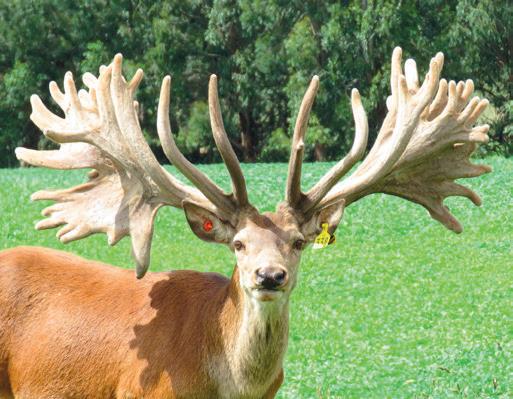
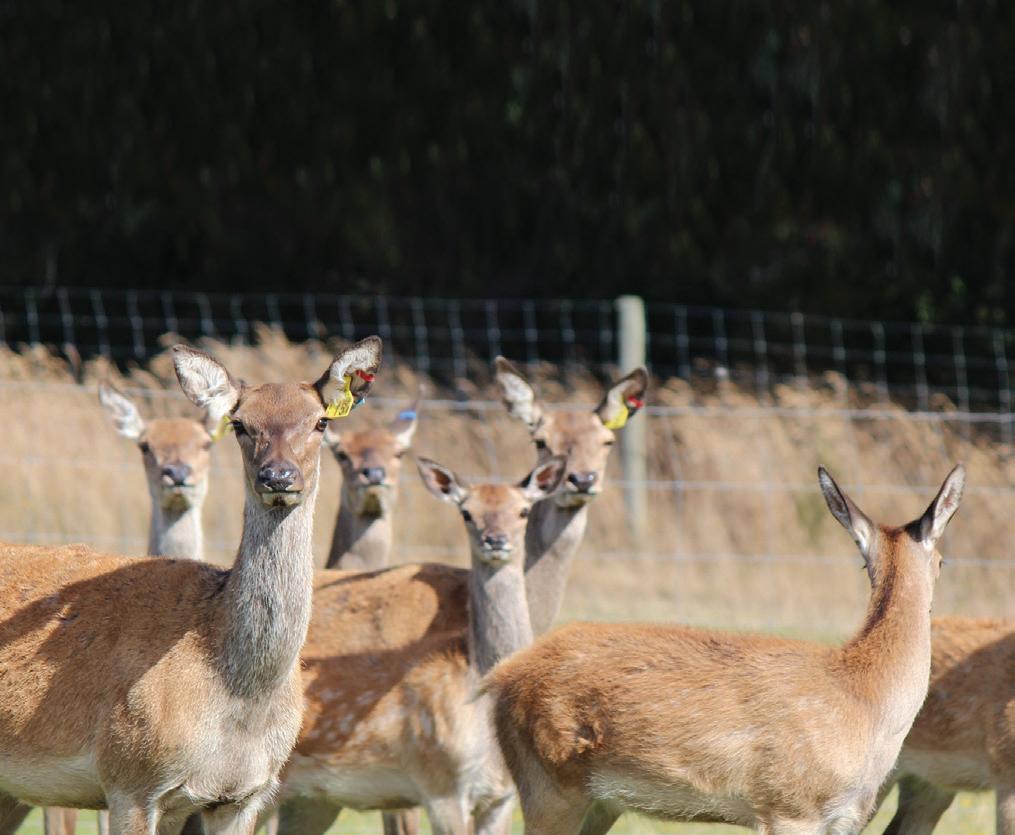
For those of us who aren’t venison produc ers it might be a good time to buy a venison roast for Christmas, before prices increase further.
Have a very merry venison Christmas and a happy New Year.
46 December 2022 CANTERBURY FARMING LIVESTOCK t ALSO AMADEUS, APEX, BRUSNIS, COGNAC, HUDROCK, HUNTER, MORDECAI, ORLANDO & RIGBY. Catalogues will be posted out in December Breeding the difference ALL ENQUIRIES: Barry Gard 021 222 8964 bgard@foverandeerpark.co.nz www.foverandeerpark.co.nz OFFERING TO INCLUDE SONS OF: SCAN FOR CATALOGUE MUNRO 705 IOA @ 6yrs CANE 841 IOA 22.14kg HA @ 5yrs FITZROY 700+ IOA 23.28kg HA 44 pts @ 6yrs 40TH ANNUAL ELITE SIRE STAG SALE Saturday 7th January 2023 @ 1pm DP0122 Benchmarked production and Johne’s disease info on your deer Base your deer management decisions on the numbers. Contact DeerPRO for your report. 0800 456 453 or info@deerpro.org.nz 2018 70 65 60 55 50 45 Season Carcass weight 2019 2020 2021 2023 2022
]
venison prices and
of
Steadily increasing
promises
better
times ahead will be Christmas treats for farmers
who stuck with
deer during the Covid market meltdown.
Ranger making better use of space
NZ



Whether next-generation Ranger is being used for work, family or play, Ford knows its customers rely on a pickup that is functional, convenient and durable.
Hence the Next-Gen Ranger goes all-out with a wider cargo box packed with features and opportunities to transform the area into a total cargo management makerspace.
The Next-Gen Ranger offers an array of or ganisation and storage solutions to secure cargo, make fitting accessories a cinch and even DIY customisation. For instance, own ers can create segmented DIY storage spac es, both big and small, by sliding pieces of wood into slots moulded into the bed-liner, or even get creative and build things like a bike rack.
There are tie-downs mounted in the bed, and on the Wildtrak variant there are external tie-down rails and sliding cleats that can be adjusted into nine positions to help secure odd-shaped cargo.
The new rear load box access step is the result of more than 5000 interviews with pickup owners, learning how they used their trucks and what they wanted from their next one.
For those who use their vehicle for adven ture, the addition of six structural attachment points in the protective load box capping, make it easy to fit accessories like a canopy, cross bars or a tent.
The new drop-in bedliner incorporates functional divider locators so that owners can create their own compartments to store gear that they might otherwise have to carry in the cabin.


Dividers can be custom-made from timber at home and then installed and removed as required. As a bonus, the improved and wider moulded profile on the bedliner is more com fortable on knees, is much easier to clean and also means items are less likely to slip around.
New roof top platform mounts will allow for the easy fitment of roof accessories, like racks or a platform. Next-gen Ranger’s roof load limits are up to 350kg (static) and 85kg

(dynamic).

Ranger exterior design manager Leigh Consentino said before they started the de sign process, they took all of the research and boiled that down into some key phrases or themes to begin their work. “One of those themes was ‘empowering mastery’. This, to us, simply meant that we needed to deliver a product that would enable customers to be the best they could be – whether at work or play, or with their families.
“We were focused on authenticity and delivering a truck that wasn’t superfluous, meaning everything in it had a purpose and meaning,” Consentino said.
Ford designers have also redesigned the
Storage: There’s now more storage space on the inside of Next-Gen ranger too, from under-seat storage to retractable cup holders and a raft of cubby holes stashed around the cabin.
interior of the next-gen Ranger to help cus tomers keep their vehicle organised.
There’s now more storage space on the inside, from under-seat storage to retract able cup holders and a raft of cubby holes stashed around the cabin.
Also in the double-cab models the rear seat now folds flat, allowing owners to carry more gear on the inside.
Note: Not all vehicle features will be avail able in all markets or on all series. Precise specifications for each market will be con firmed prior to launch.
CANTERBURY FARMING December 2022 47
] Article supplied by Ford
As we head into the new year we look back on this year’s motoring releases which should appeal to famers. First up we look at the Next-Gen Ranger released earlier this year.
Organised: ranger owners can now create segmented DIY storage spaces, both big and small, by sliding pieces of wood into slots moulded into the bedliner.















48 December 2022 CANTERBURY FARMING www.yamaha-motor.co.nz FIND YOUR LOCAL DEALER AT: *Disclaimer: Finance offer provided to approved personal applicants only. 6 months interest free offer for a credit limit up to $7500 on Yamaha Blue Card line of credit account to purchase any eligible Yamaha fun bikes. Applicable models: PW50, TTR50, TTR110, TTR125LW, YFZ50R, YFM90R, YFM90RYX. The 6 month interest free period will commence on the date the eligible transaction is debited from the account between the offer period commencing 21 June 2022 to 31 December 2022. After the 6 month interest free period, a variable interest rate of 19% p.a. will apply to the outstanding balance. Minimum monthly repayments of the higher of $60 or 4% of the outstanding balance is required. A $0 establishment fee, $0 monthly account fee and $55 annual fee applies. Other fees and charges may apply such as dishonour fee or late pay ment fee. Offer is available from 21 June 2022 to 31 December 2022 at participating Yamaha dealers while stocks last and subject to the finance application being approved and settled on or before 31 December 2022. Credit criteria, fees, charges, terms and conditions apply. Finance is provided by Yamaha Motor Finance New Zealand Ltd. NZBN 9429036270798 FSP 9622. $55 Annual Fee Applies 6 MONTHS INTEREST FREE* O N SELECTED YAMAHA FUN BIKES
Three variants for new Ford Everest





] Article supplied by Ford New Zealand




The modern interior design and inclusion of the SYNC 4A enabled 12-inch centre screens along with the fully digital instrument cluster will stand Everest apart from the competition. The addition of helpful features like a reach and height adjustable steering wheel and improvements to SYNC will make living with the 2022 Everest a more enjoyable and stress-free experience.
Powertrains
Next-Generation Everest will feature two different engines, depending on the model purchased.


In a first for the series, the Next-Gen Everest will now feature a 3.0L V6 Turbo Diesel engine, pumping out an impressive 184kW of power and 600Nm of torque, perfect for towing. Producing 154kW & 500Nm the tried and trusted 2.0L Bi-Turbo Diesel will provide an excellent balance of pulling power and fuel economy.
As per the current model, to meet EU Stage 5 emissions regulations, all Next Generation Everest models will continue to require AdBlue.

Drive Modes
Everest’s e-Shifter will bring a new level of high-tech control to your fingertips with optimised performance for different surfaces, road conditions and vehicle usage.

On-road



• Normal – designed for comfort, fuel efficiency and drivability

• Eco – maximises Fuel Economy by delivering progressive power and early gear shifts, together more economical cruise control tuning and tailored climate control strategies
• Tow / Haul – for use whilst towing or carrying heavy loads. Optimises gear shift timing to maintain best power delivery and engine braking and reduce shift busyness
• Slippery – for more confident driving on slippery or uneven surfaces
Off-road
• Sand – for use in soft sand and deep
snow conditions, optimising power delivery and transmission shifts.
• Mud/Ruts – for max grip off-road during launch and maintaining momentum.
CANTERBURY FARMING December 2022 49
The Ford everest Sport, left, along with the two other variants, will offer a 3500kg towing capacity. The Platinum version, below, will head the new variants of the 2022 Ford everest.
Three variants of the 2022 Ford Everest were made available to New Zealand customers this year: Trend, Sport and the new range-topping Platinum.
Luxurious travel for any situation
There is little doubt the new Lexus LX 500d is built for all terrain, whether you are inspecting the outer paddocks, taking the family skiing or driving through the inner city.





] Article supplied by LexusNZ
The new 500d features a twin-turbo V6 diesel engine, a 10-speed automatic transmission and a wide range of improvements, including the first F Sport version of an LX.
As the final retail price for the Limited and the F Sport grade is the same, the question of which model to purchase comes down to the customer’s needs. The seven seat Limited model offers ultimate luxury, while the five seat F Sport places more emphasis on performance and maintains a luxury cabin experience.
Lexus New Zealand General Manager Andrew Davis said the LX is about being able to move around comfortably, in any situation, in luxury.

“Being able to go anywhere is a key feature of the LX 500d. But this is far more than a typical four-wheel drive SUV. It has a level of refinement that is unsurpassed – it is the ultimate luxury vehicle for more extreme kiwi lifestyles and even through rocky and rough terrain the landings are soft,” Davis said.
The 2022 LX 500d has been given a new powerplant – a 3.3 V6 diesel twin-turbo replaces the former model’s V8 diesel engine or 5.7L petrol engine. However, torque has not been sacrificed in the search for greater fuel efficiency and lower carbon emissions.
The new 3.3L twin-turbo V6 diesel engine generates improved maximum outputs of
227kW (+27) and 700Nm (+50) versus the outgoing V8 diesel. Combined fuel consumption is lower at 8.9L/100km and CO2 emissions are also lower at 235g/km.
Many measures have been taken to save weight as a means of improving responsiveness and fuel consumption. Aluminium has been adopted for the bonnet, roof, and door panels. The use of new high-tensile strength steel in the frame, lighter seat construction, and revised suspension also contribute to the savings.
The LX’s interior design is based on the ‘Tazuna’ interior cockpit concept that was



first adopted for the new Lexus NX which was launched in 2021. This includes a whole new generation of connectivity, safety, and driver aids all at the drivers’ fingertips.
Powered up: The 2022 LX 500d has been given a new powerplant, with a 3.3 V6 diesel twin-turbo replacing the former model’s V8 diesel engine or 5.7L petrol engine, and a maximum braked towing capacity of 3500kg.
tention to detail across the interior of both
The level of luxury and attention to detail across the interior of both models is impressive, the seven seat Limited features a hand-crafted wooden mosaic with patterns influenced by hawk feathers. The five-seat F Sport has a more performance orientated interior with aluminium features inspired by patterns found on a tra-
ditional Japanese sword.
Running on the largest ever factoryequipped wheels at 22”, the Limited and F Sport each have a unique alloy wheel design. The F Sport exterior design is also different from the Limited with a unique front bumper, grille, and rear bumper.
50 December 2022 CANTERBURY FARMING
Family stories and history
] with rob cope-Williams



Recently a mate saw me at a service and announced he wished he could record his district history and his family involvement. He admitted he didn’t know where to start.
My comment was “at the beginning”, to which he said it was all written down month by month and year by year.
That got me thinking, and I am about to get hold of that chap and help him sort it, but how many stories and information die with those who knew the history?

“I wish I had listened and written the stories down”, is a very common comment and always said with regret.
What a lovely idea for a Christmas present, too late for this year, but perhaps a family member sitting over several meals with a pen and paper taking bullet points and then expanding them into stories.
With modern day computers and printers anyone can write the stories and memories out and then scan photos with who and where under them.
Even I have done that sort of thing so I can re-visit some of the moments in my life.
Naturally they are also there for my children and grandies.
They don’t need to be published by some book maker, several I have seen are simply a collection of pages held within two cover sheets and held together by a spiral binder.
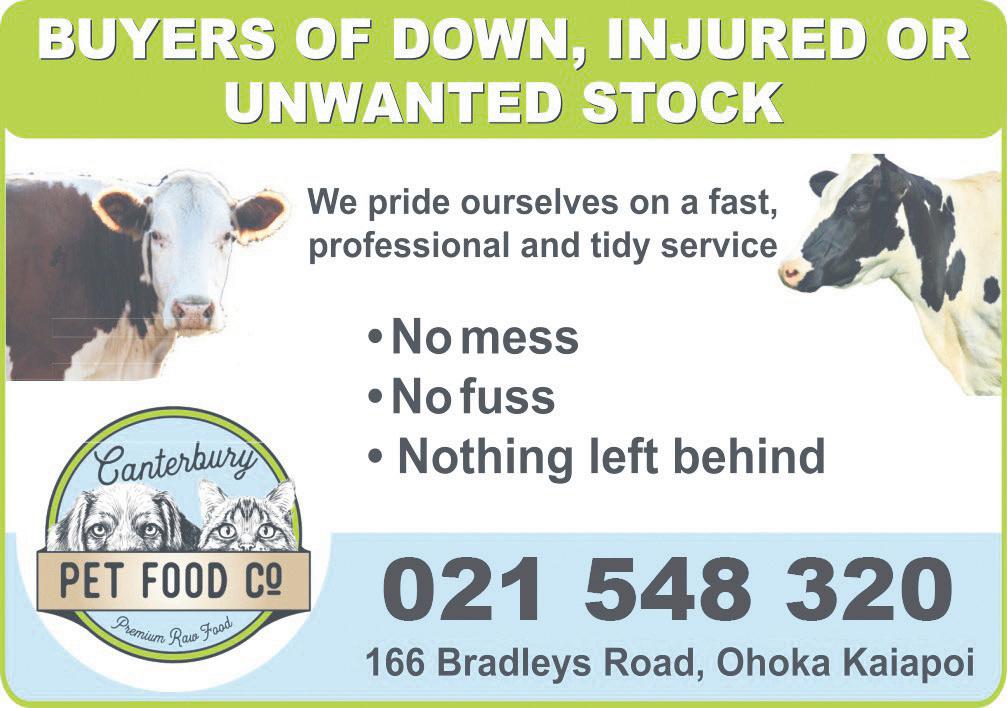
Perhaps the most important aspect is the photos.

Most families will have photos going back many years, as we see when families do a slideshow at a funeral service, so to scan those, print them and then time, place, and people under the photo, it is there forever.

Doing the stories shouldn’t be hard either.
Get family member together, possibly over a couple of drinks, and talk about who did what and where the family spent holidays, who smashed the most windows playing back yard cricket, stories of ponies and learning to drive, bird nesting, starting fires that nearly got out of control etc. etc.
HWEN existentialism
know. What should we do here for the day? We don’t want to go into Dunedin.’
] by Solis Norton
I was bare foot, tee shirt stained from weed eater shrapnel, and unshaven but not smelly.
Contrasting rather sharply, the dozen others in the queue were just off the cruise ship and jabbered excitedly planning their day, all modelling bright and gaudy garb through a haze of eau de toilette.
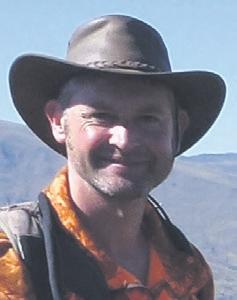


Well I’d finished my modelling for the week. Computer modelling, not fashion modelling. I lack attributes for the latter like curves and allure. Modelling the potential impact of emissions charges on deer farms had left a sour taste and more a scowl than a pout.
Tens of thousands of dollars adding up every year for all of them. The government now even looking to divert this money from being invested back into agriculture to reduce emissions.
An immaculately presented gentleman walked down the queue toward me. Let’s call him George. He says pleasantly ‘You’ll
Take a look at the cemetery, I thought, there’s a few of your countrymen tucked in there. Then drown your sorrows before your boat leaves.
“There’s a beautiful bush walk up passed the old church and garden of remembrance” I replied, “it dips down to a historic restaurant on the water’s edge, from there it’s a short jaunt back to your ship.” He was delighted.
I looked over at the buttocks of ‘Ovation of the Seas’, she was berthed with them pointing directly up the main street.

A truly colossal spectacle, and the third cruise ship back to Port Chalmers since Covid, tourism recovering as the media report a new global high in emissions this year. COP27 doubtless even more hot air and no effect.
This was the peculiar moment.
We now carve from our food system resources to facilitate cruise ship mentality, at the same time decrying inefficiency and hubris in wanton consumption.
How did we become so fully impaled on our own opposing poles of ethos? The dichotomy so tight that nobody knows what to think
let alone what to do. So we do nothing.
There is a sense of being refreshed and enlightened after these moments. Relief too, like you’ve just actually seen what you’d

A very good mate of mine, Harley Jenkins, went further and had a book written, and I admit to re-reading it quite regularly simply because of the mischief, fun and hard times he and his lovely family went through.
As the Nike advertisement says: Just Do It.
been looking for.
“George” I say, “meet you for a pint at four at that restaurant and you can tell me about your adventures.”
CANTERBURY FARMING December 2022 51
As a funeral celebrant I hear so many amazing stories about folk and their families plus the history of family farms.
We need your help as much as you need ours Canterbury West Coast Air Rescue Trust. PO Box 20262, Christchurch 8543 DONATE ONLINE EMERGENCY DIAL 111
An existential moment occurred last Saturday morning, in the queue at the money machine in Port Chalmers.
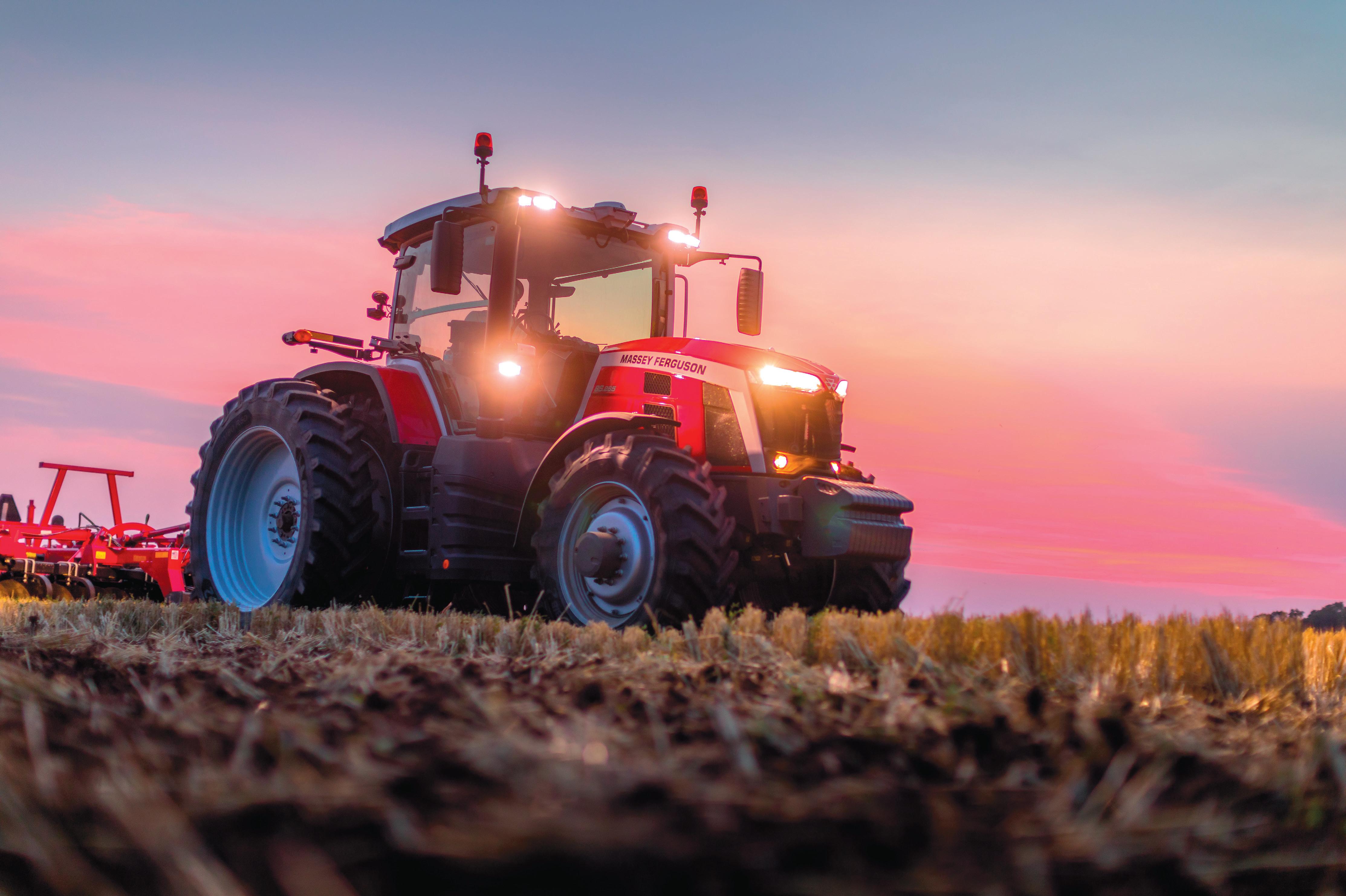


52 December 2022 CANTERBURY FARMING NEW MF 8S SERIES 205 – 265 HP EXPERIENCE A NEW ERA ORDER NOW NEW DYNA 7 AND DYNA E POWER TRANSMISSIONS / 25% INCREASED EFFICIENCY AND 5% BETTER FUEL ECONOMY. COMES WITH FREE 5 YEAR MF CONNECT TELEMETRY SUBSCRIPTION AND OPTIONAL PRECISION FARMING SUITE















































































 Foundation for Arable Research
Foundation for Arable Research































 ] with Todd muller ] National Party Spokesperson for Agriculture
] with Todd muller ] National Party Spokesperson for Agriculture













































































































































 ] Findex Agribusiness Partner
] Findex Agribusiness Partner
































































 by Kent caddick
by Kent caddick

















































































































































































































































































































































 by Vanessa Winning
by Vanessa Winning















 ] IrrigationNZ CEO
] IrrigationNZ CEO































 ] by Andrew curtis ] Primary Insight
] by Andrew curtis ] Primary Insight



































































































